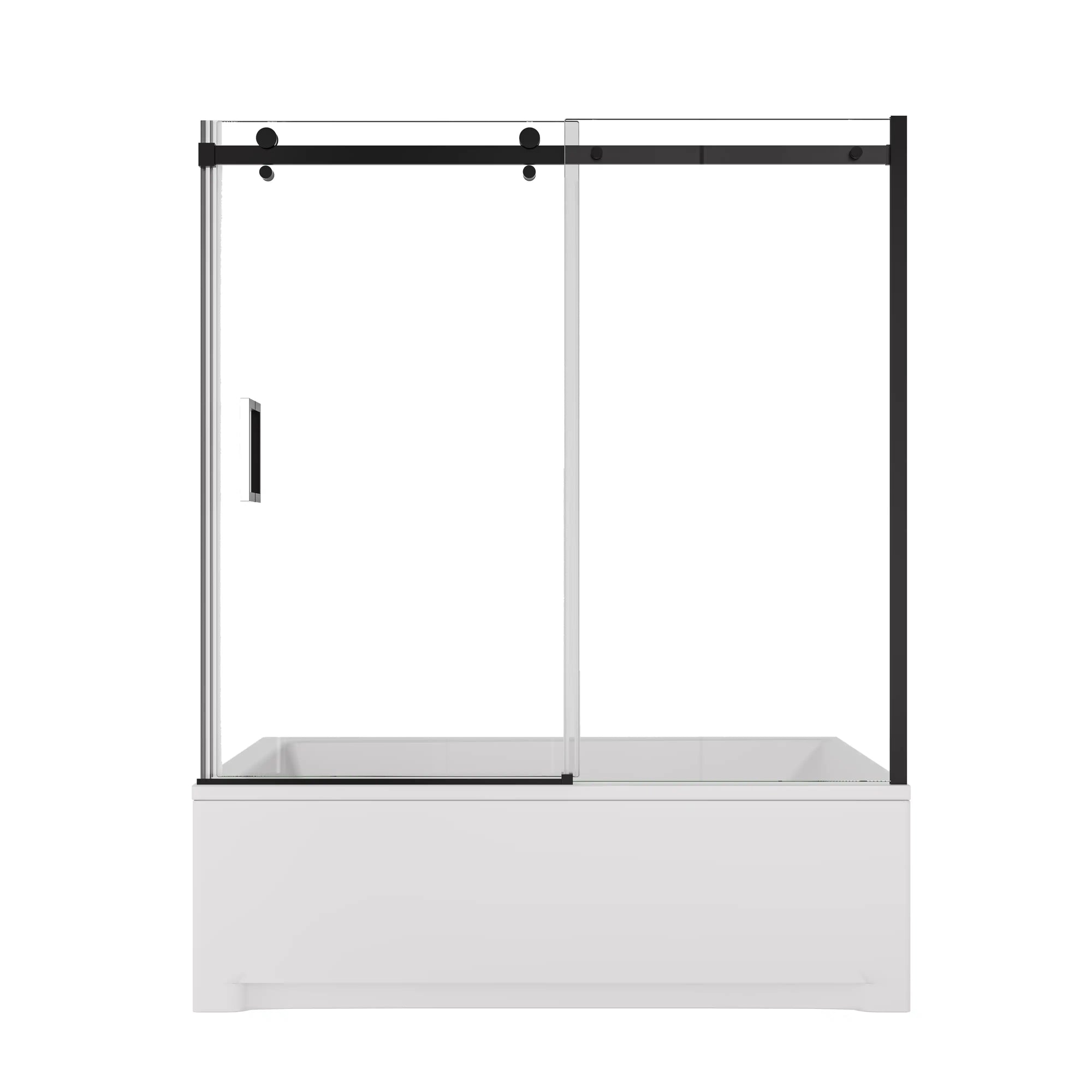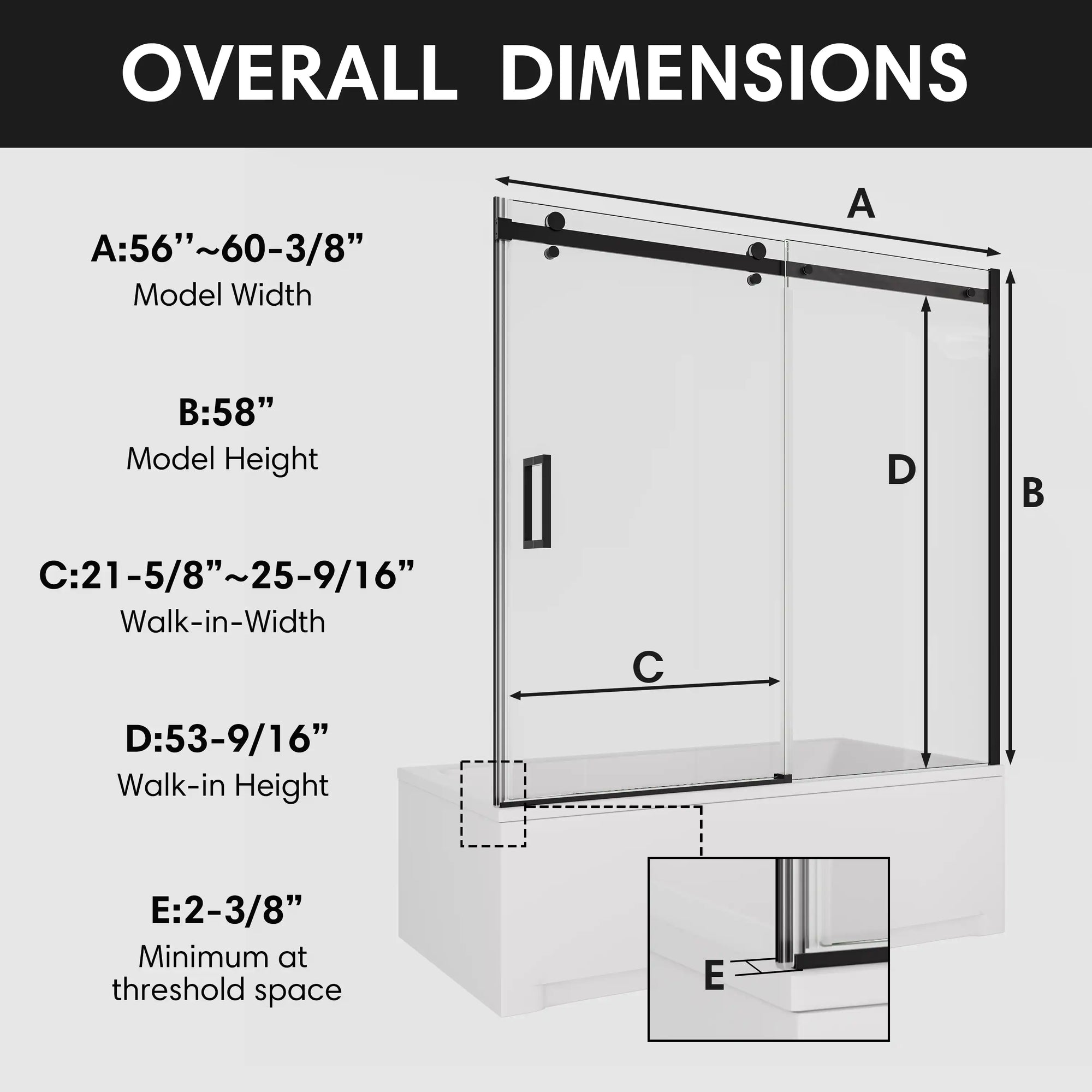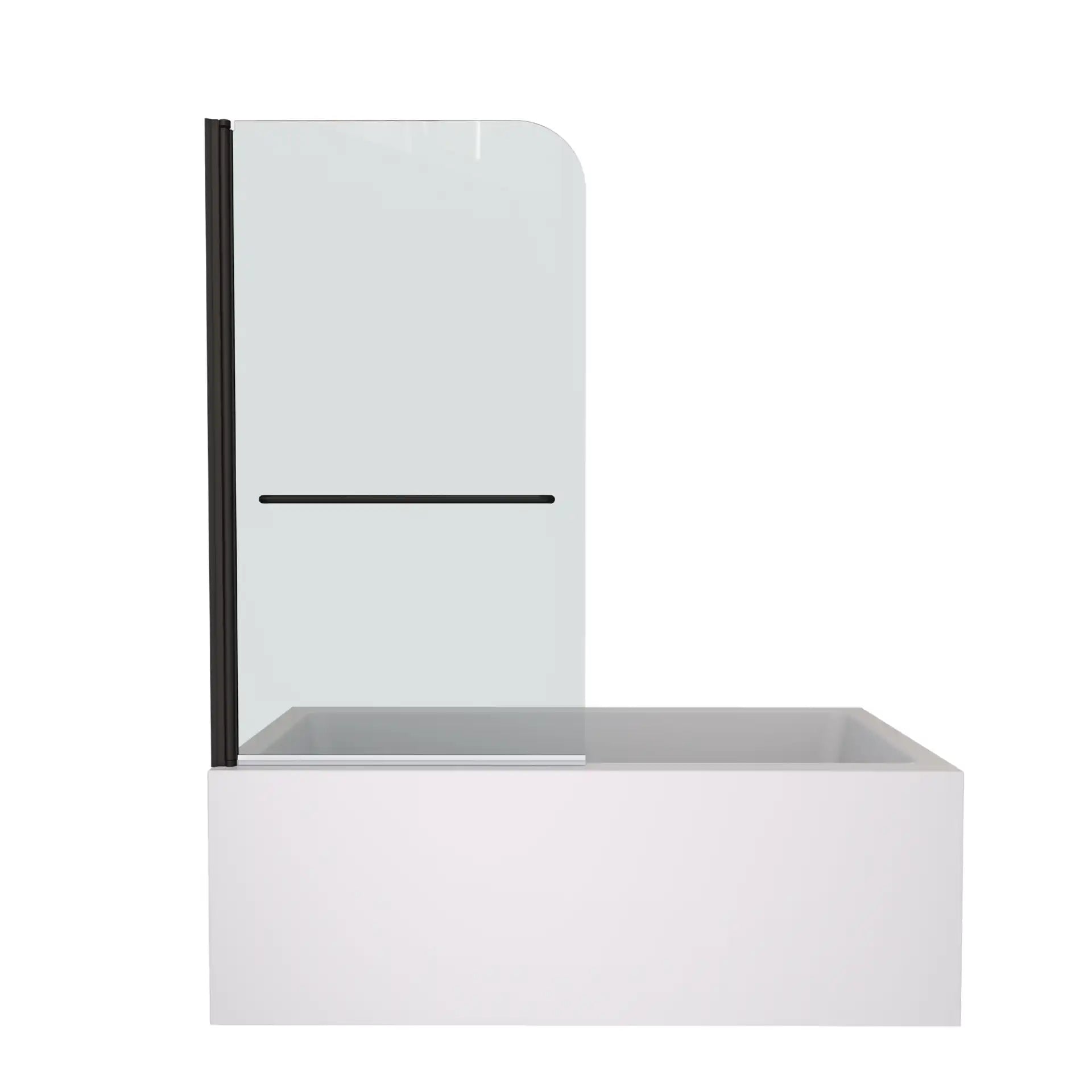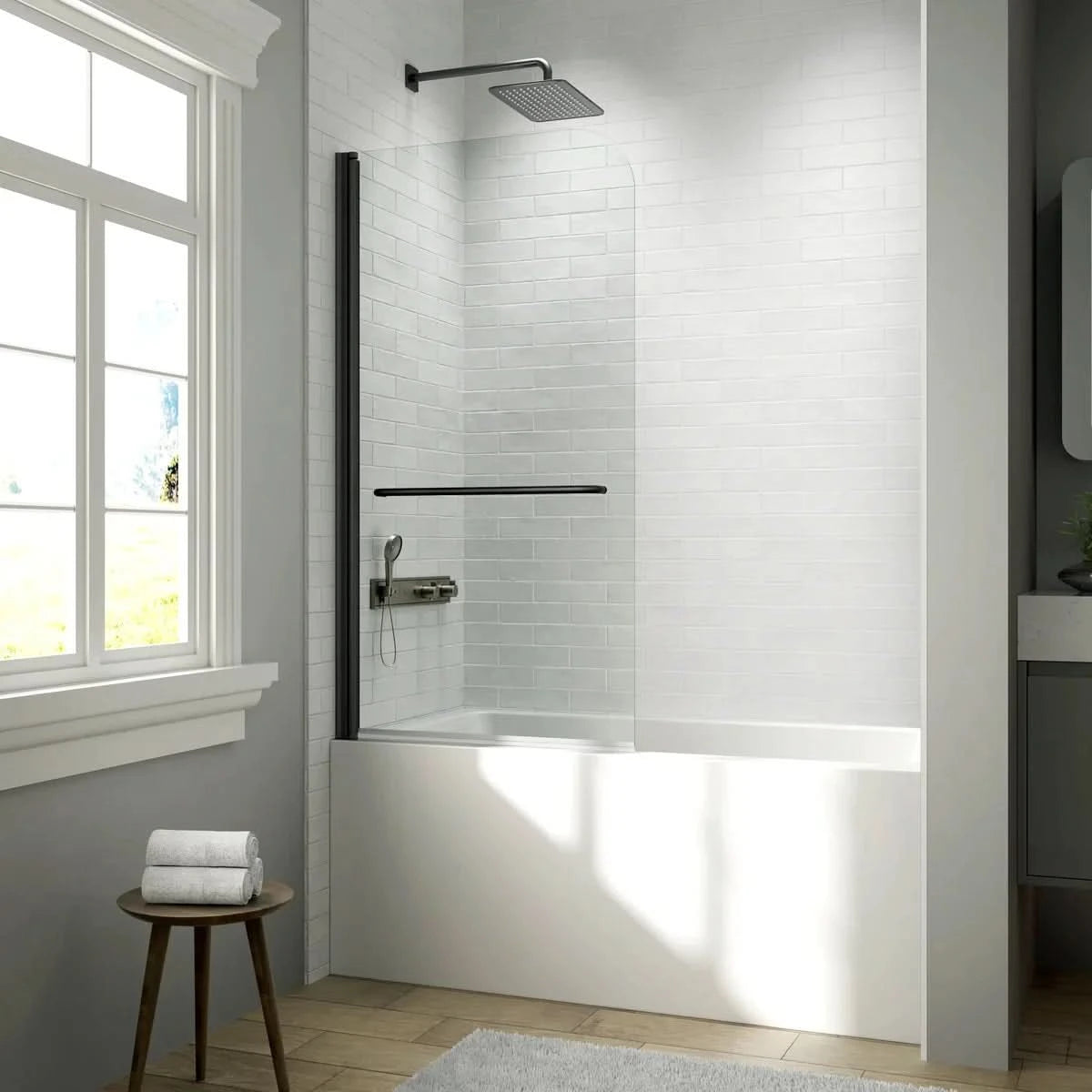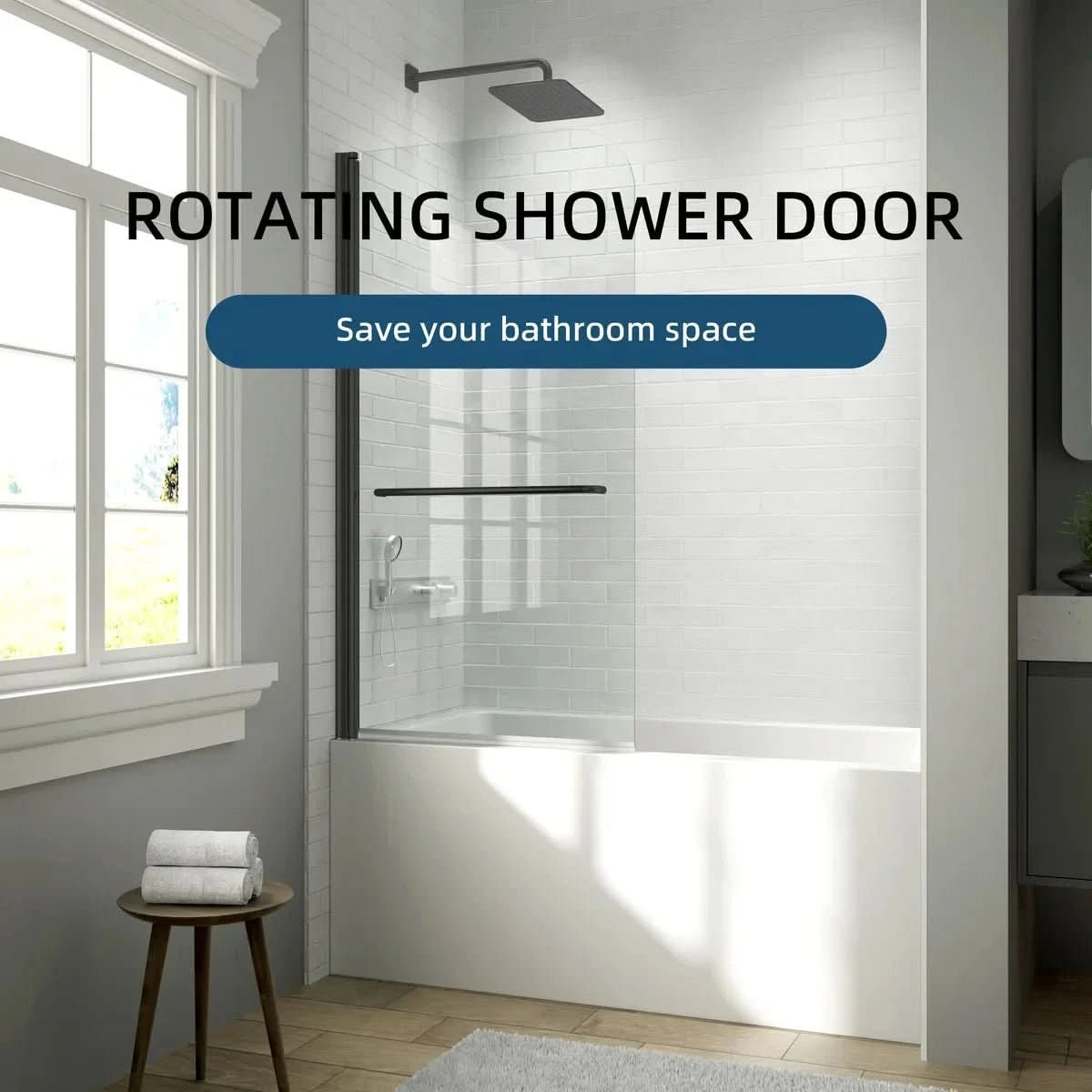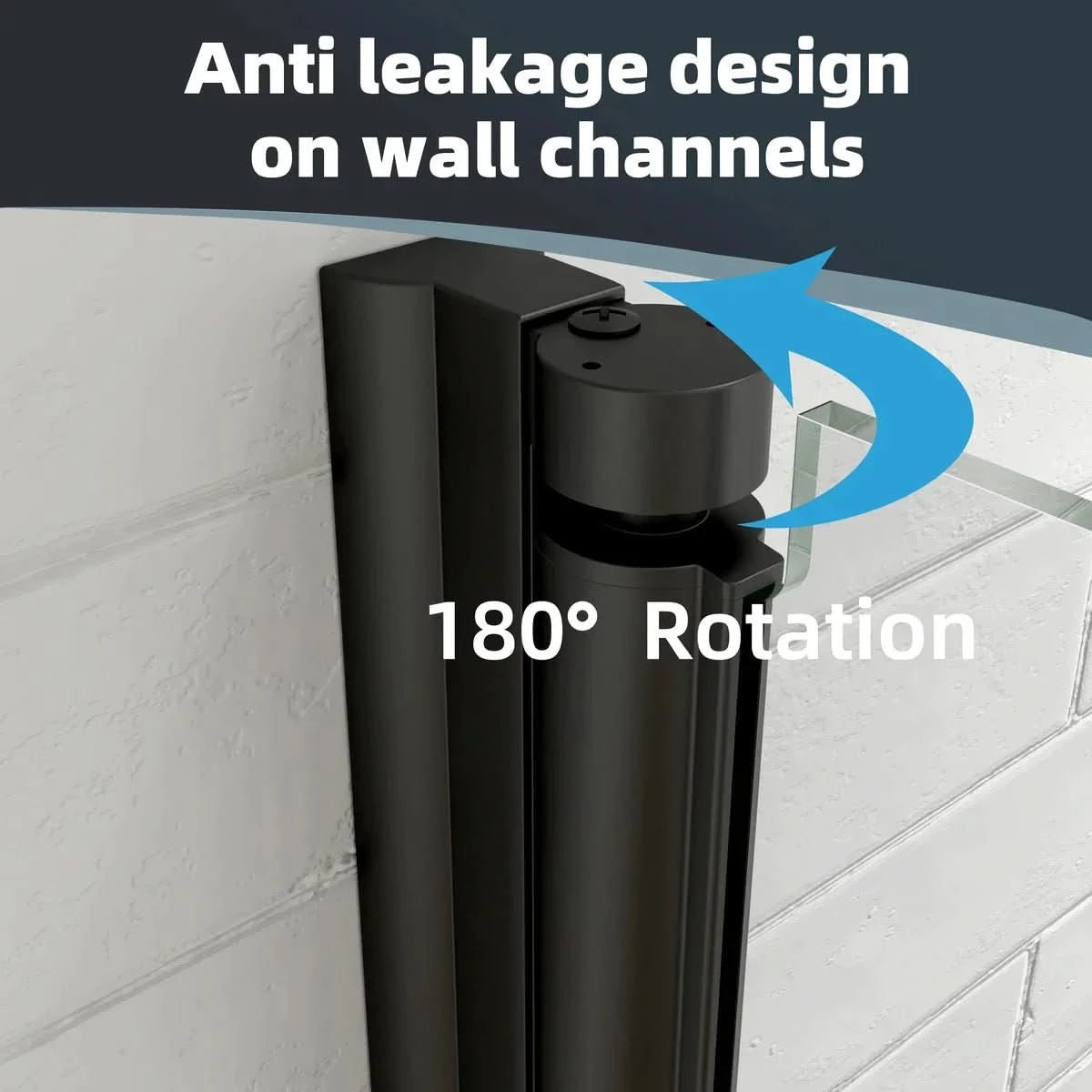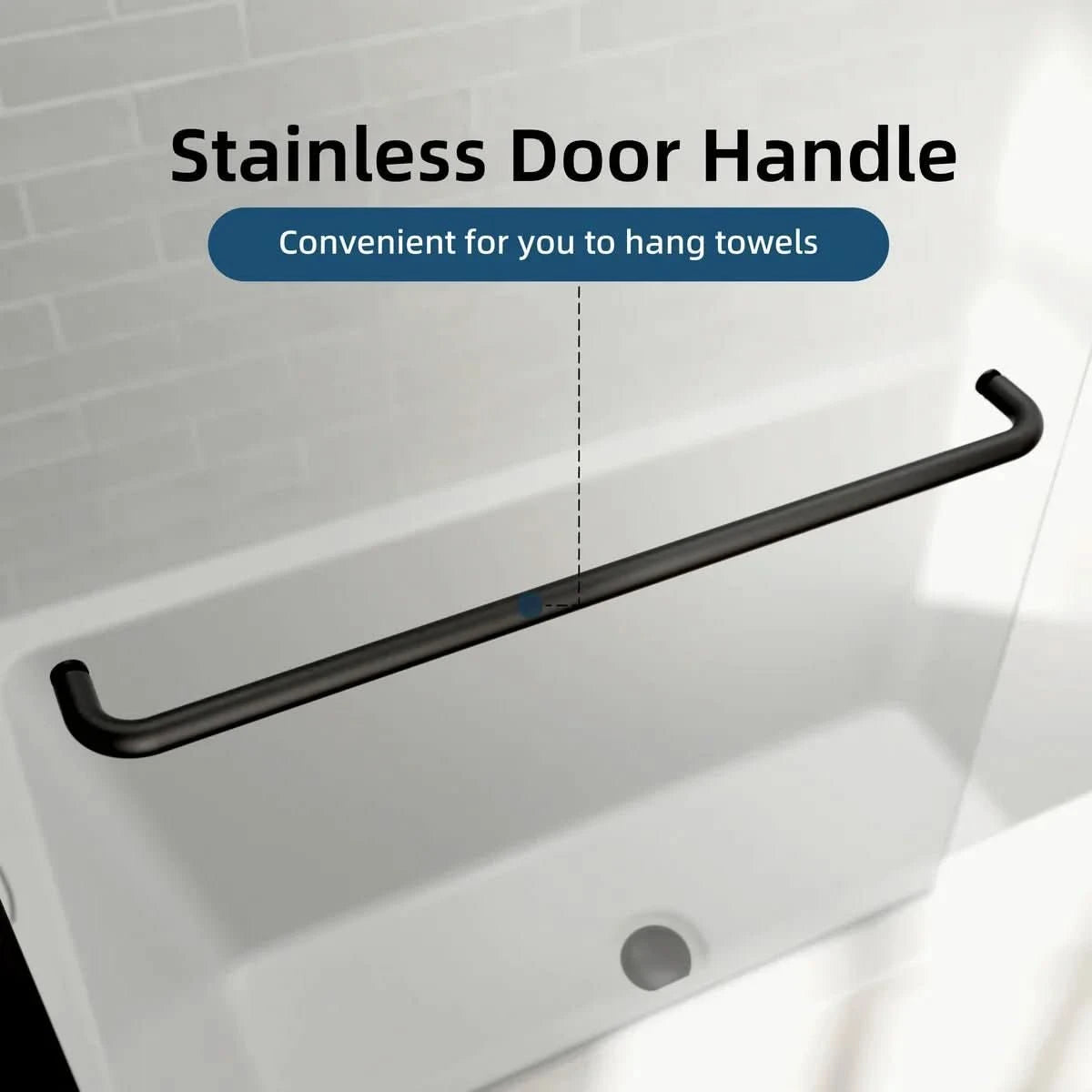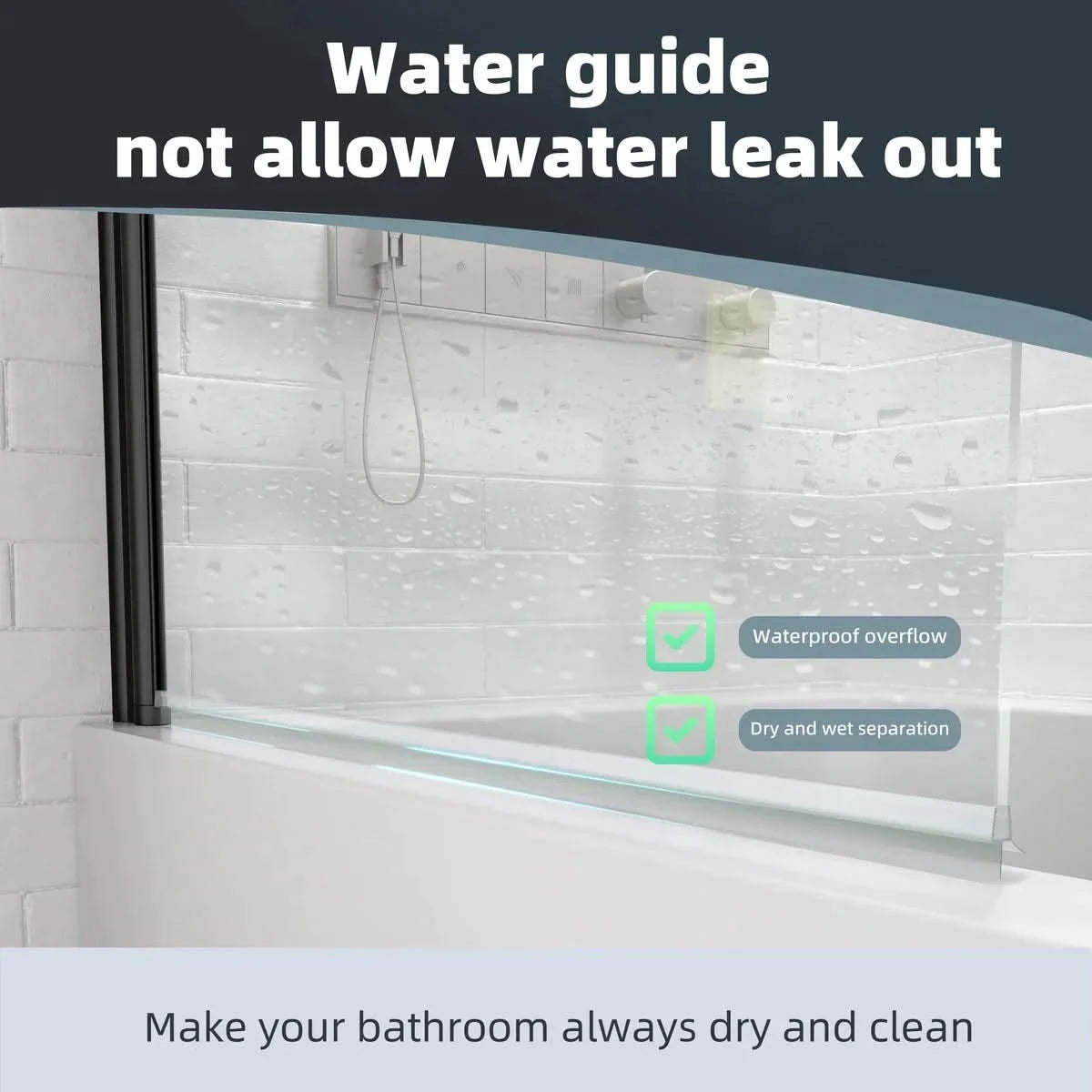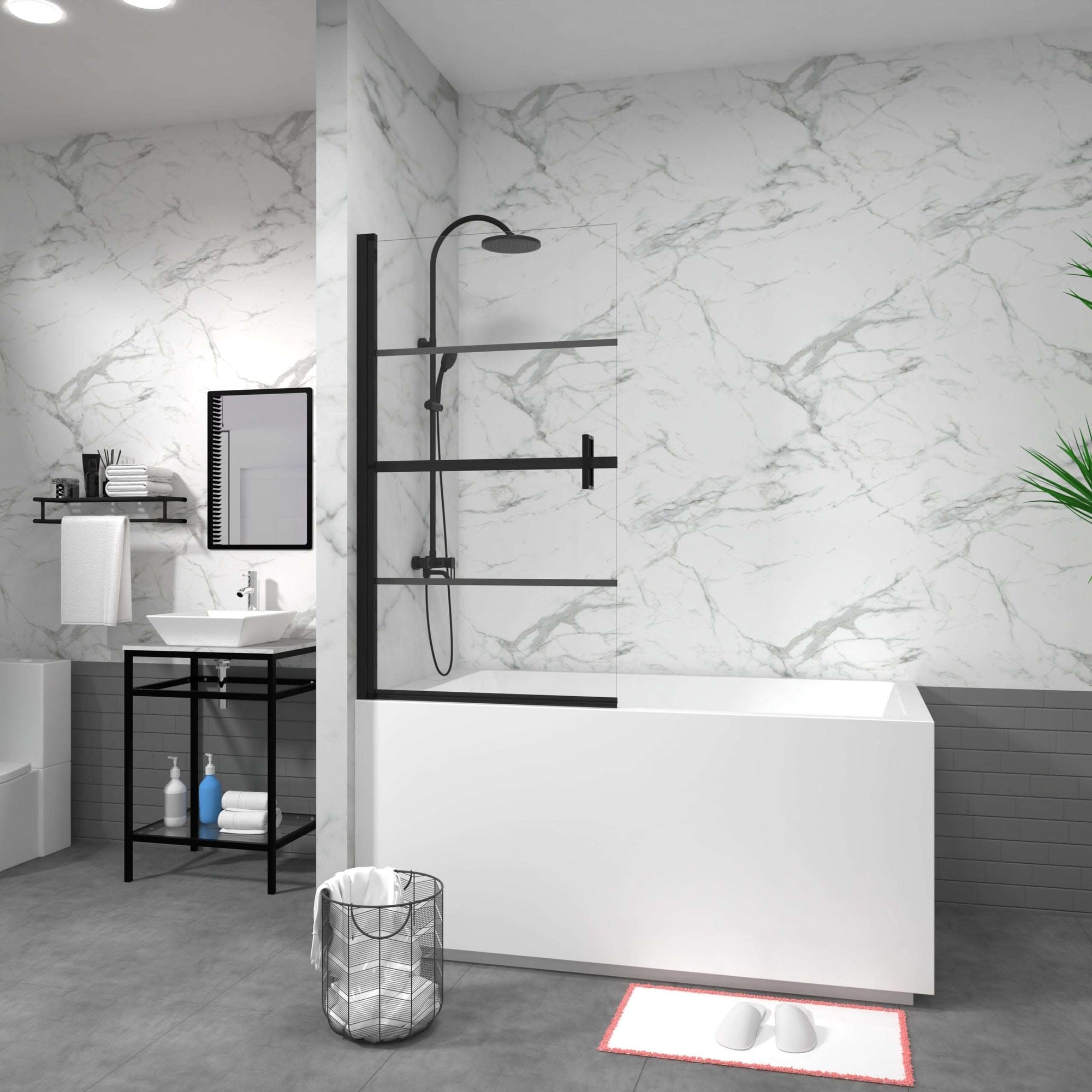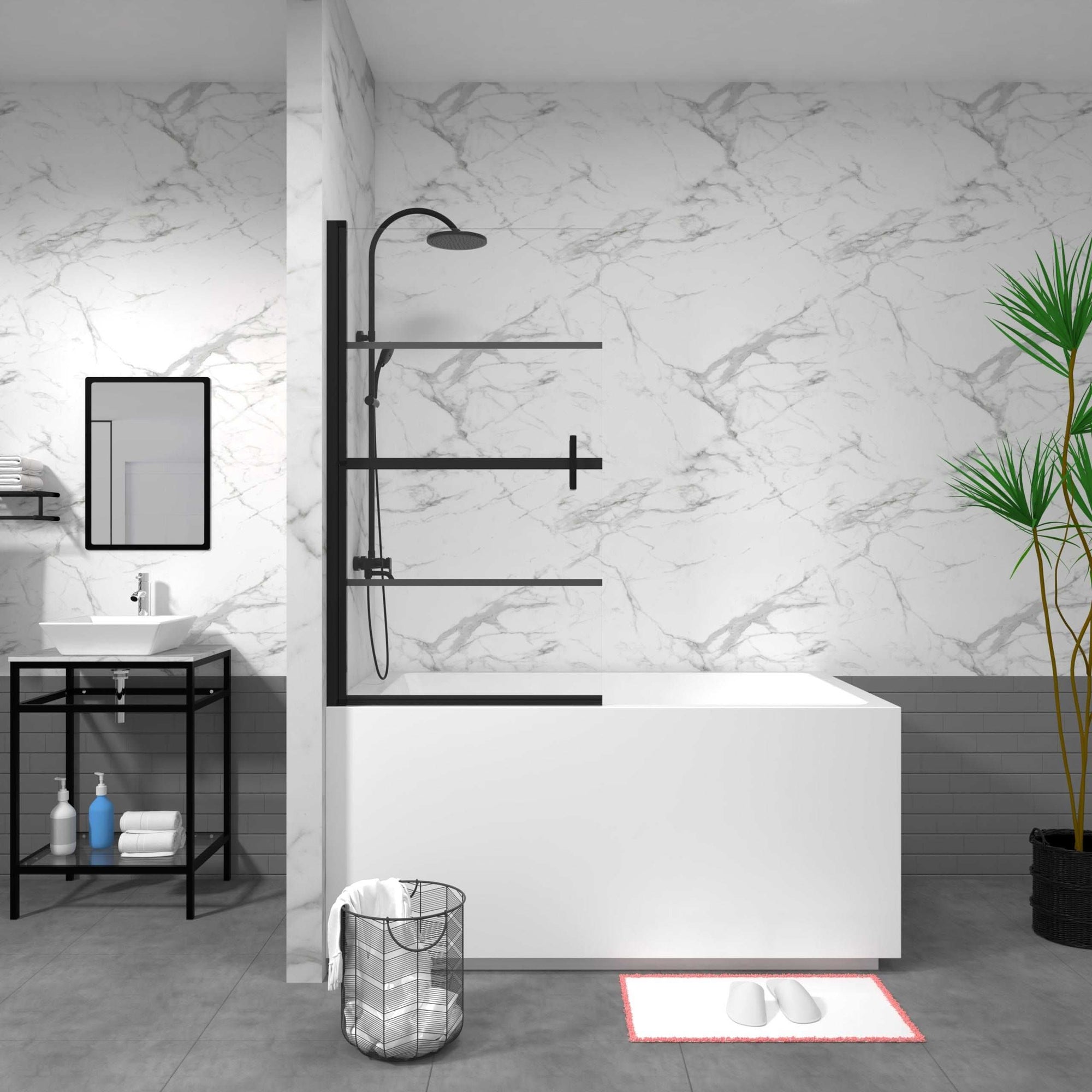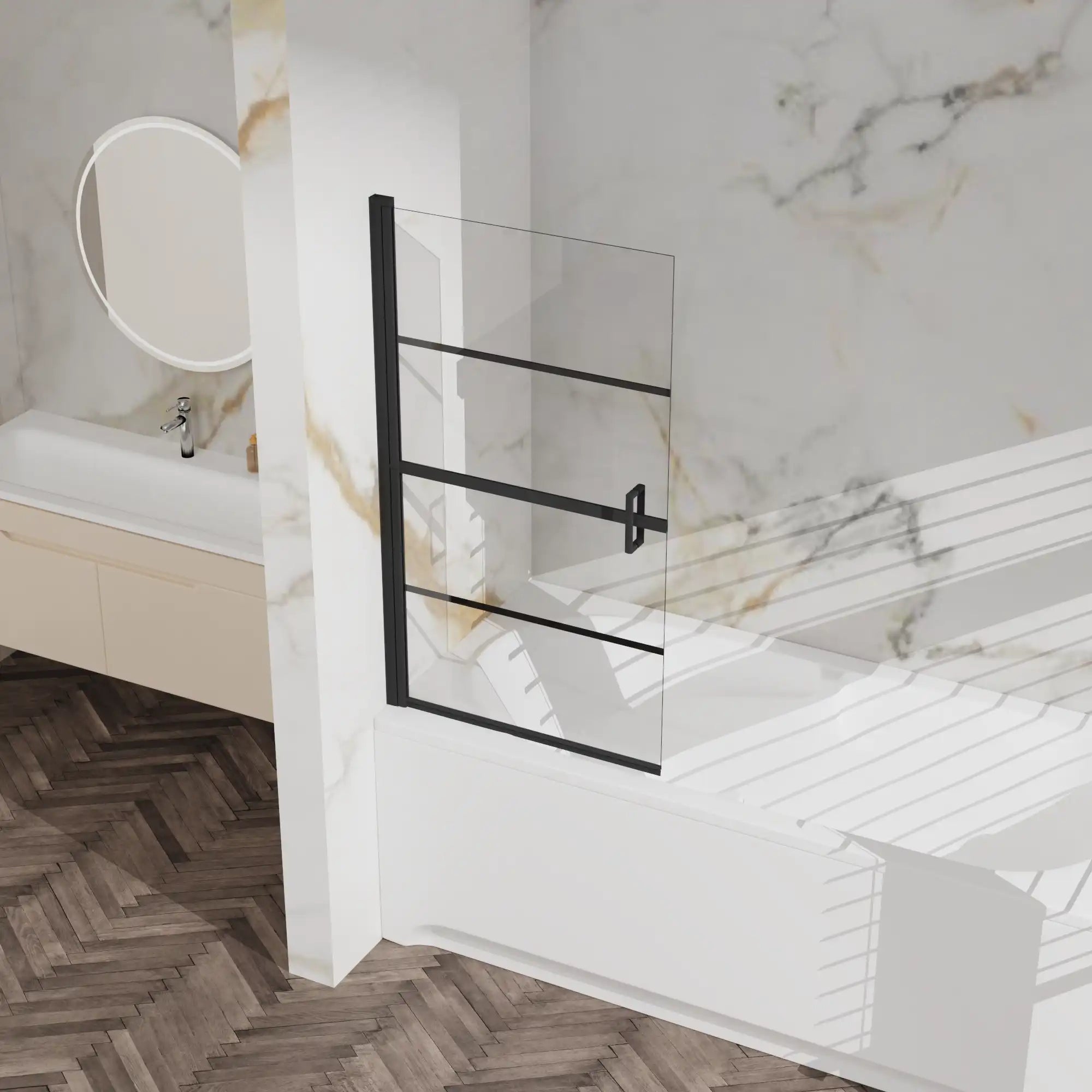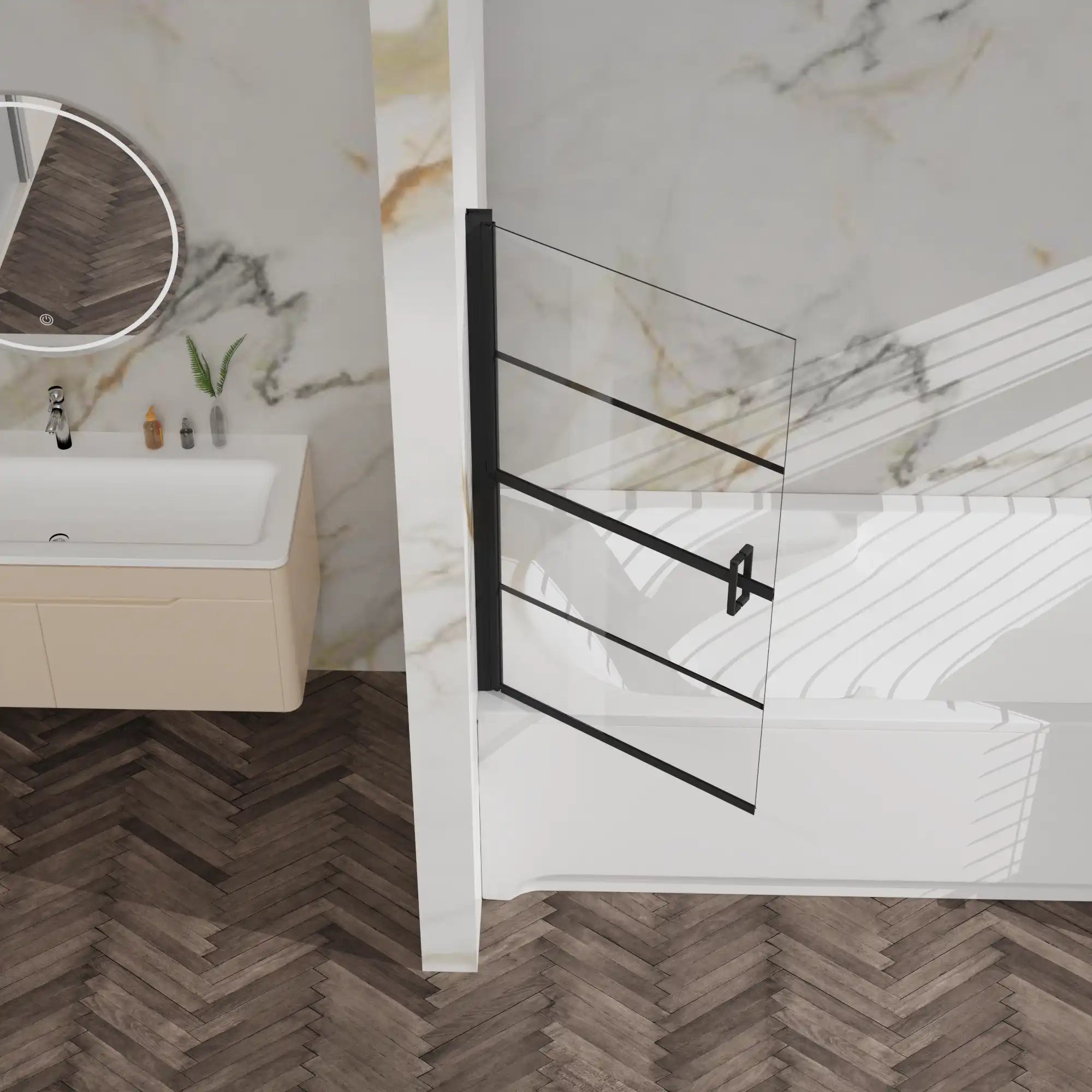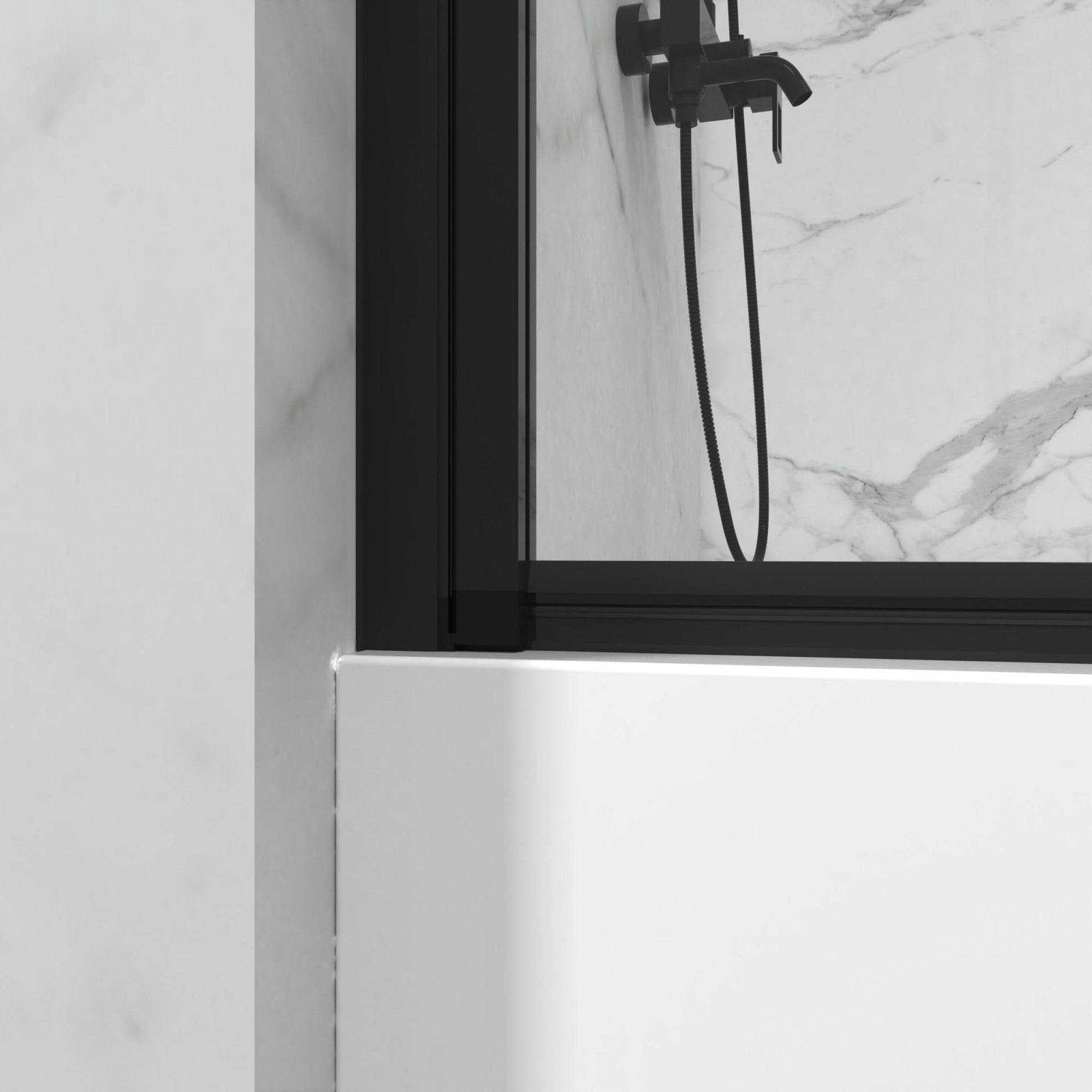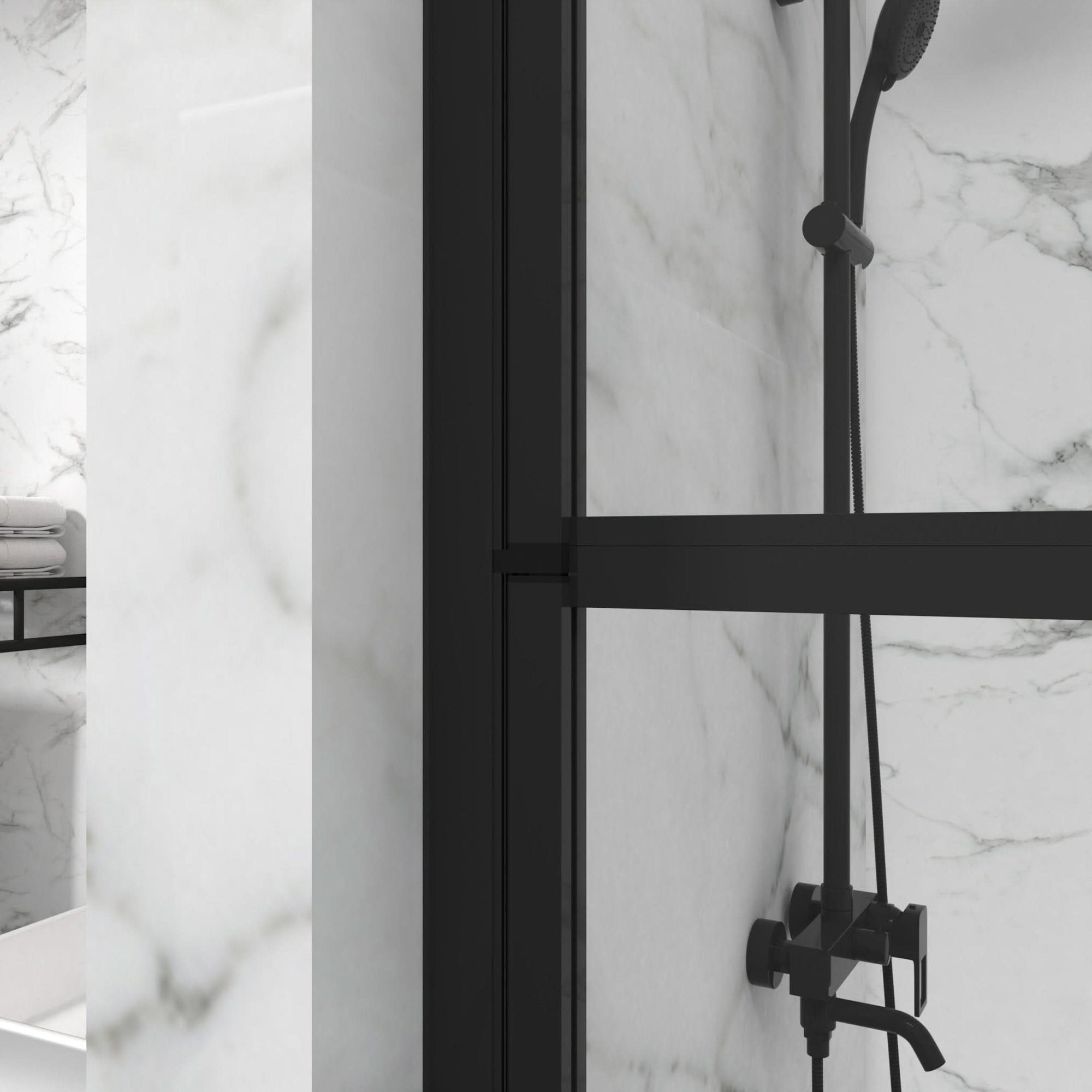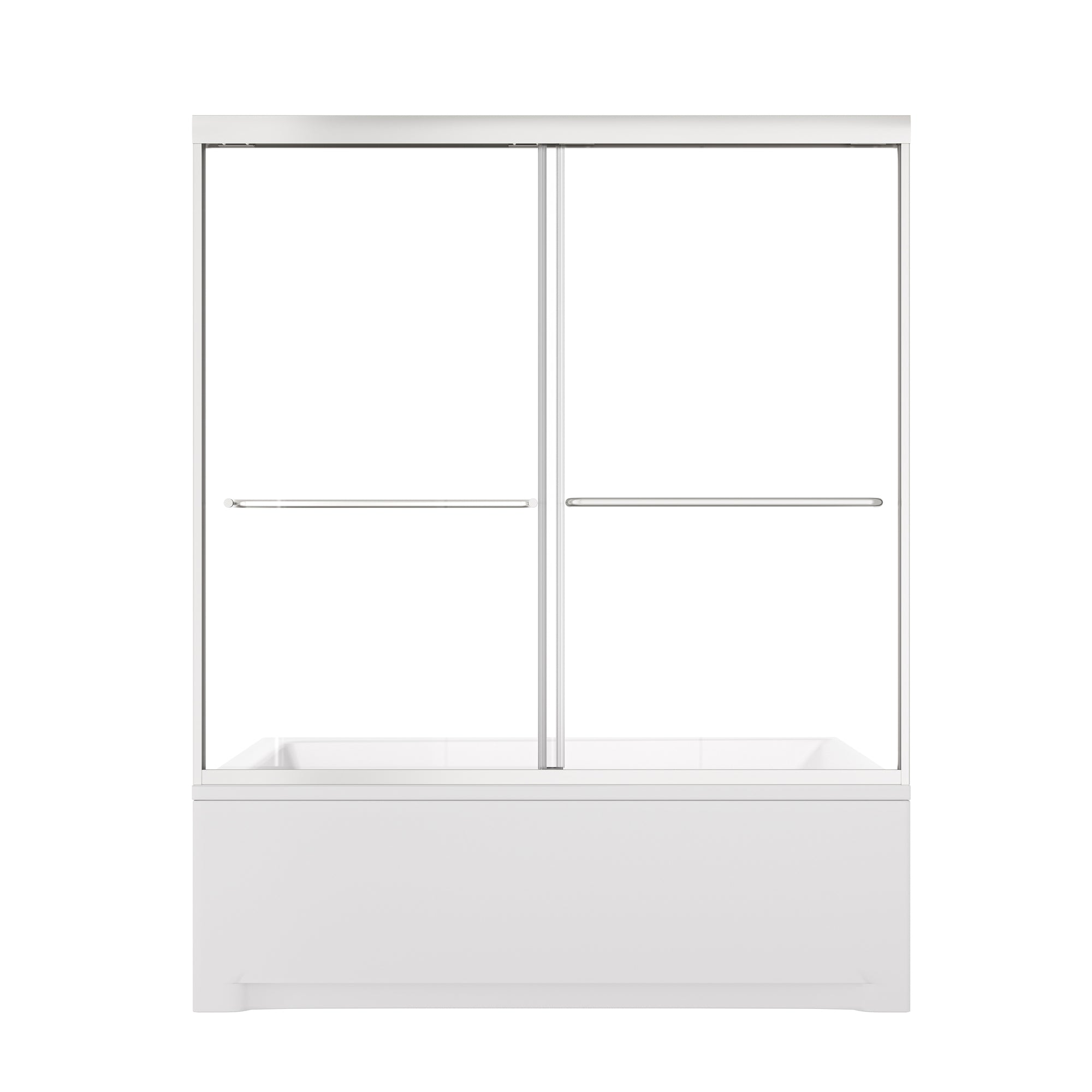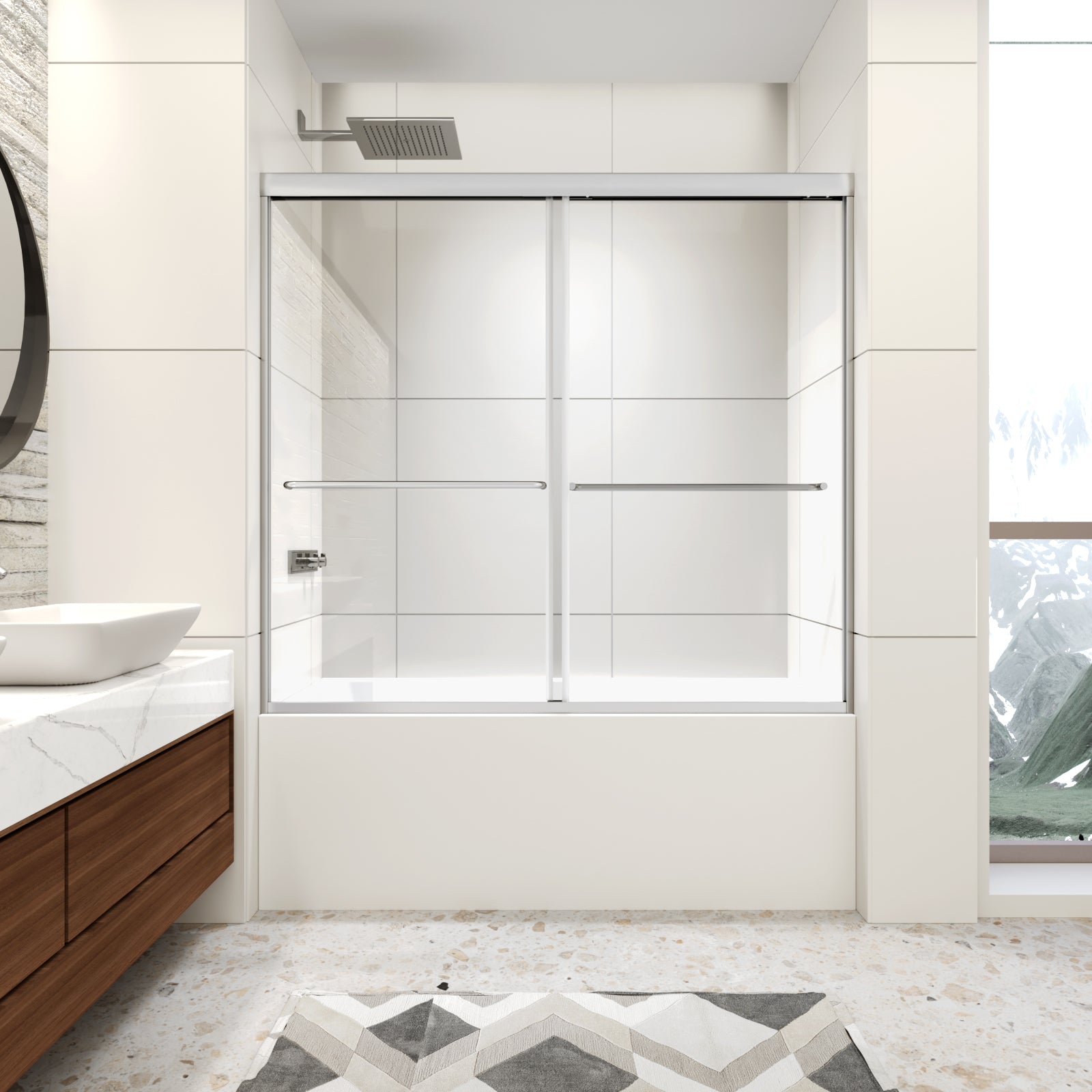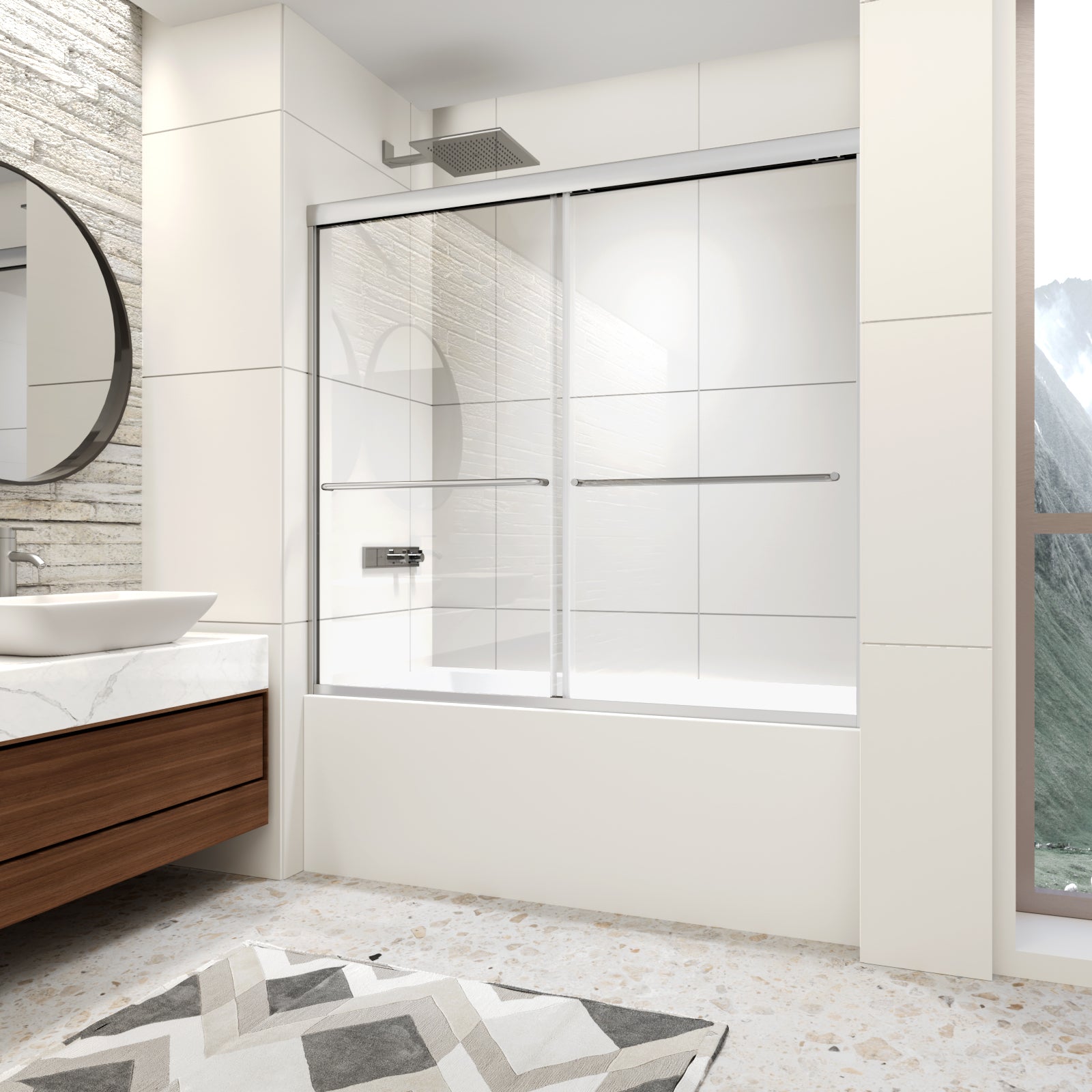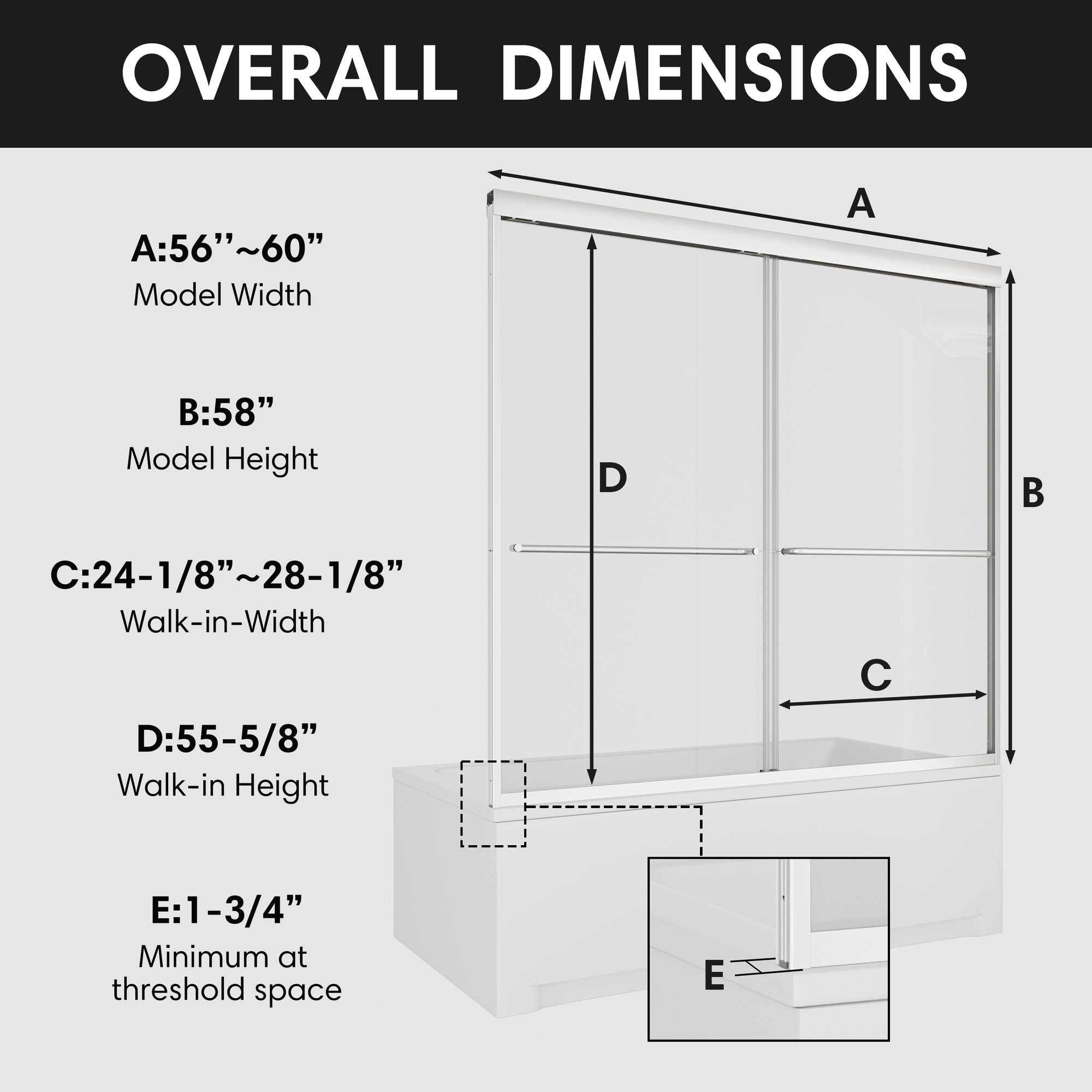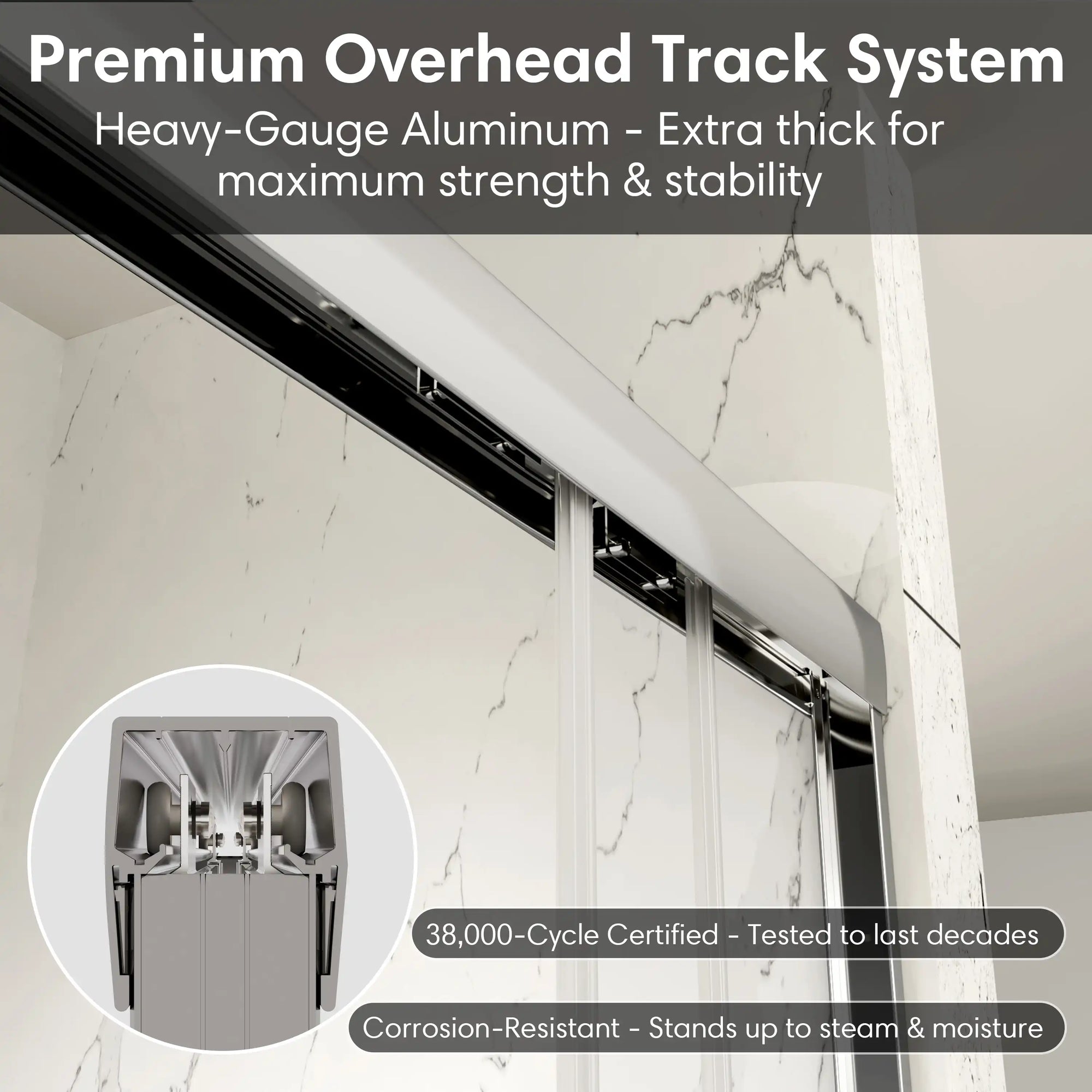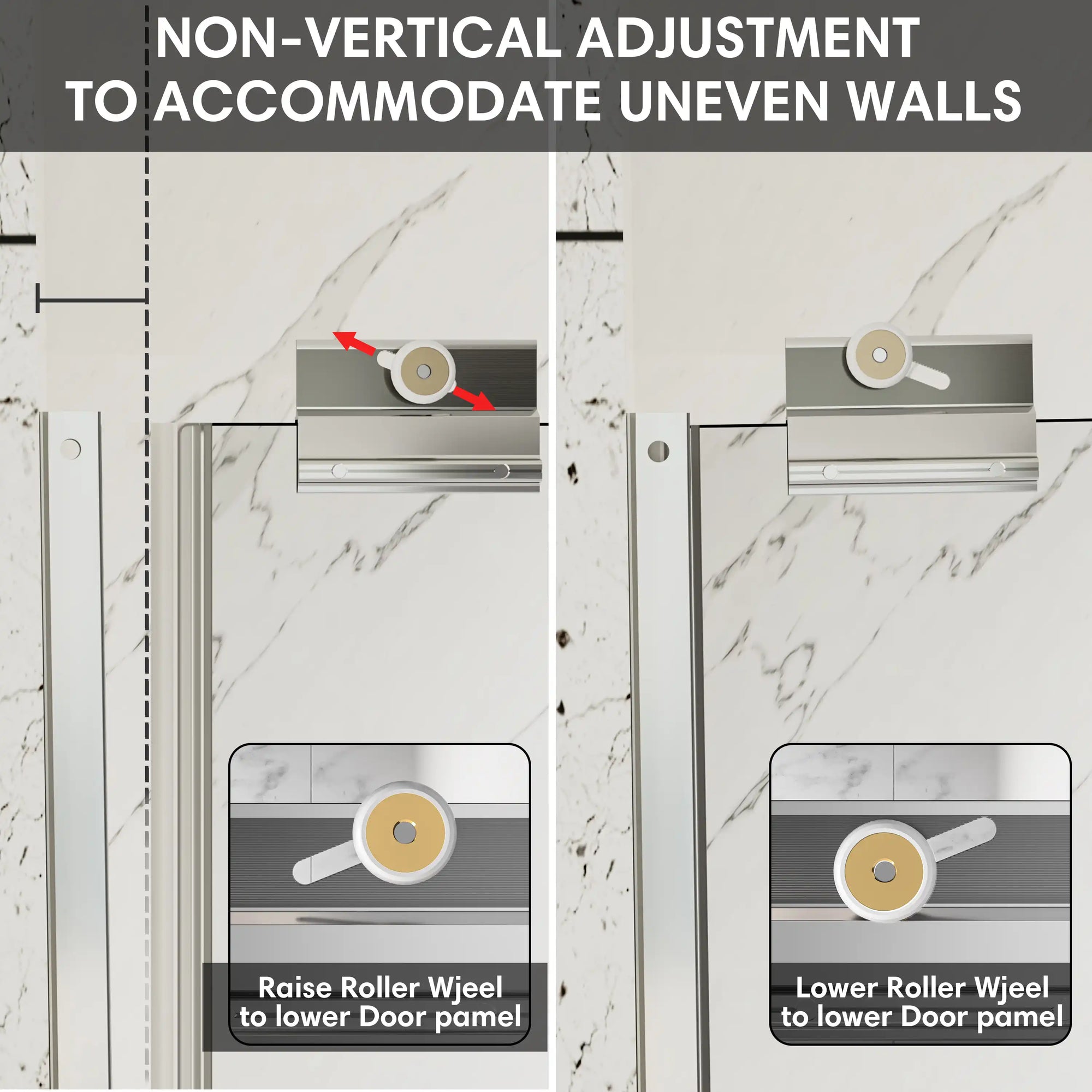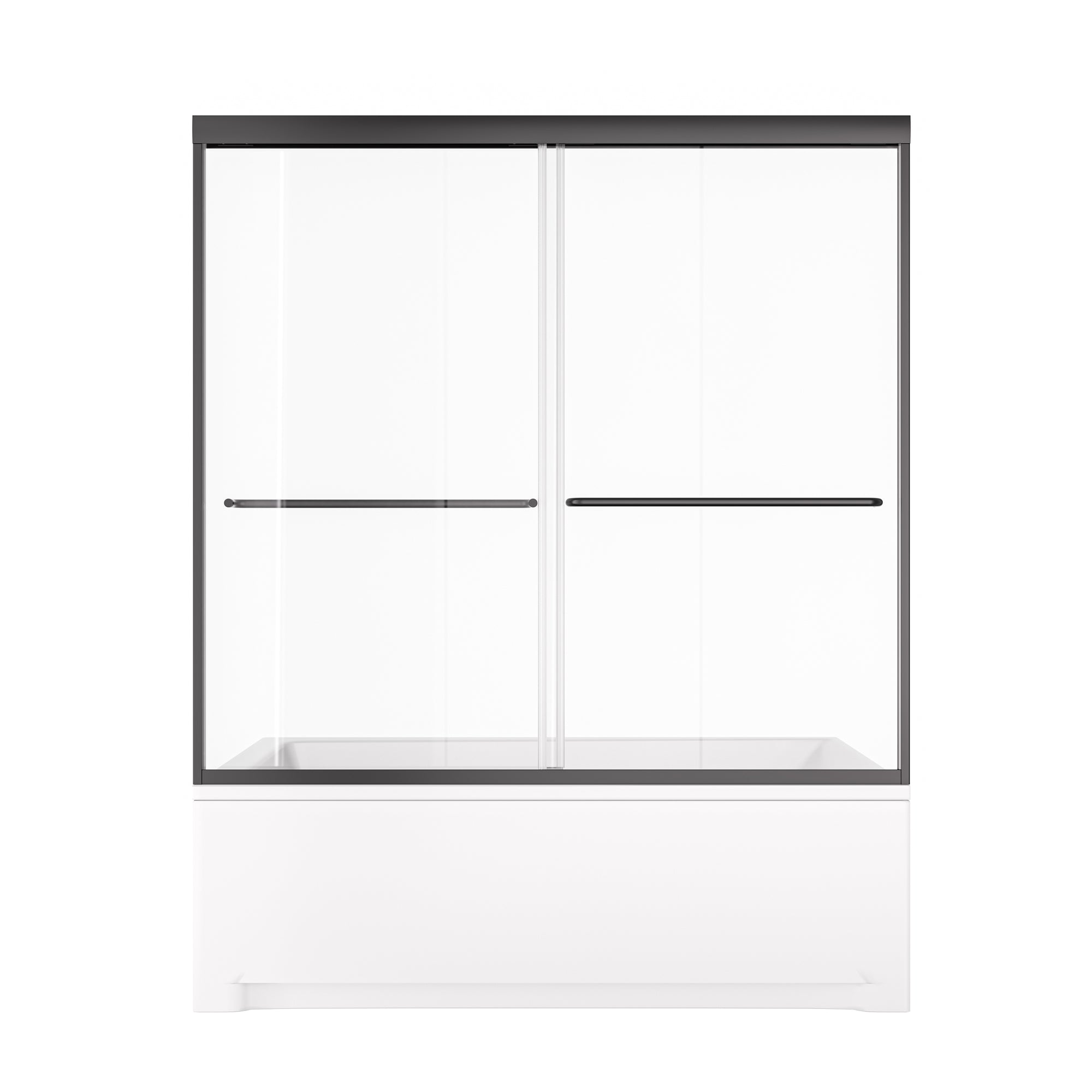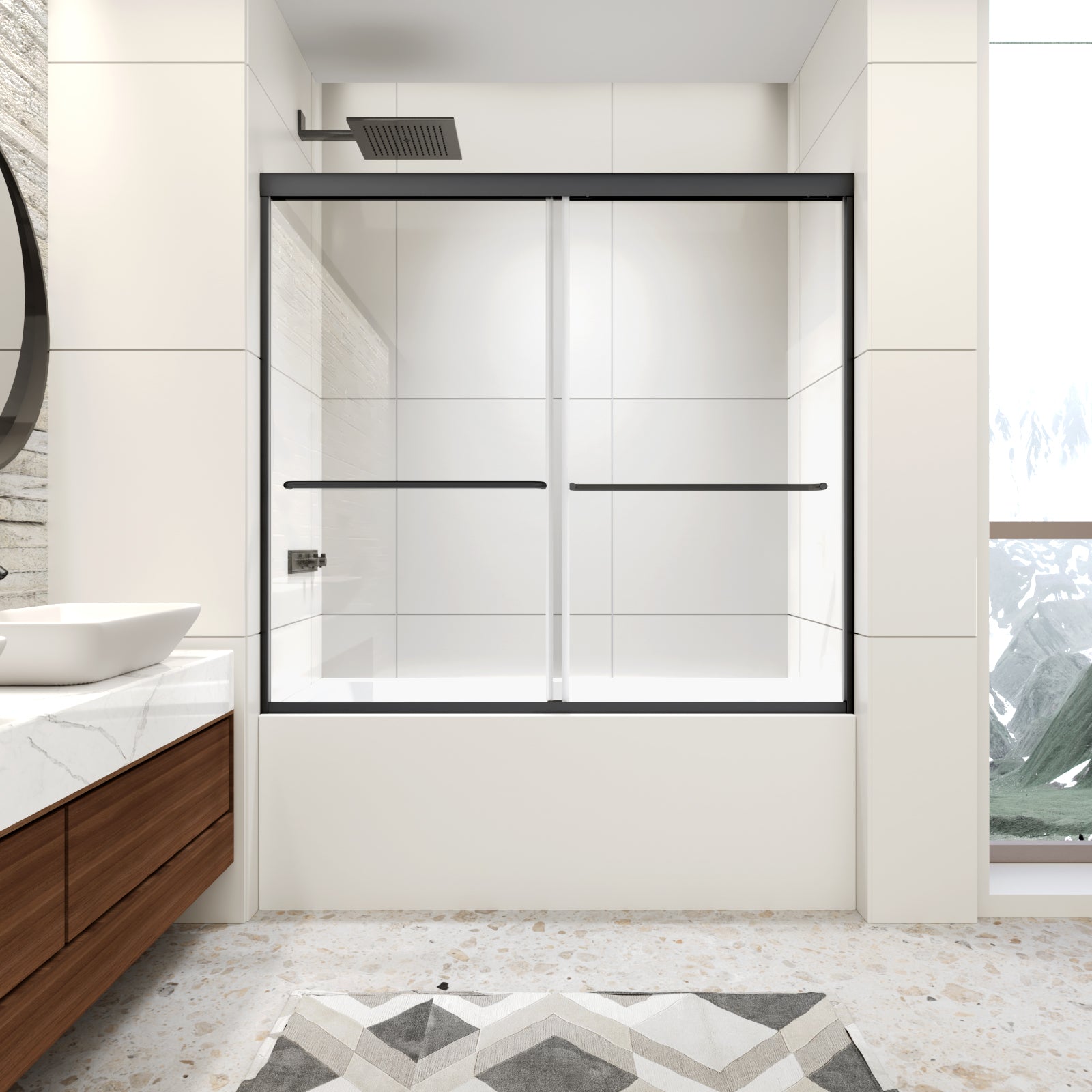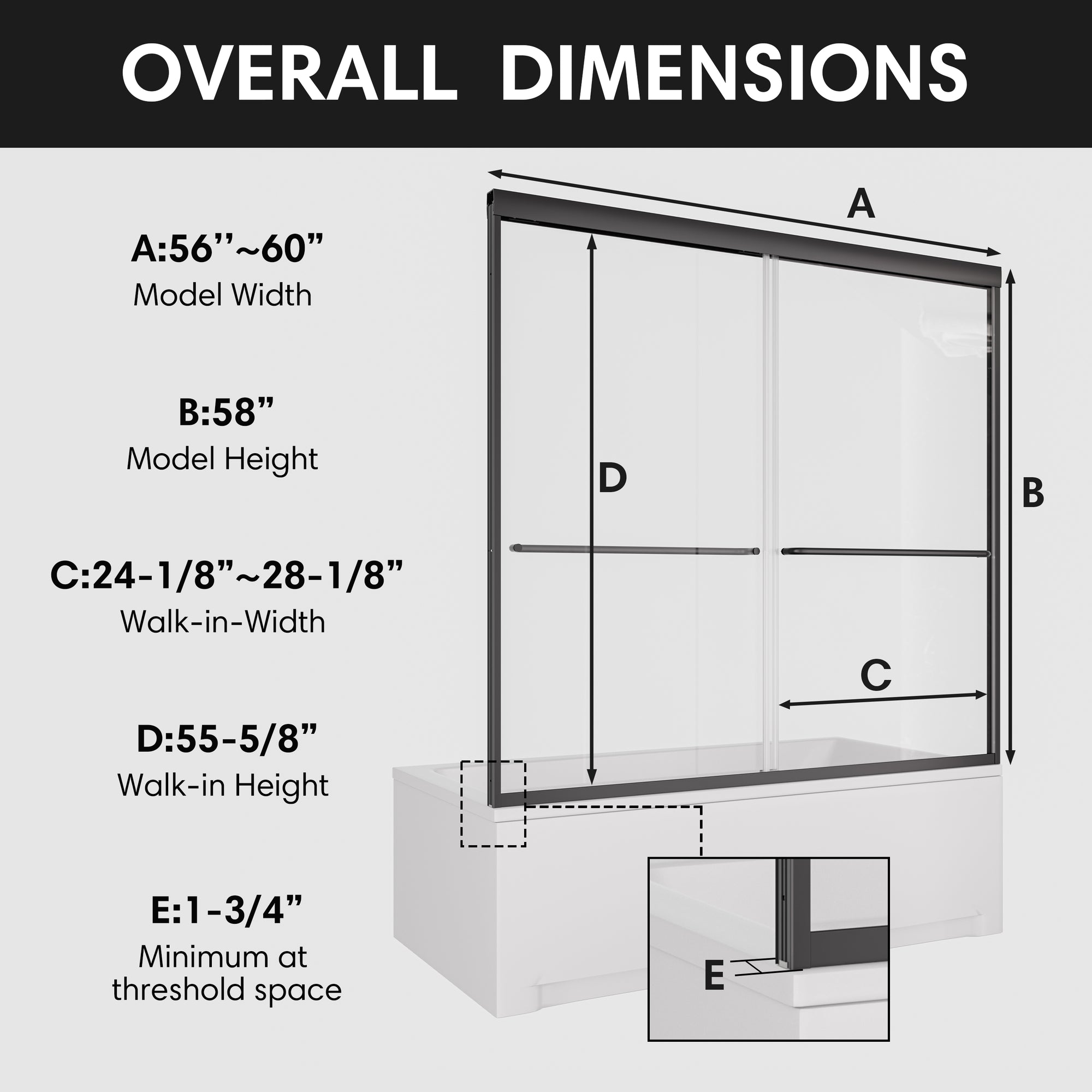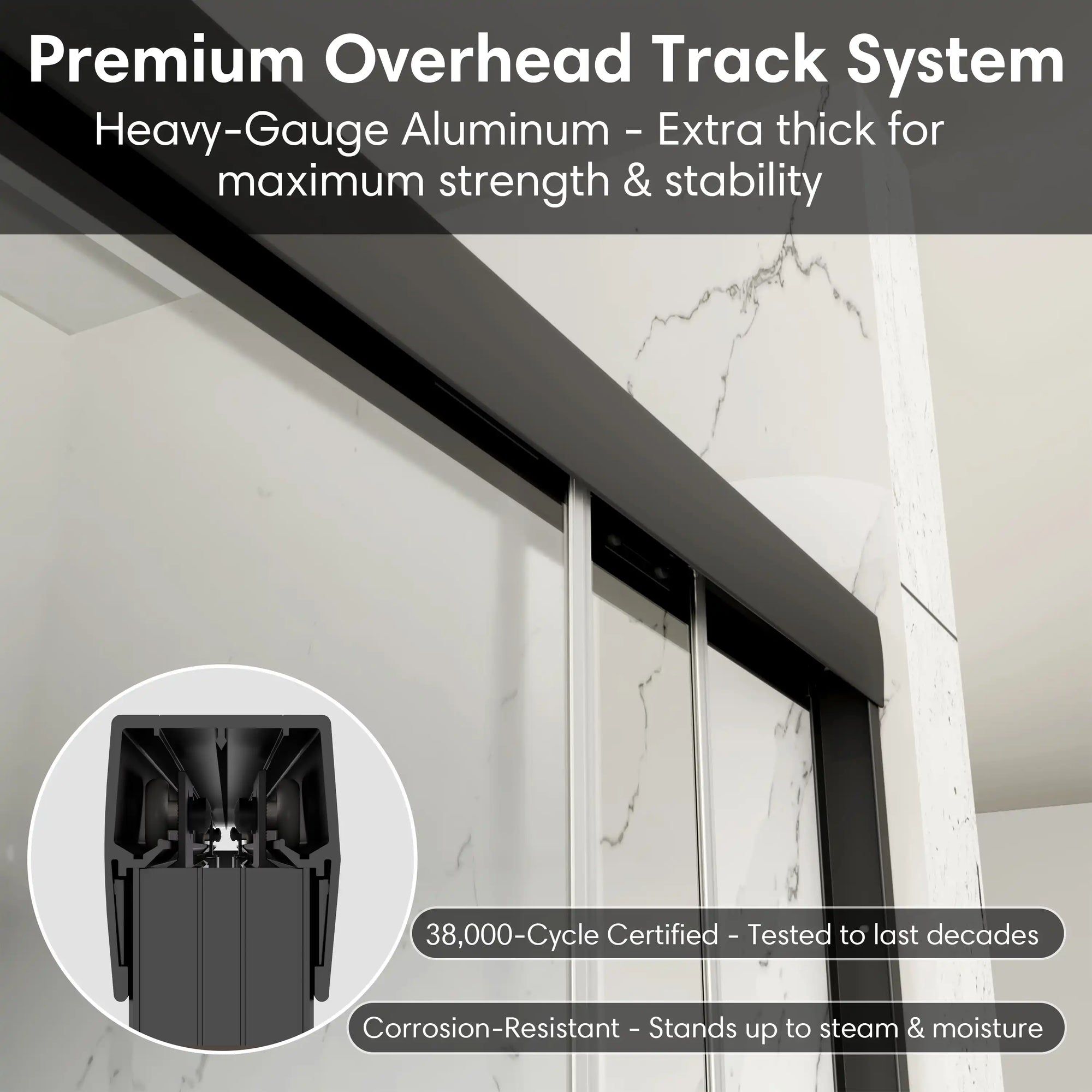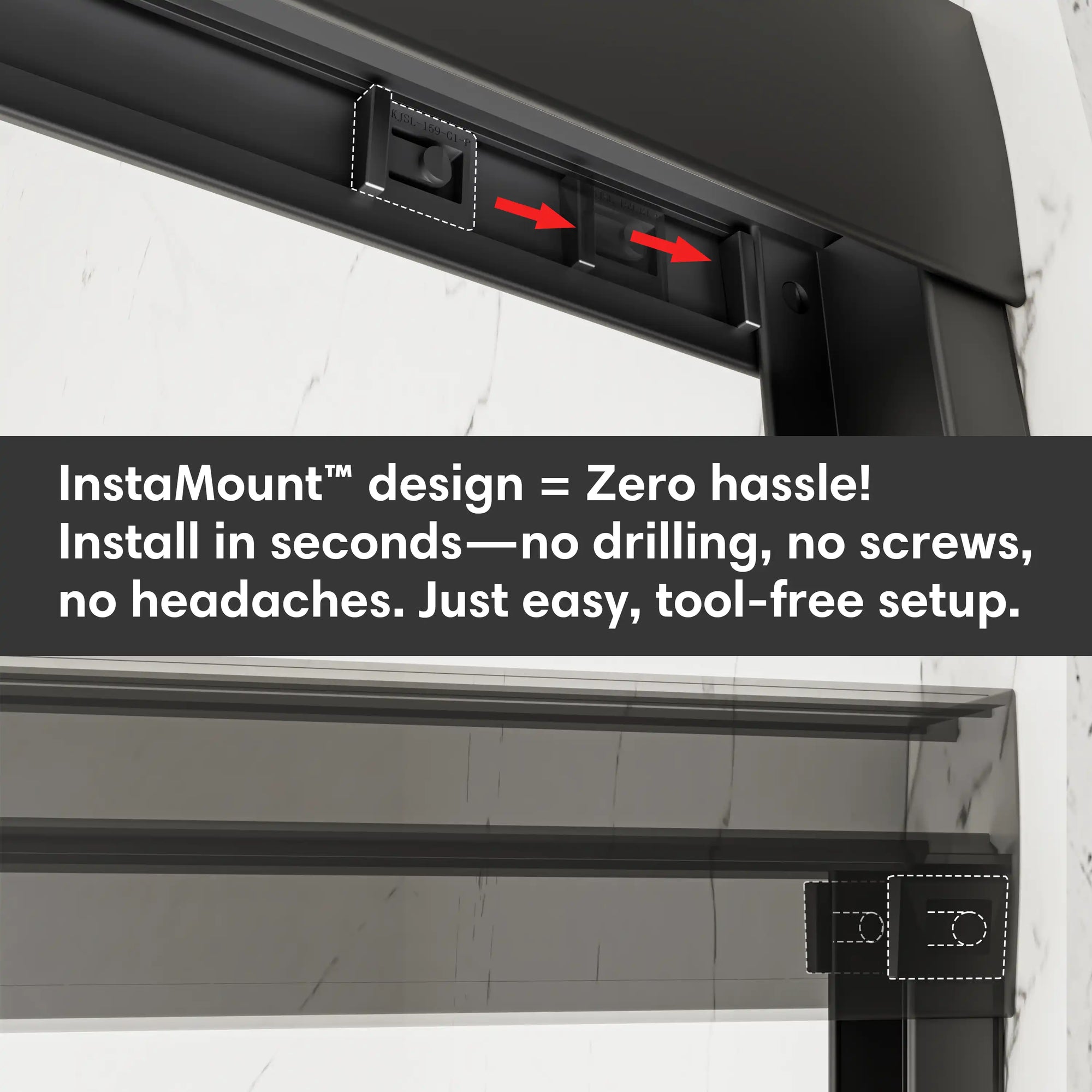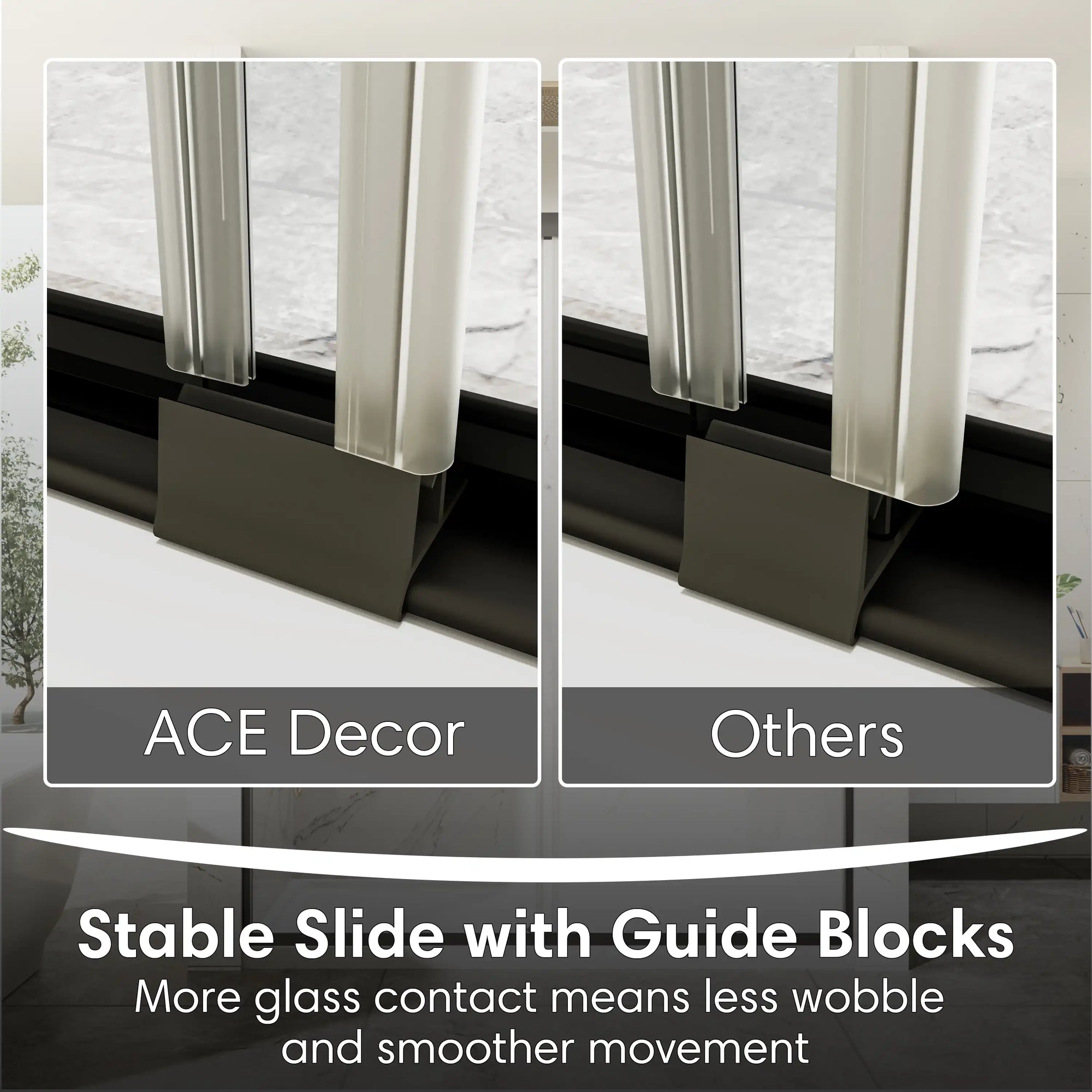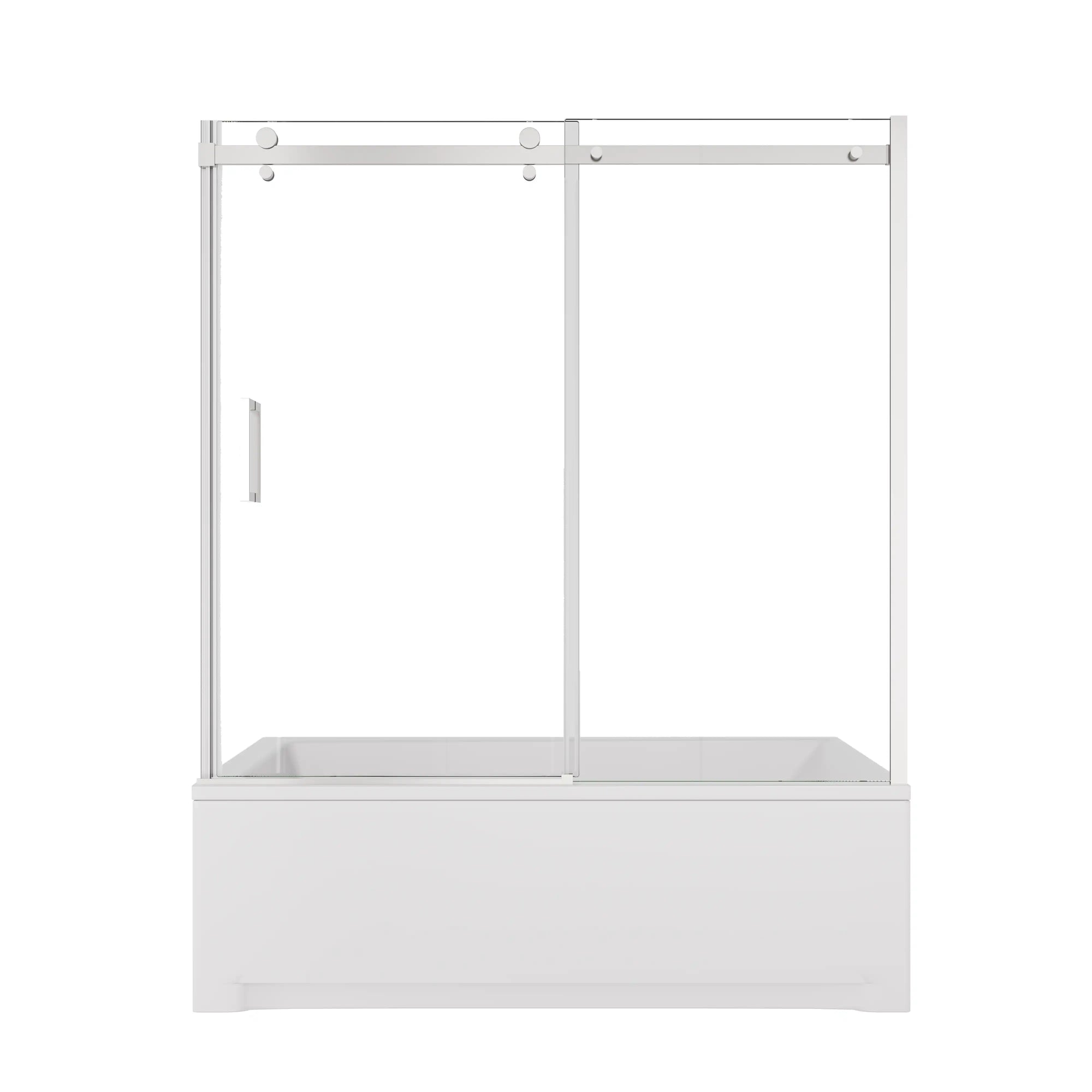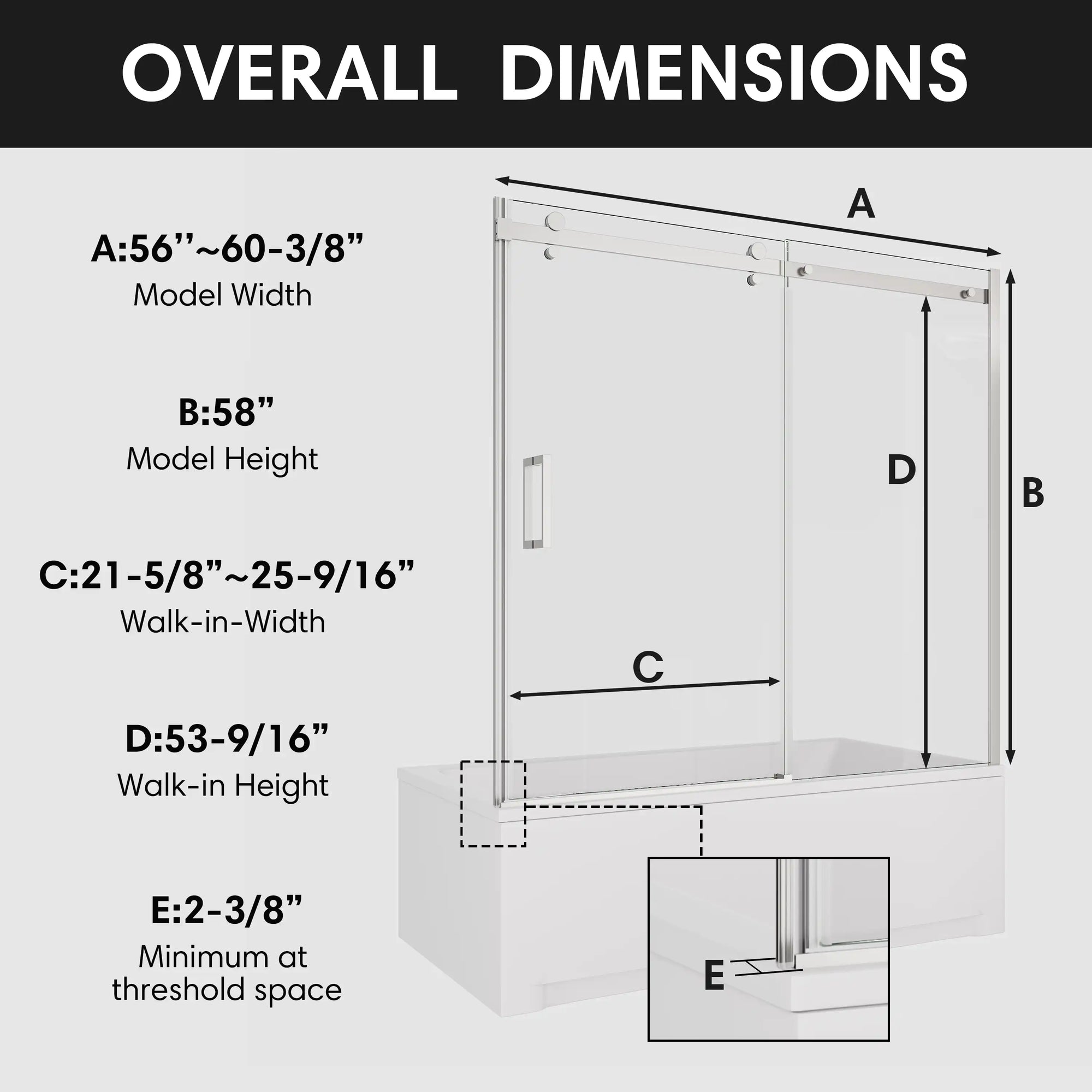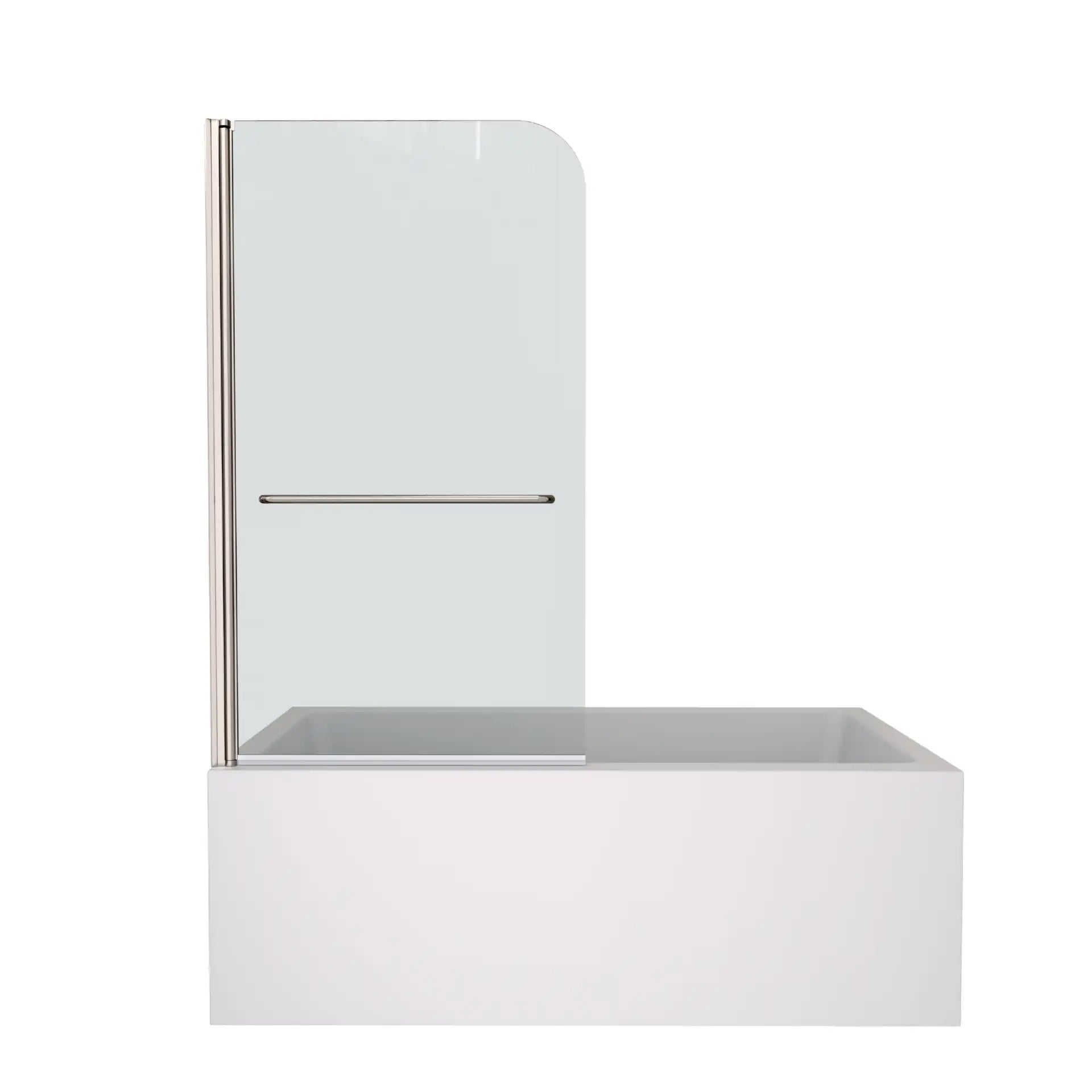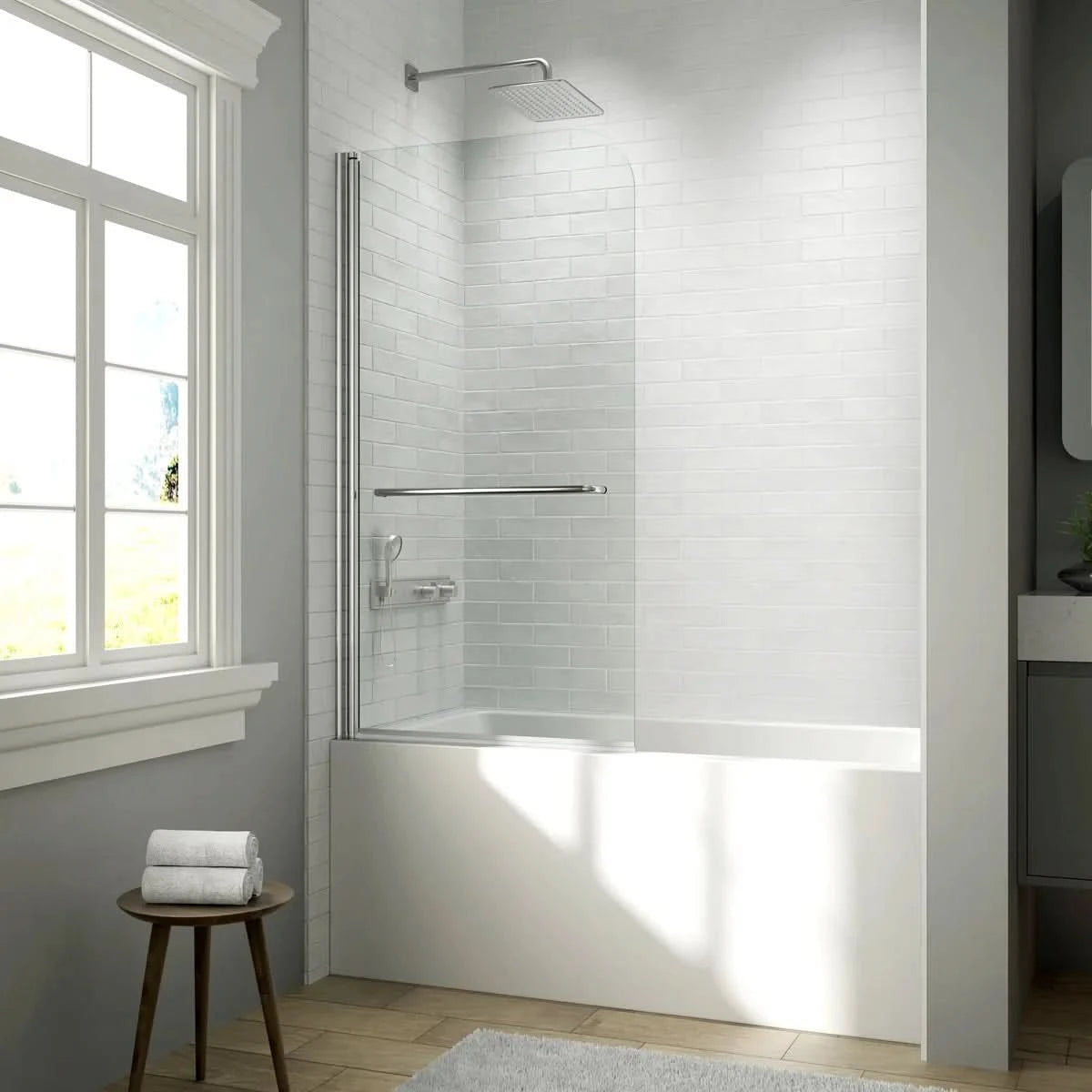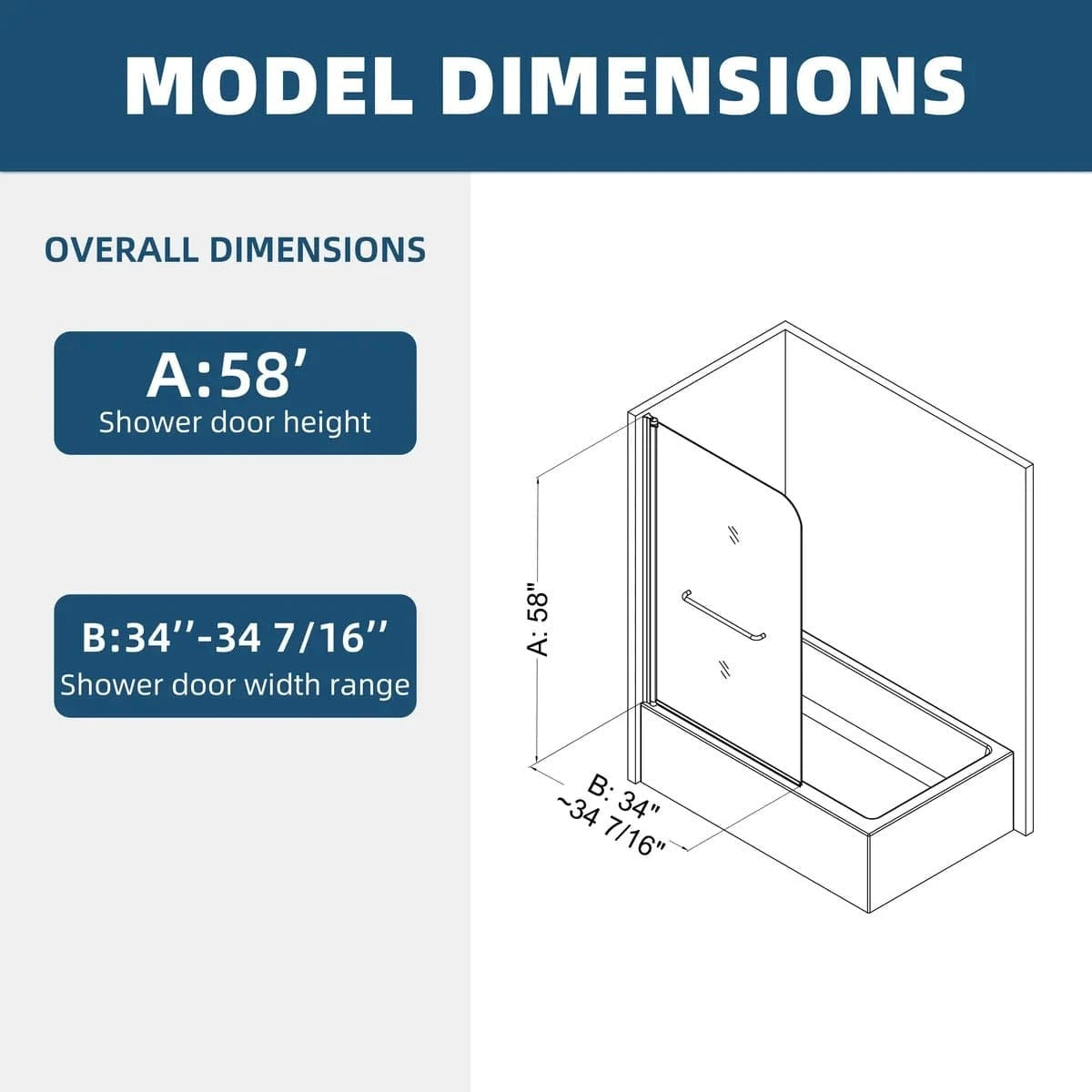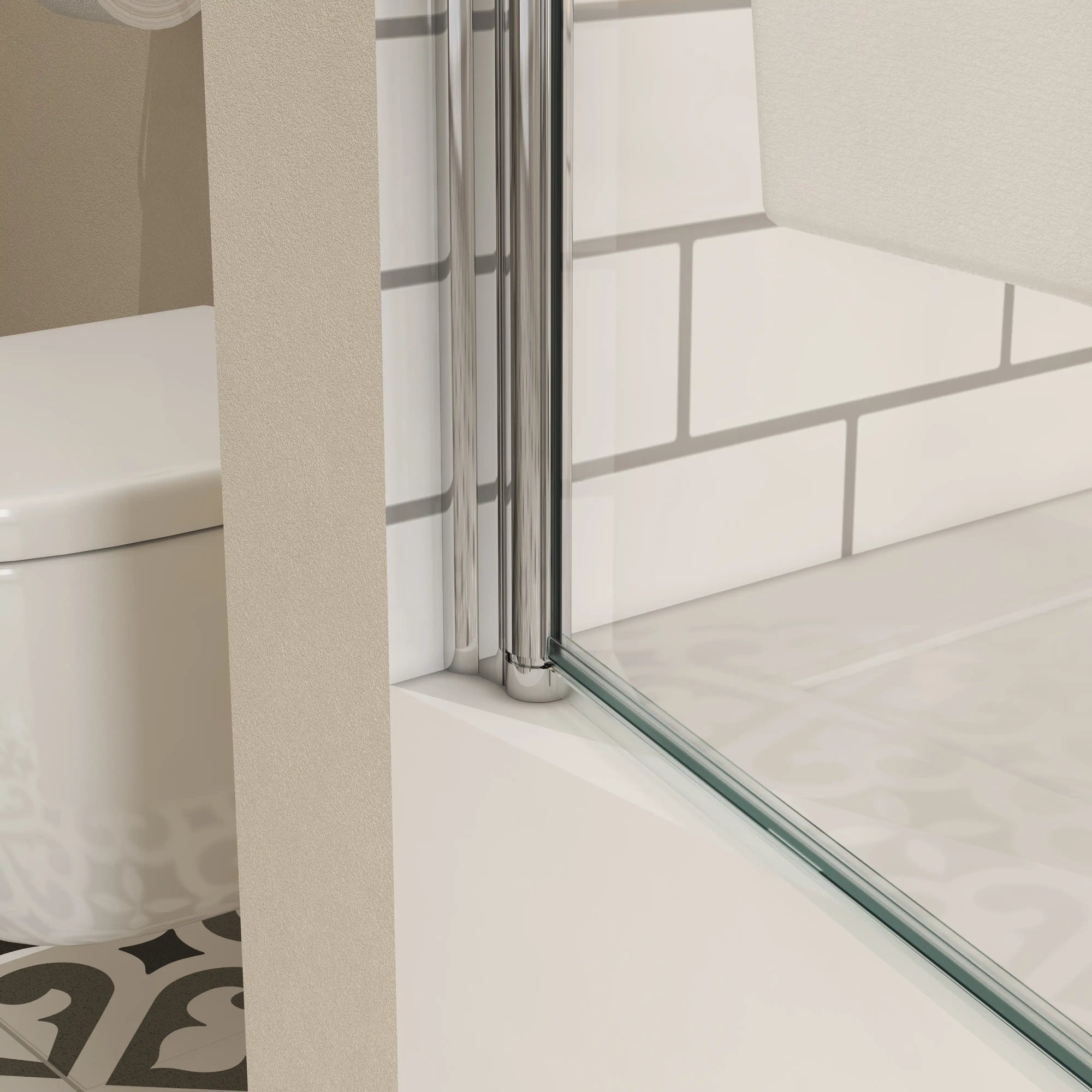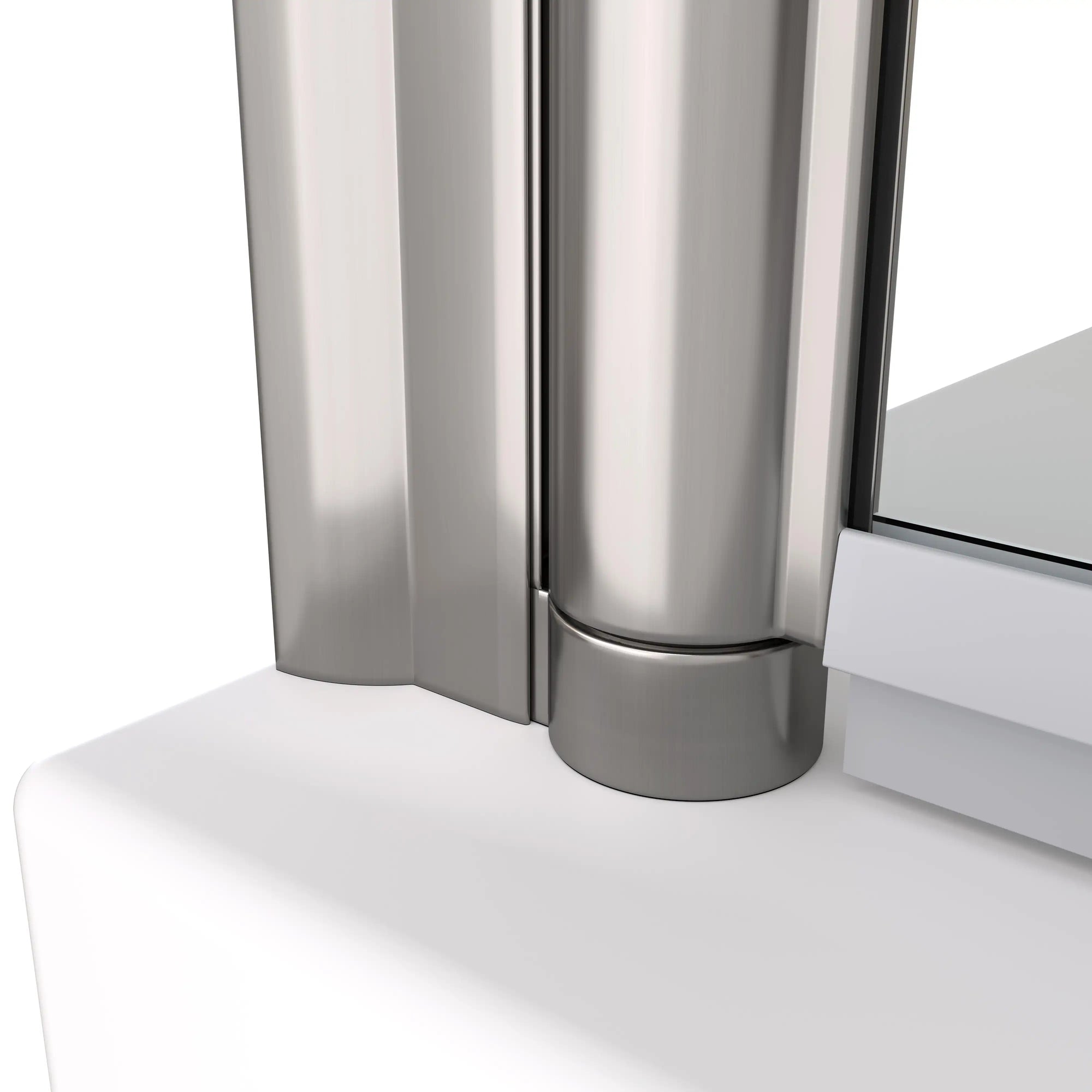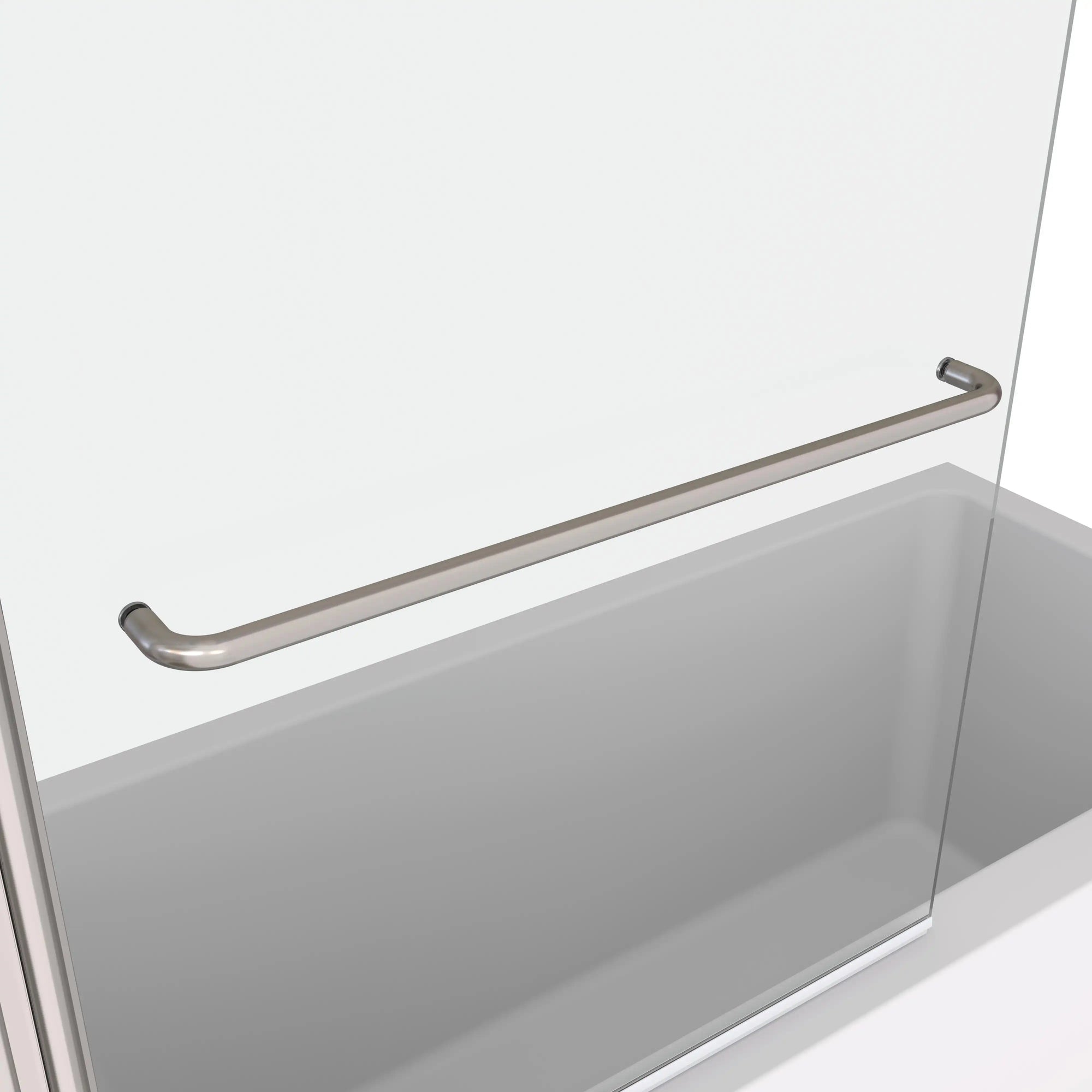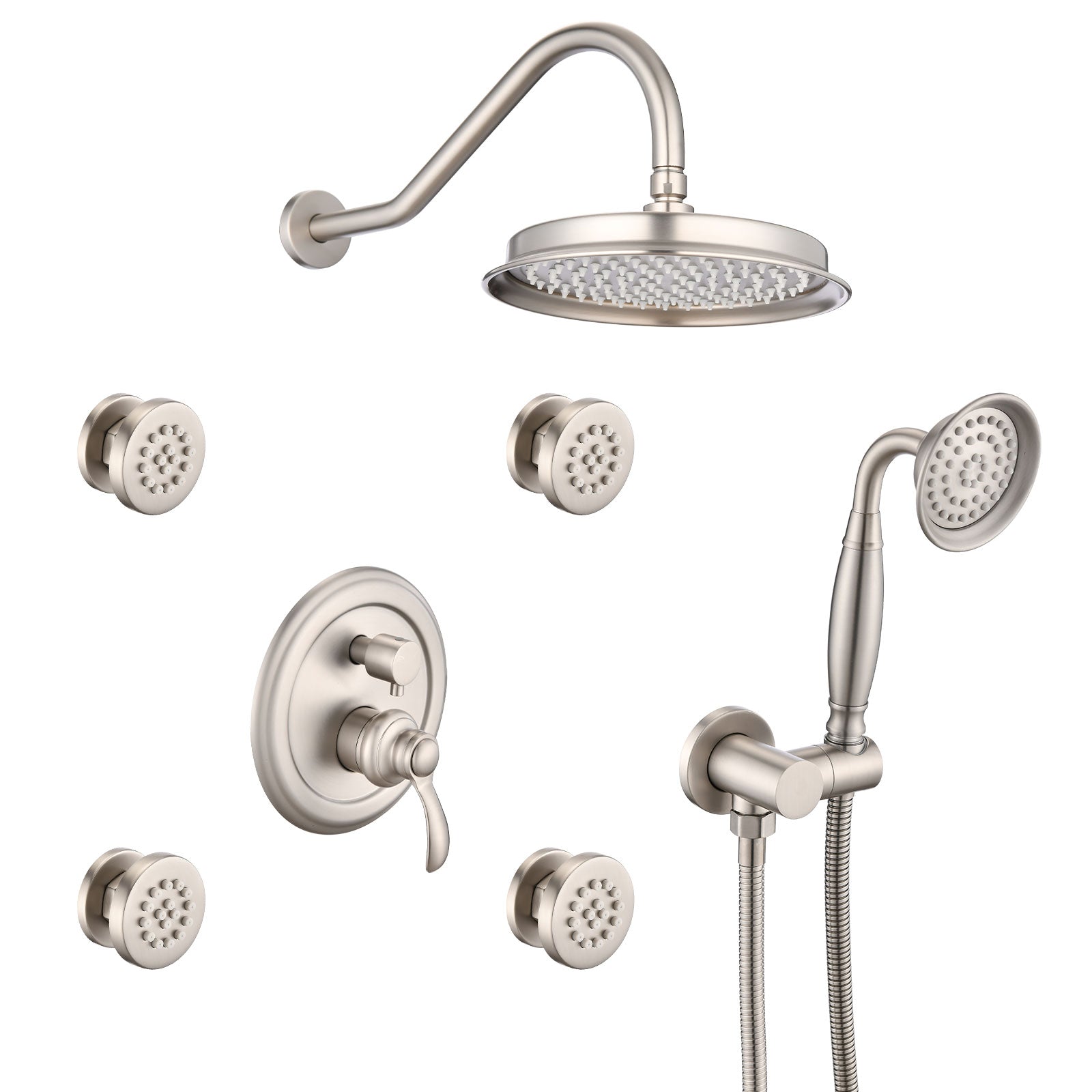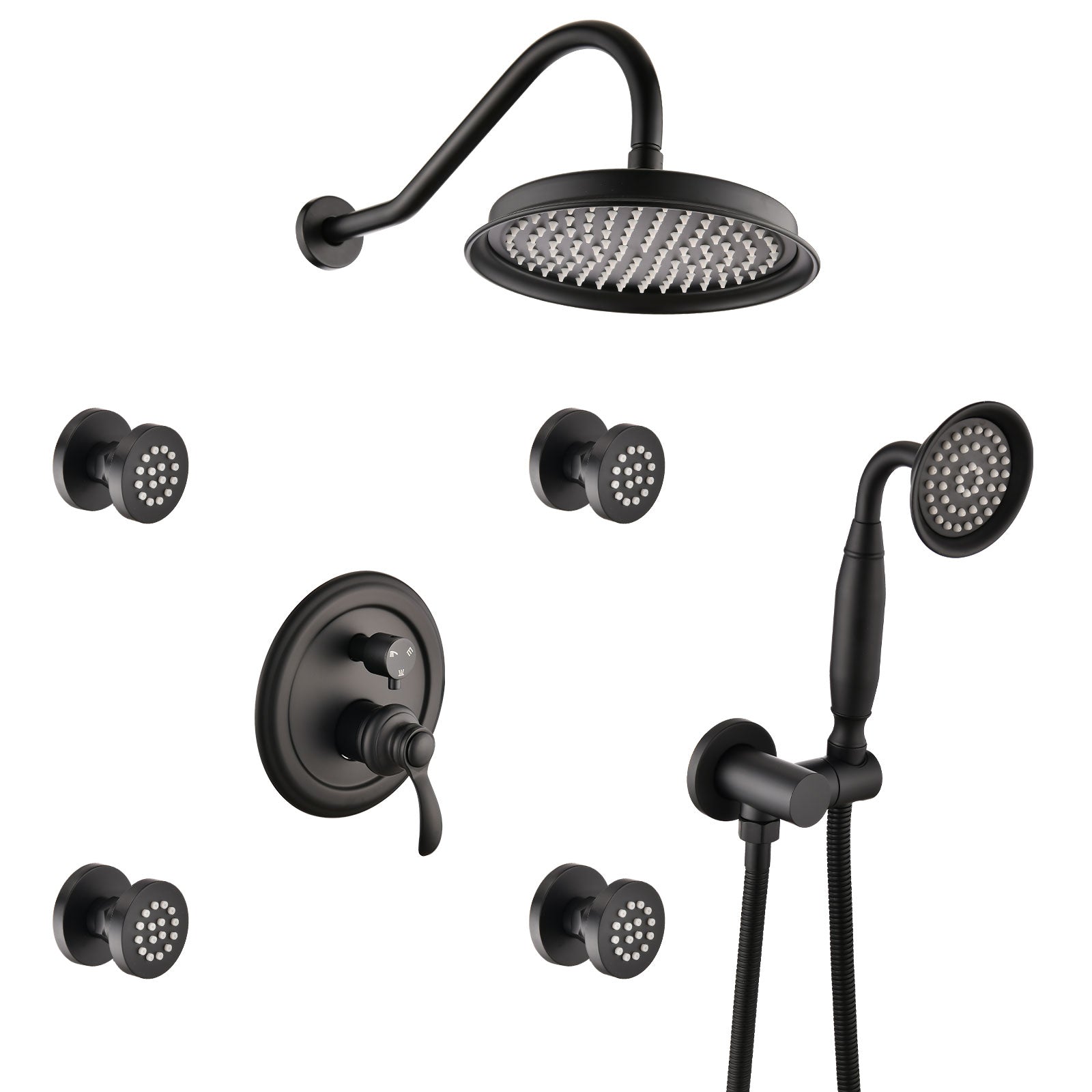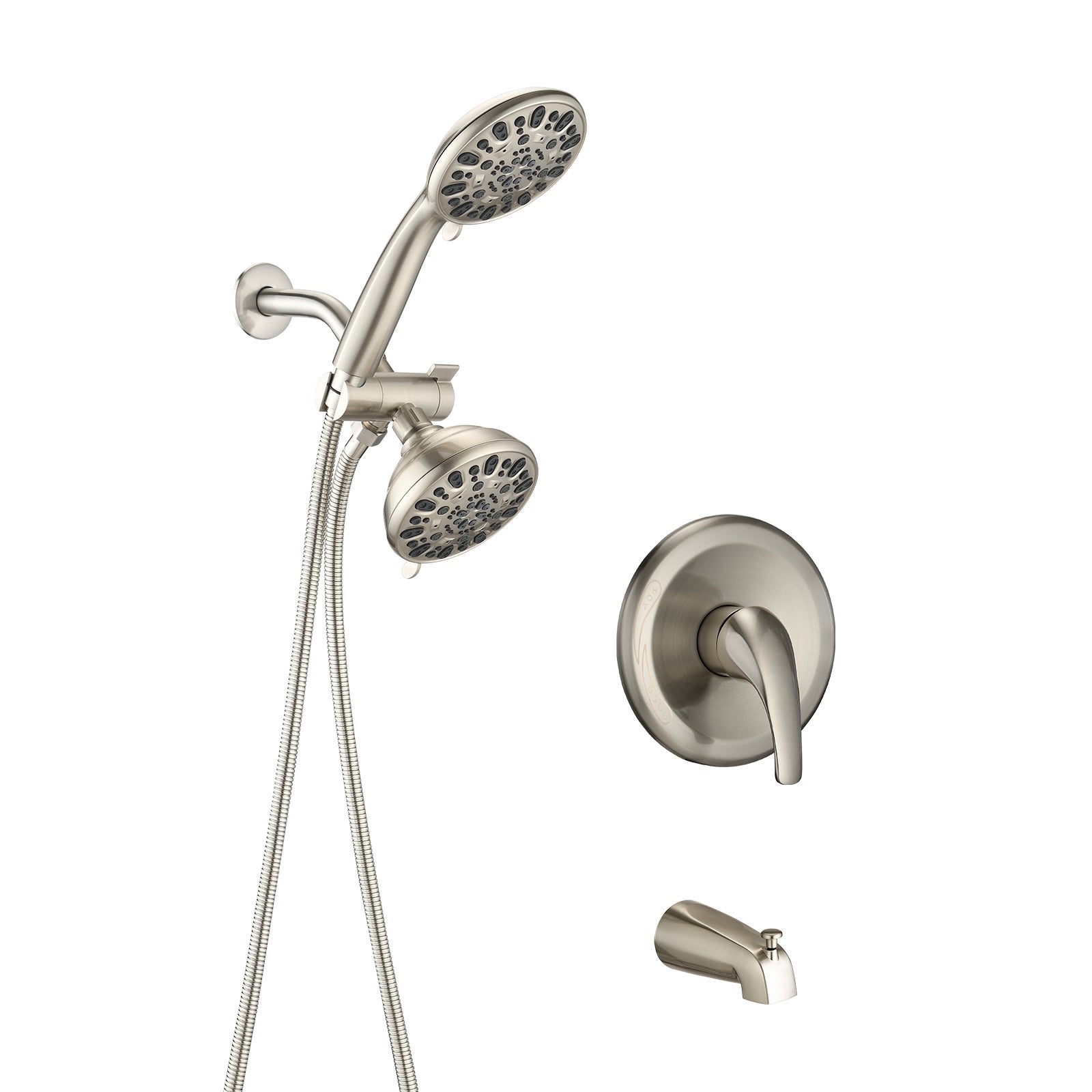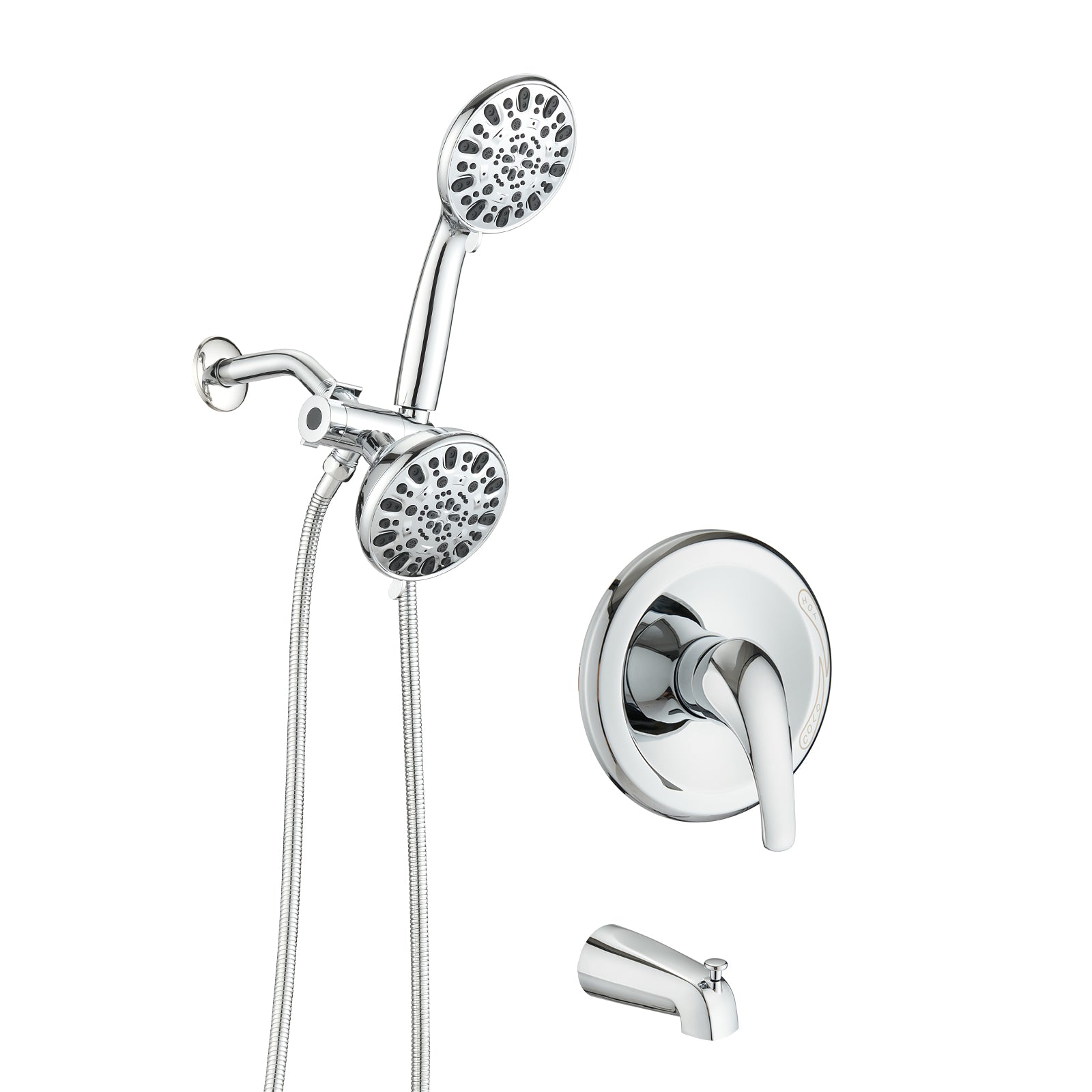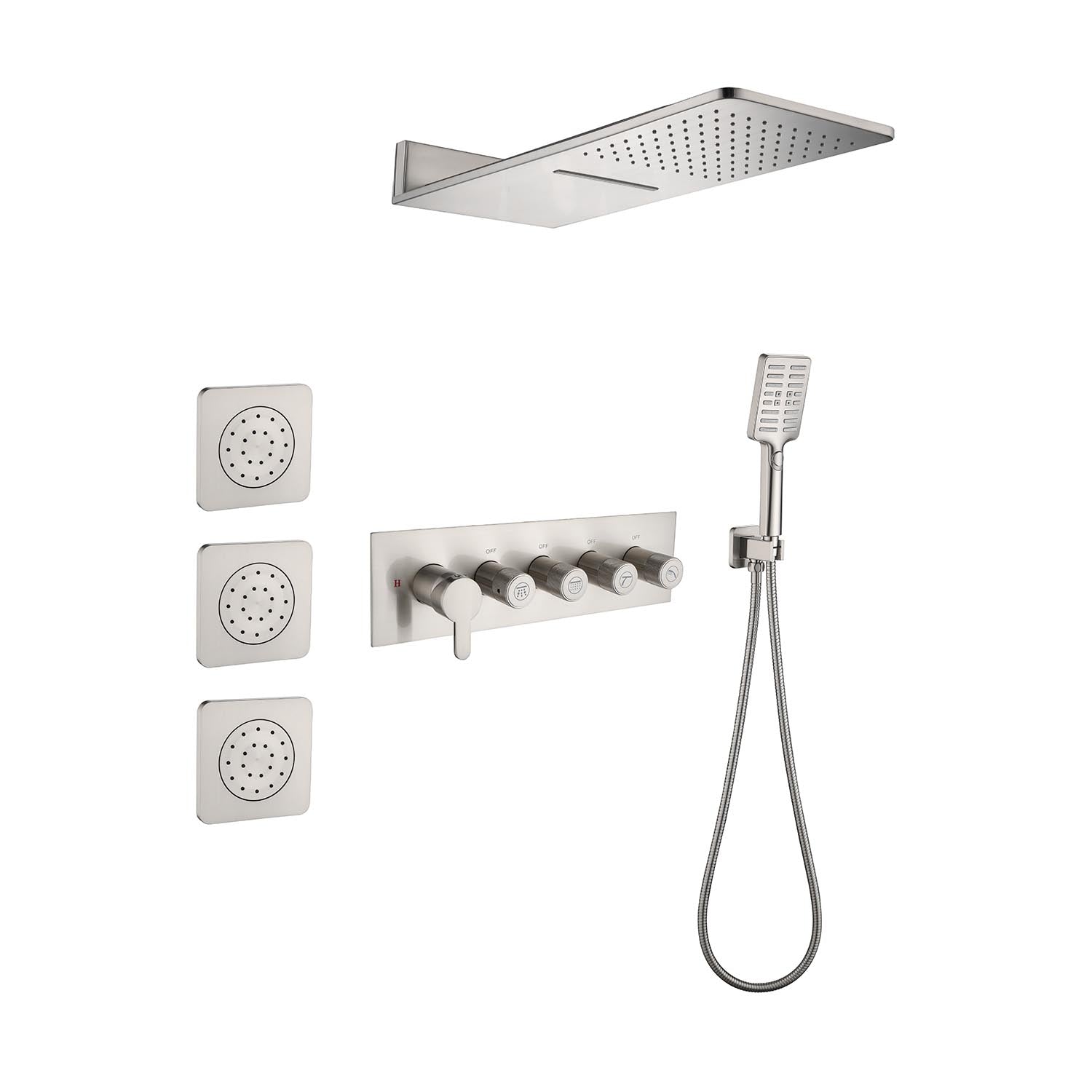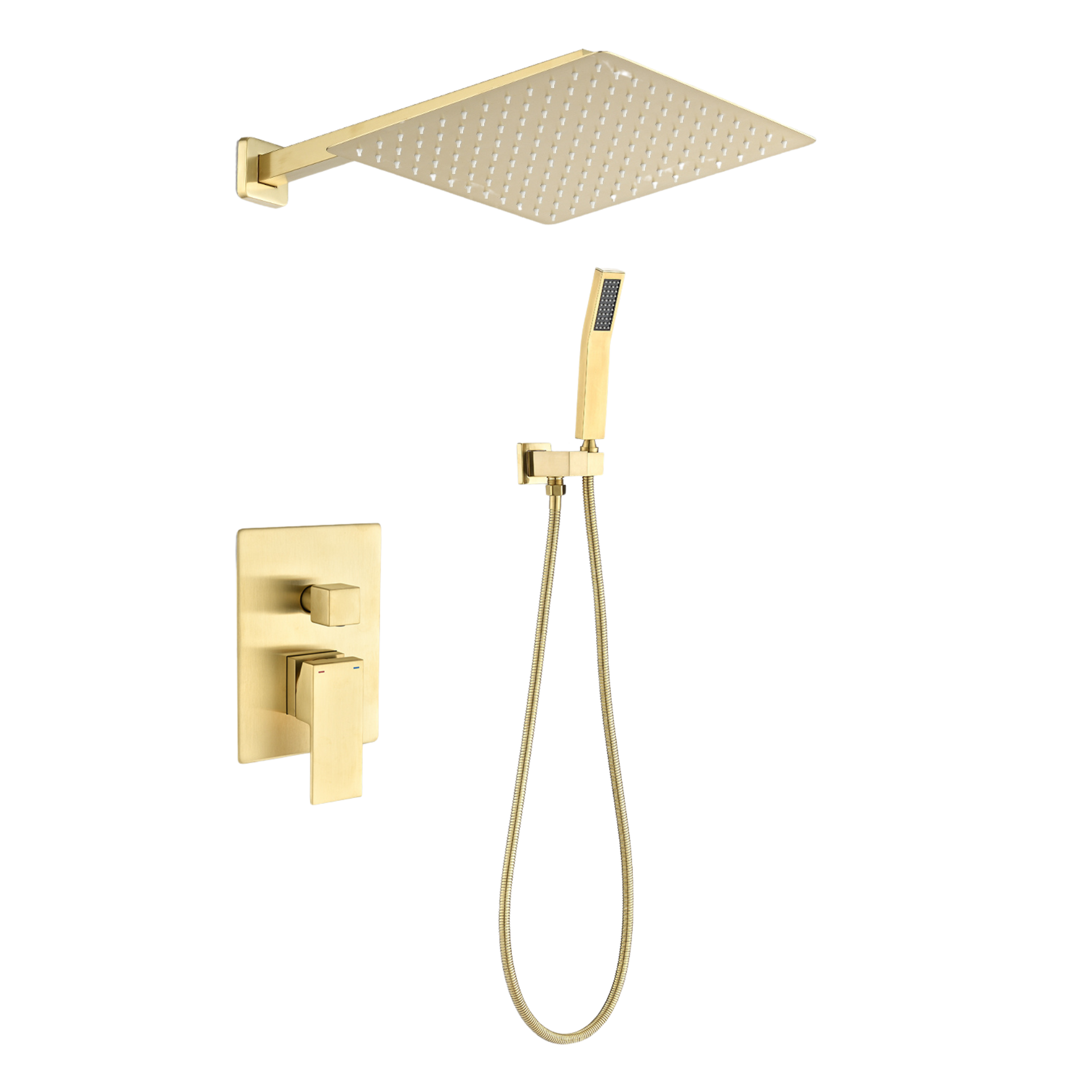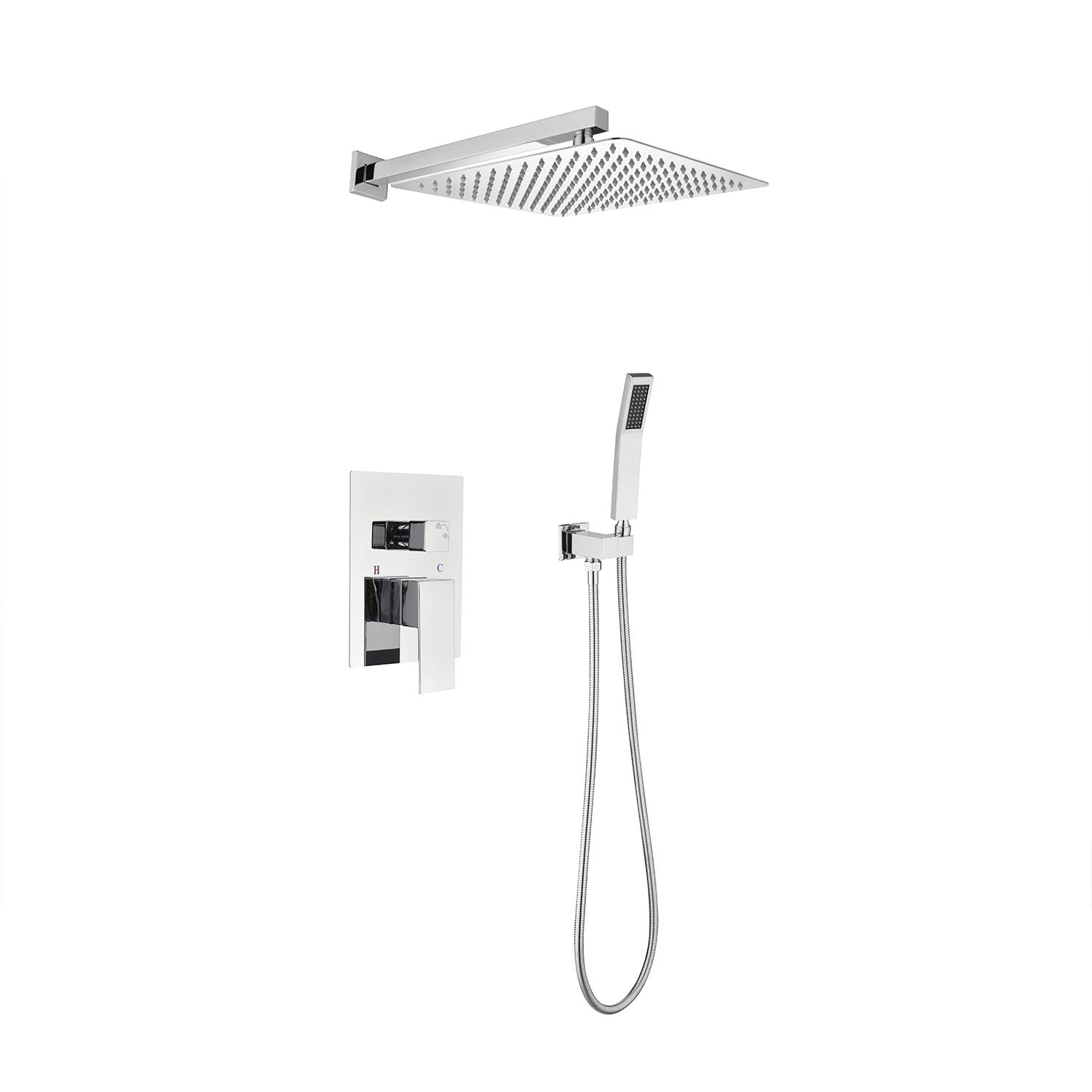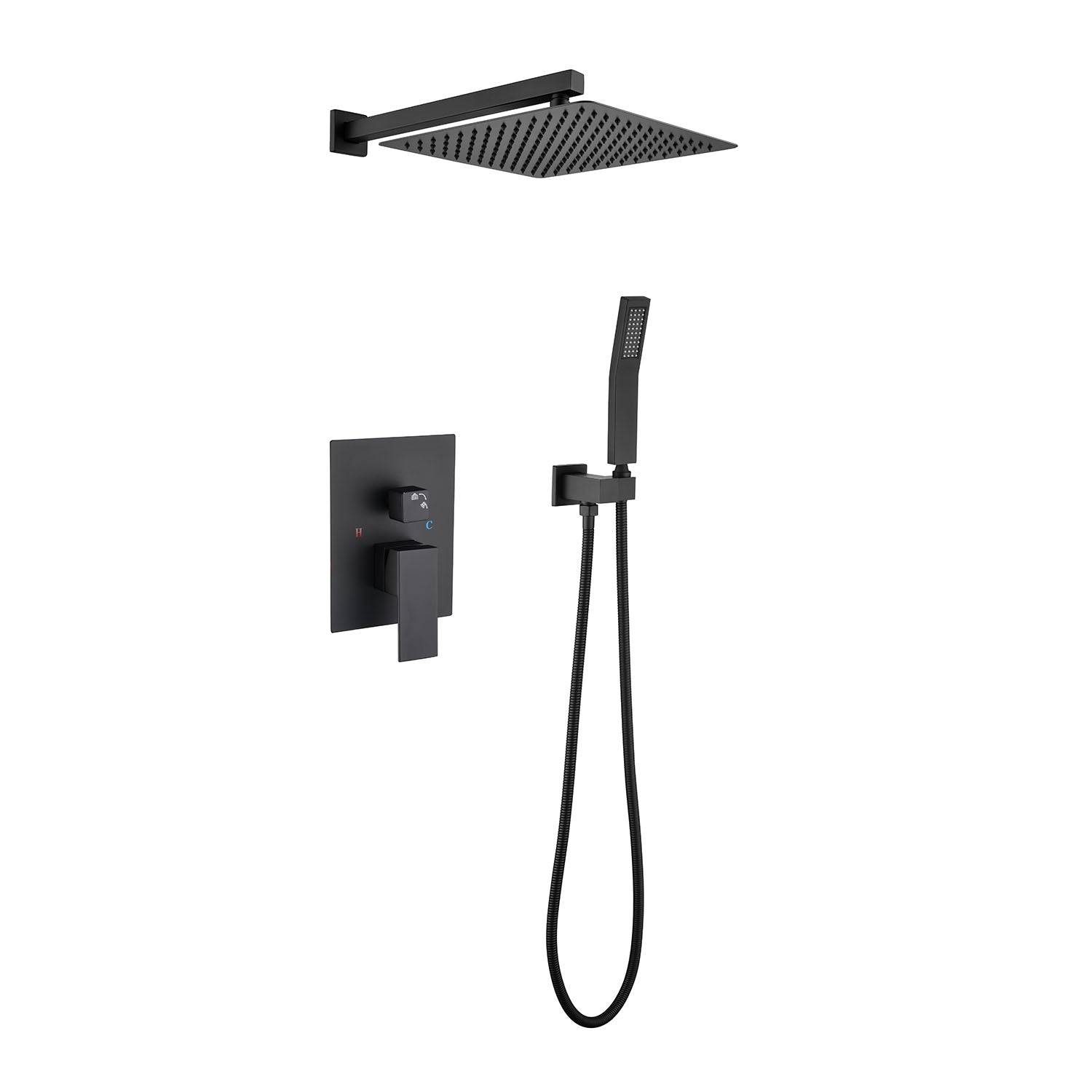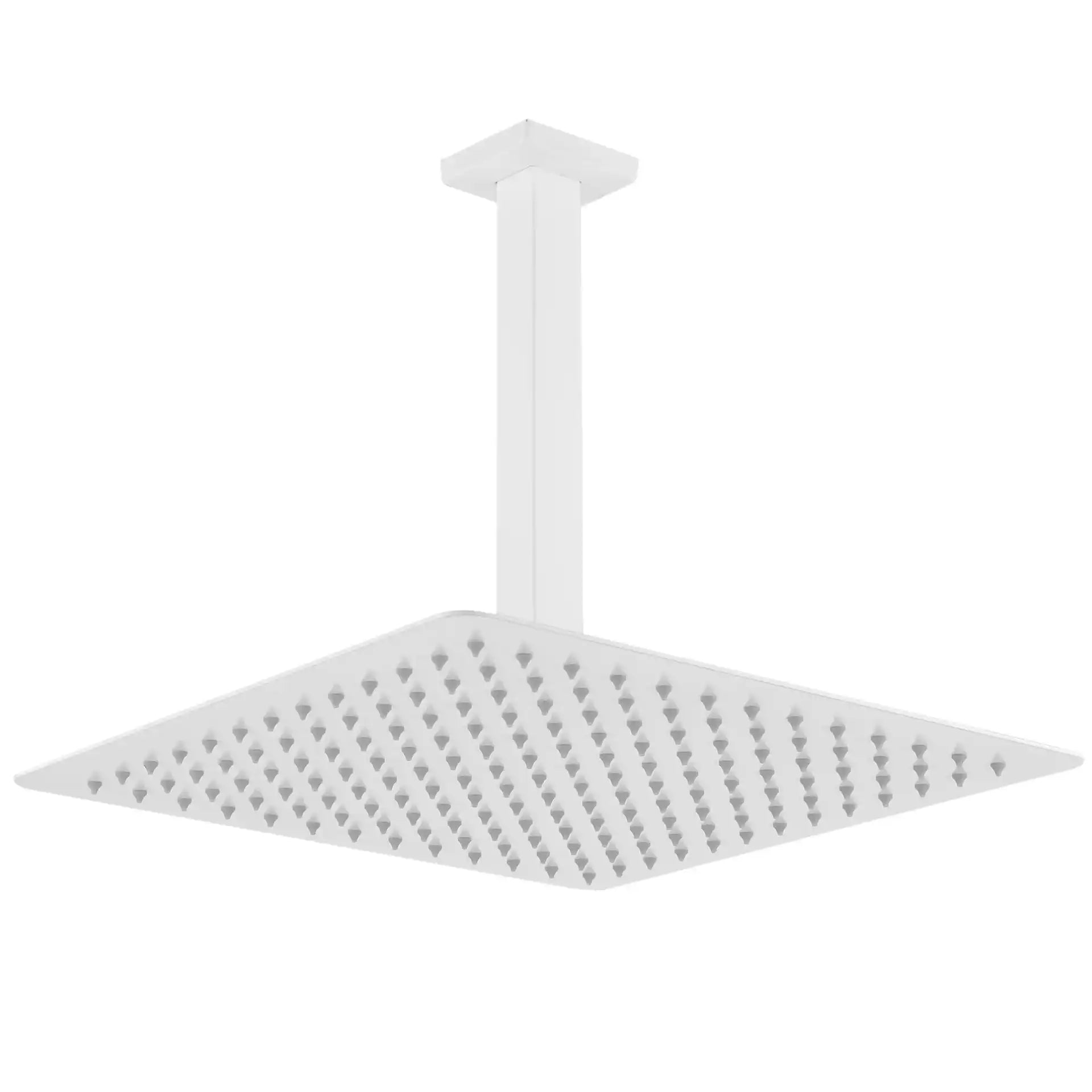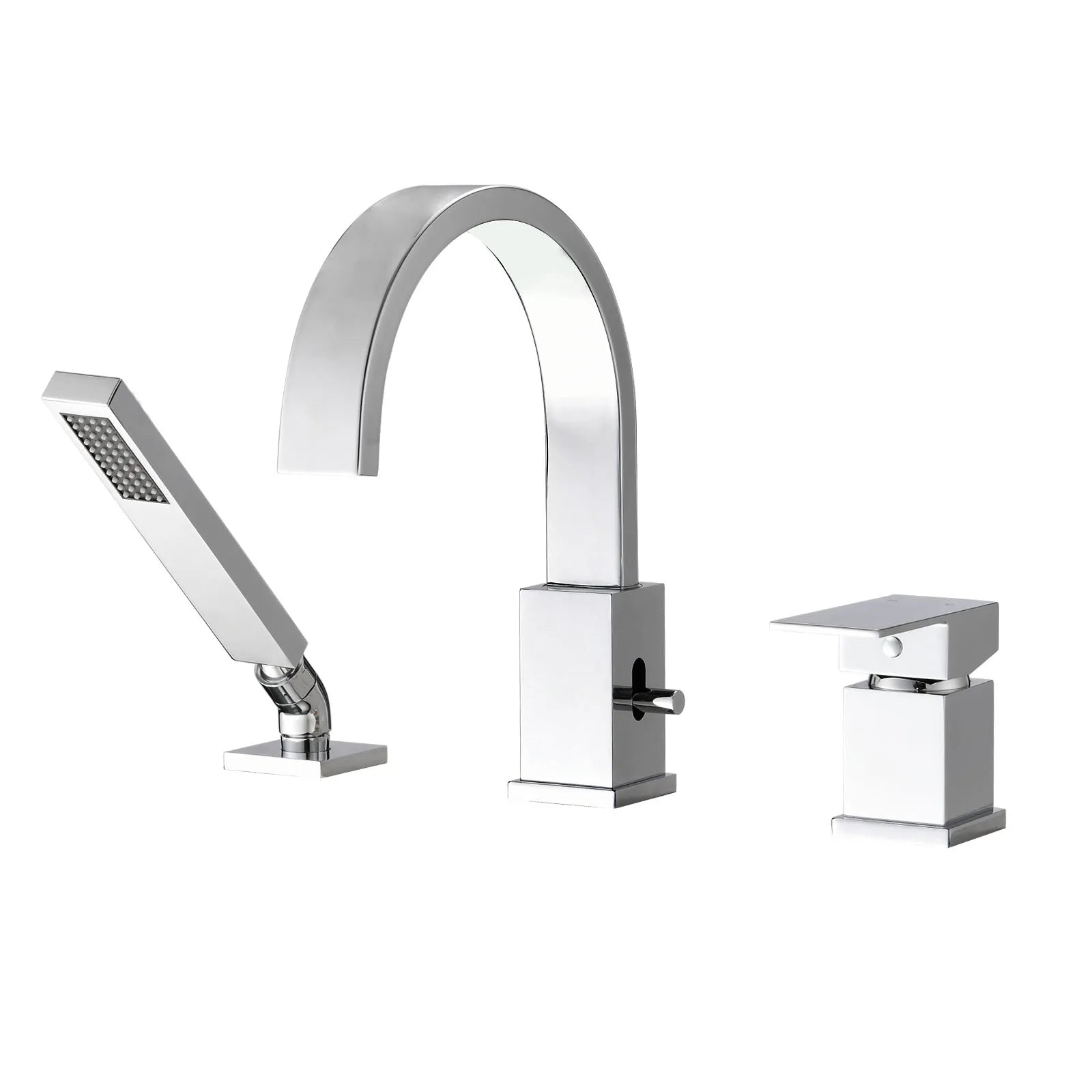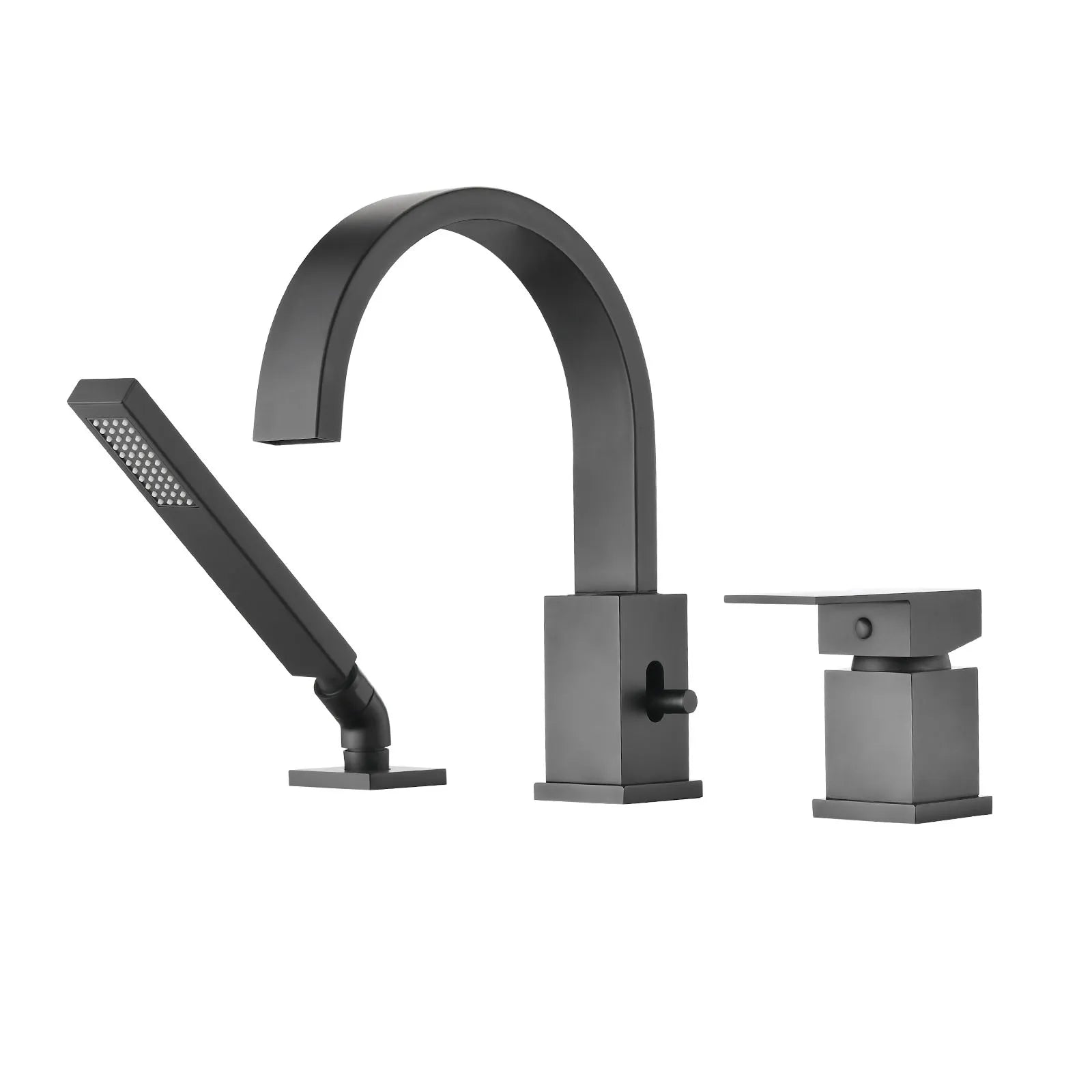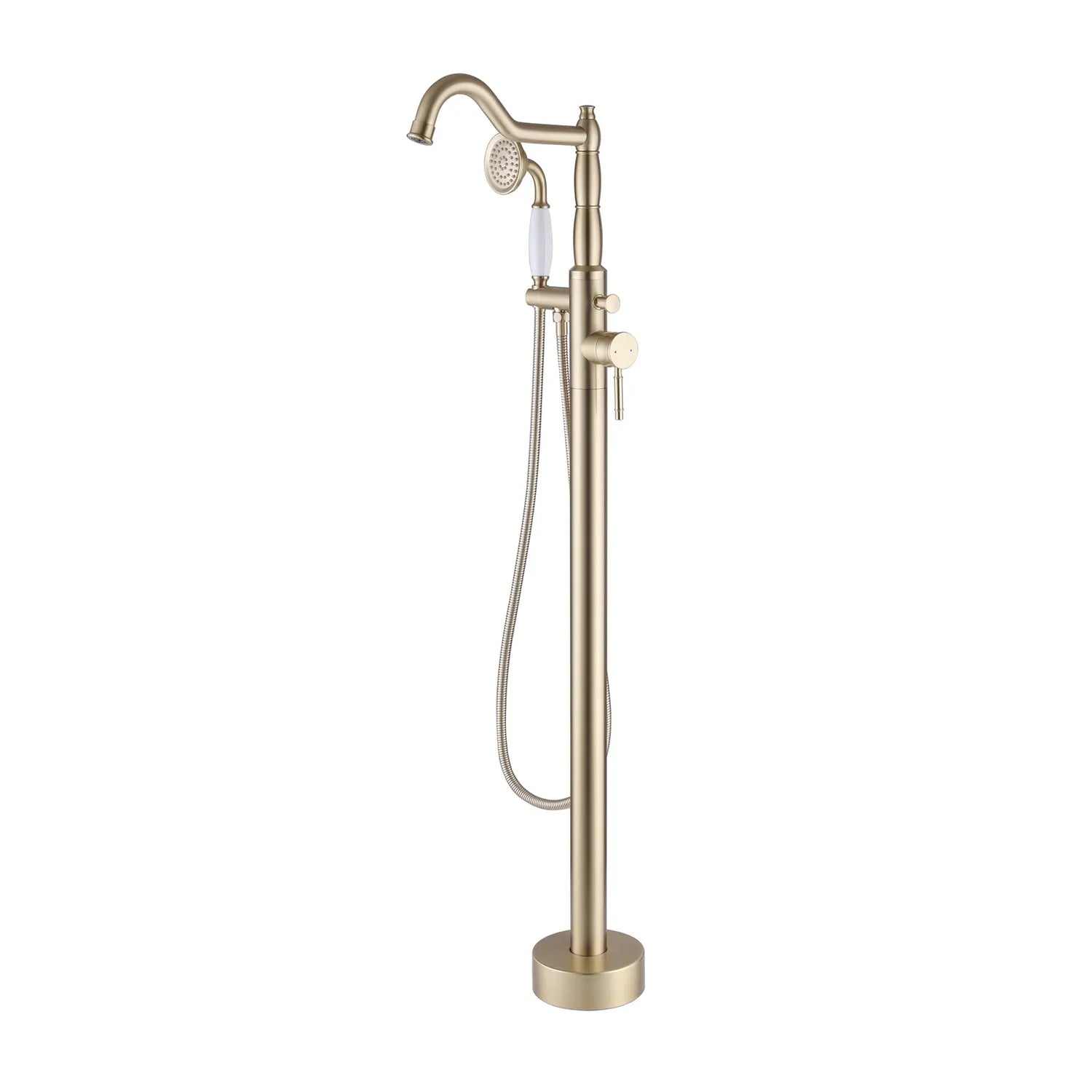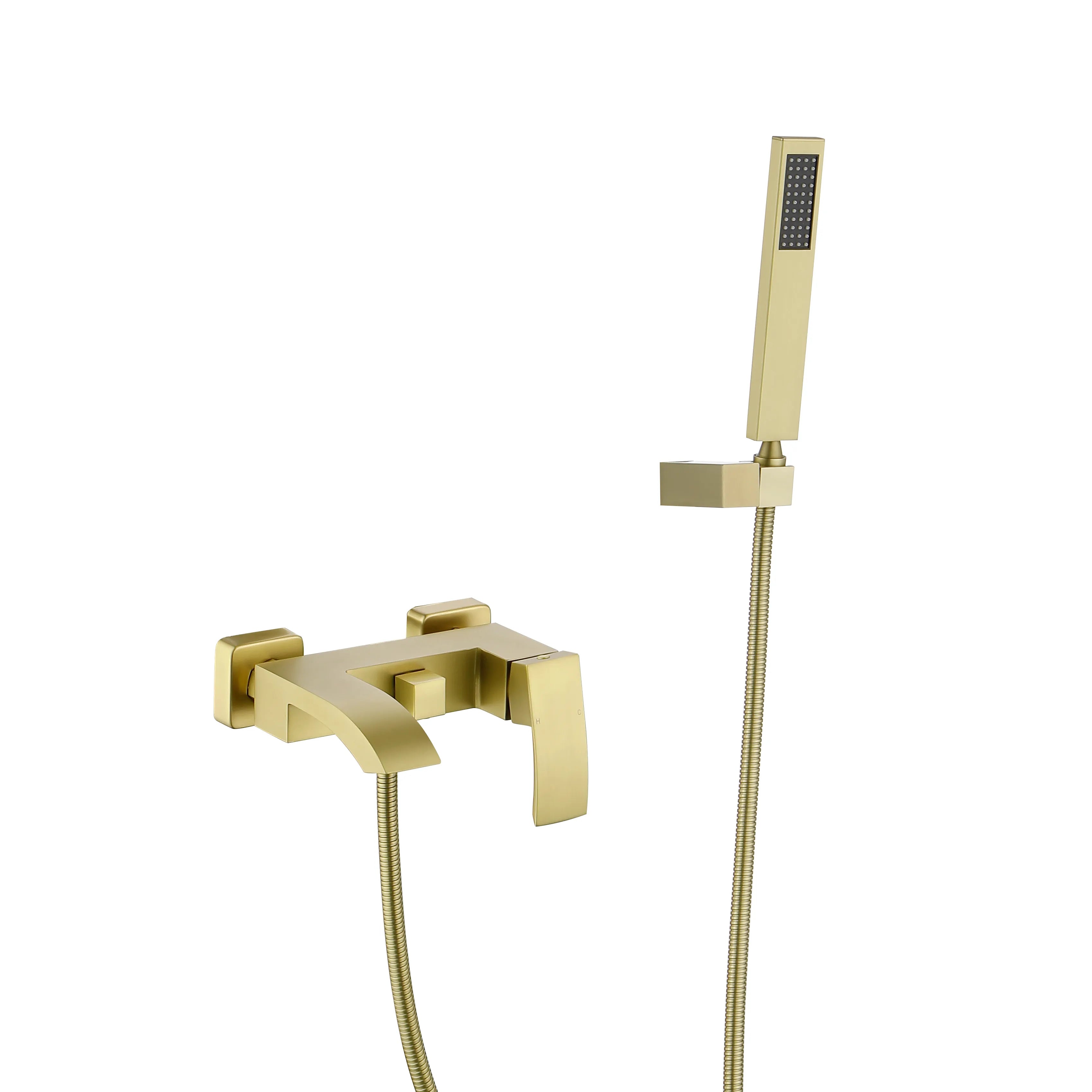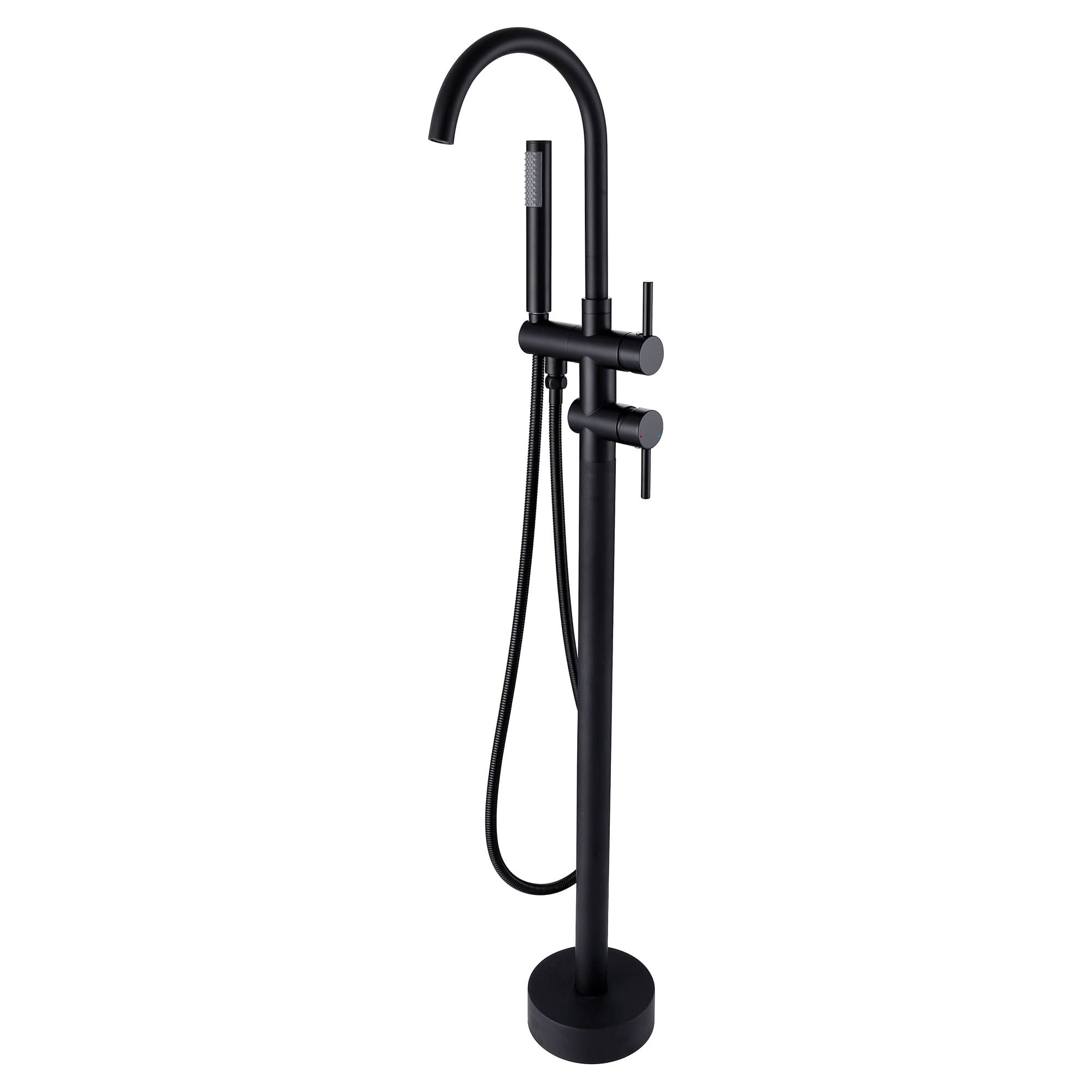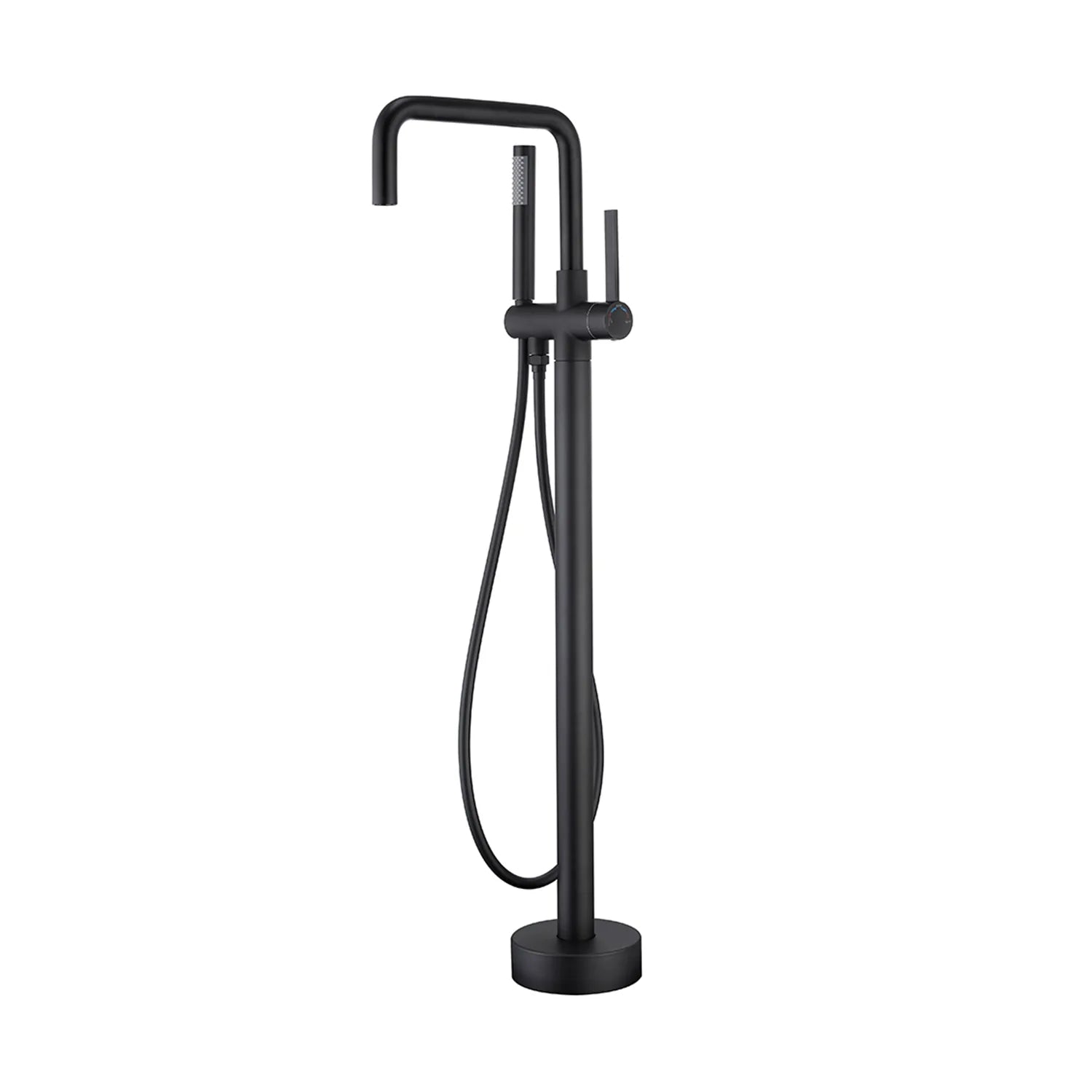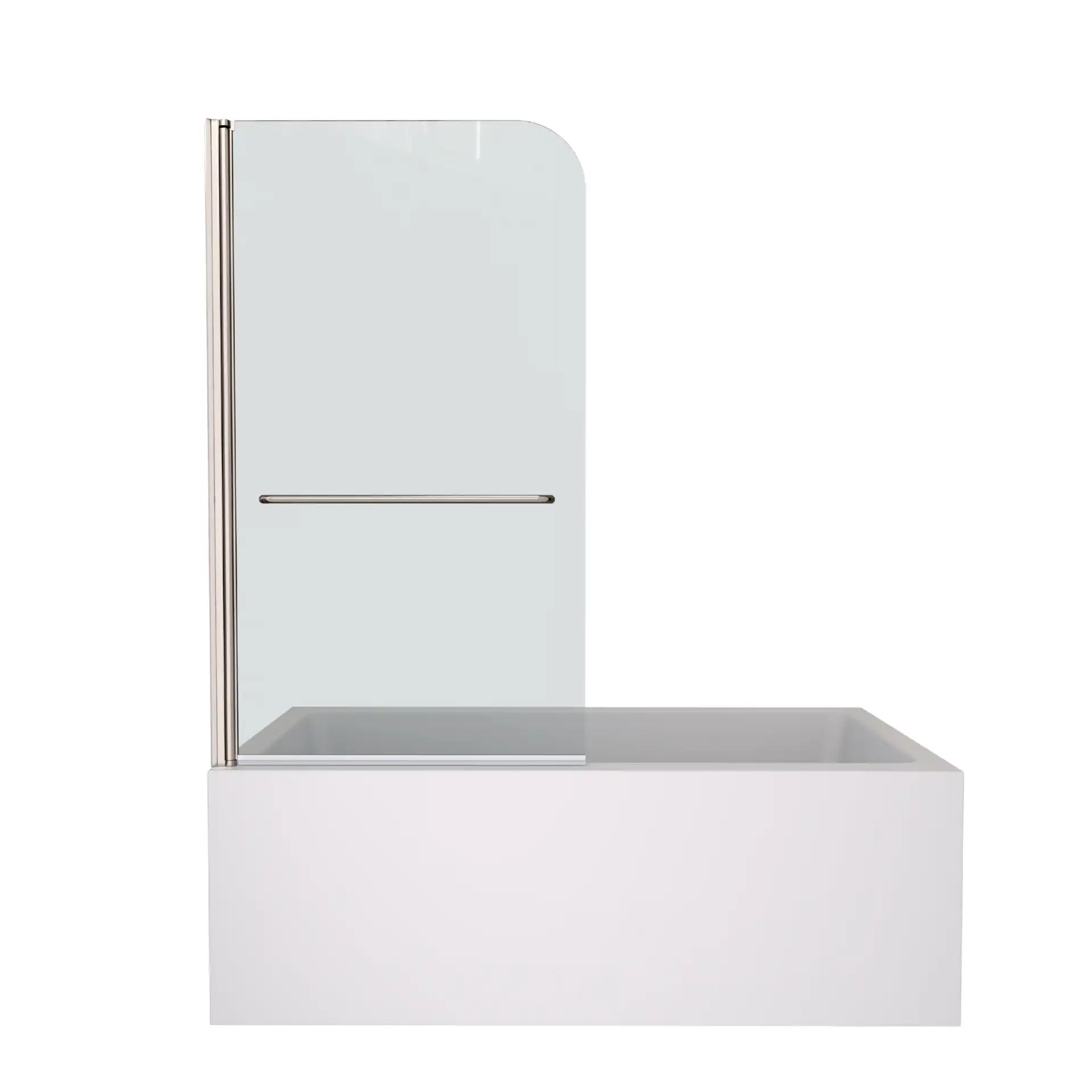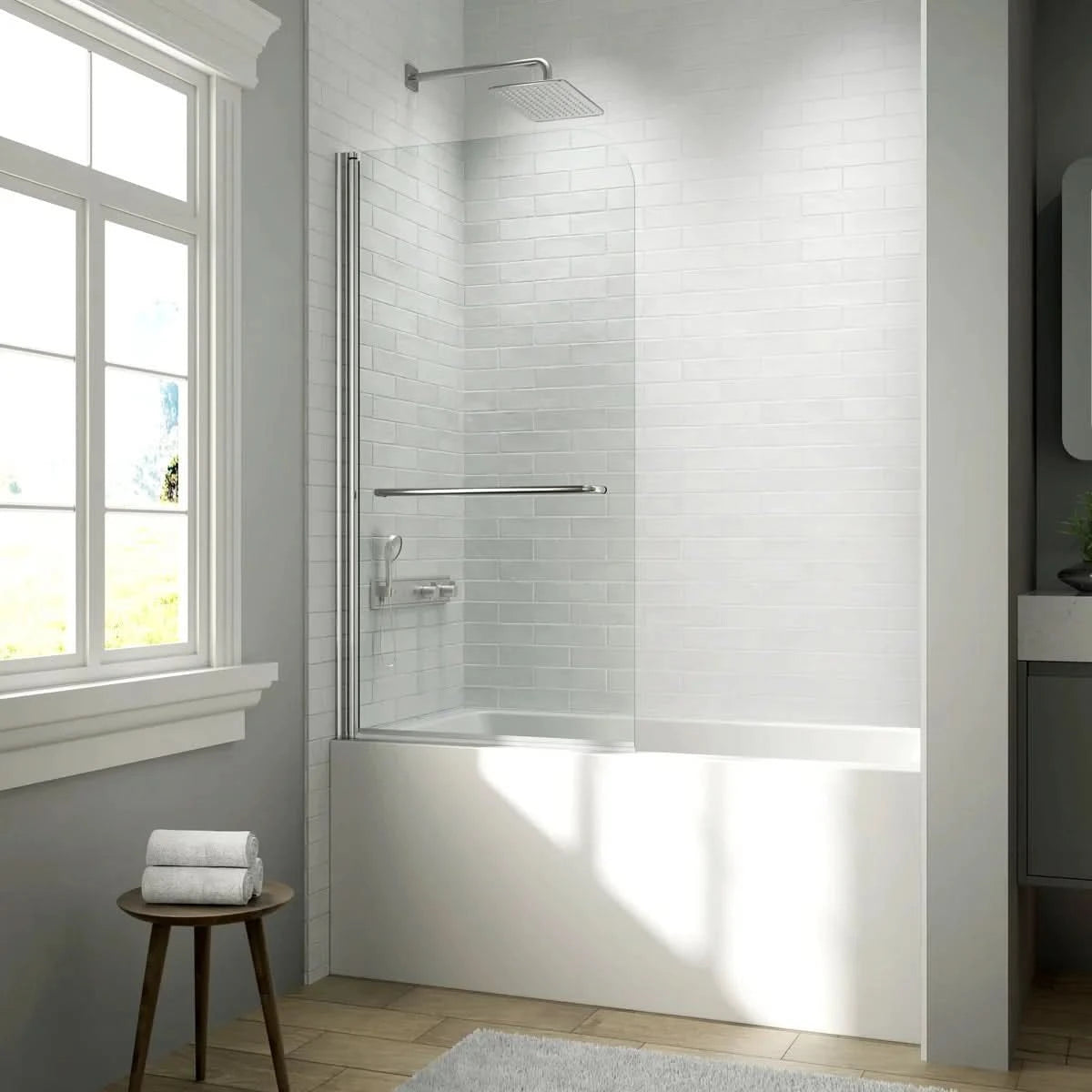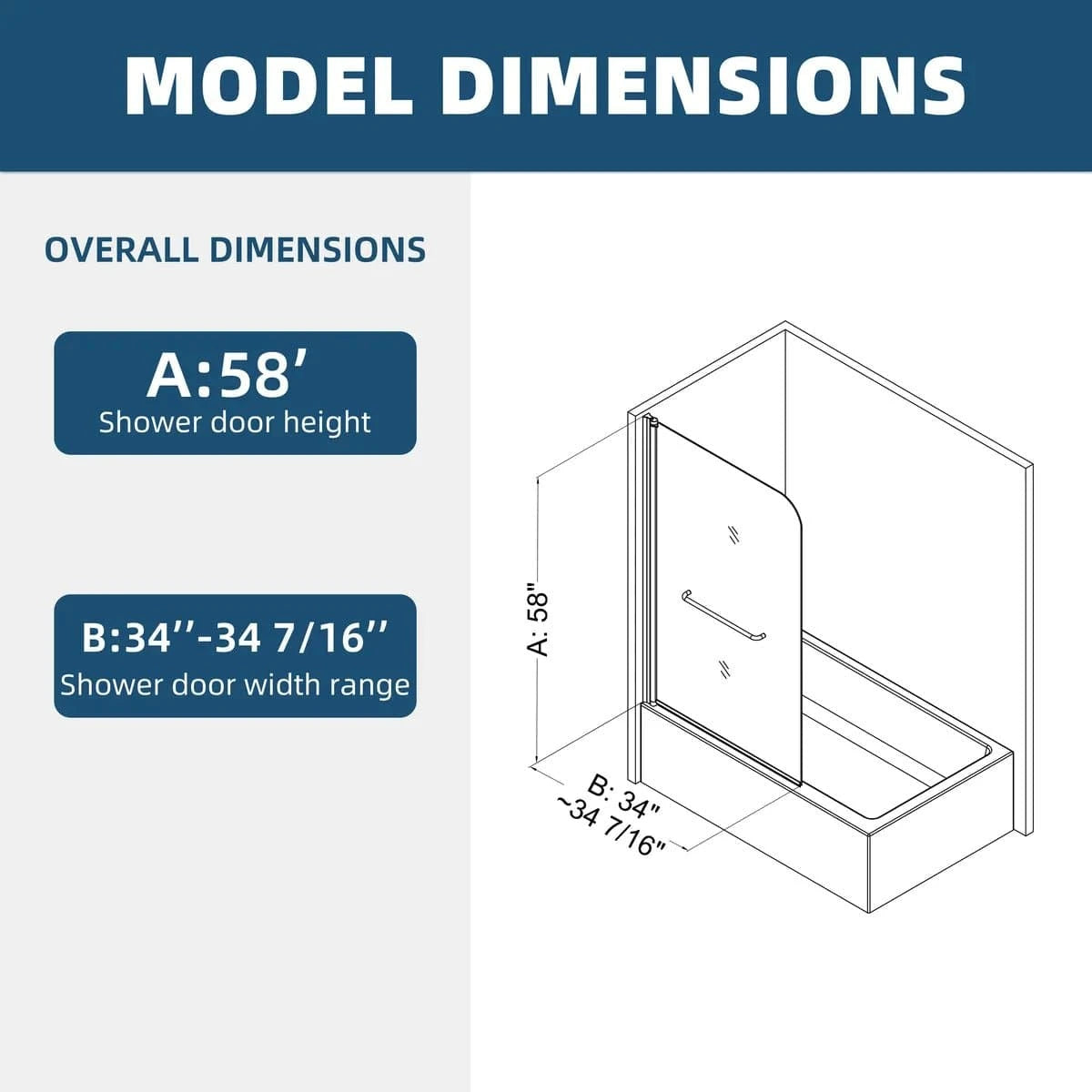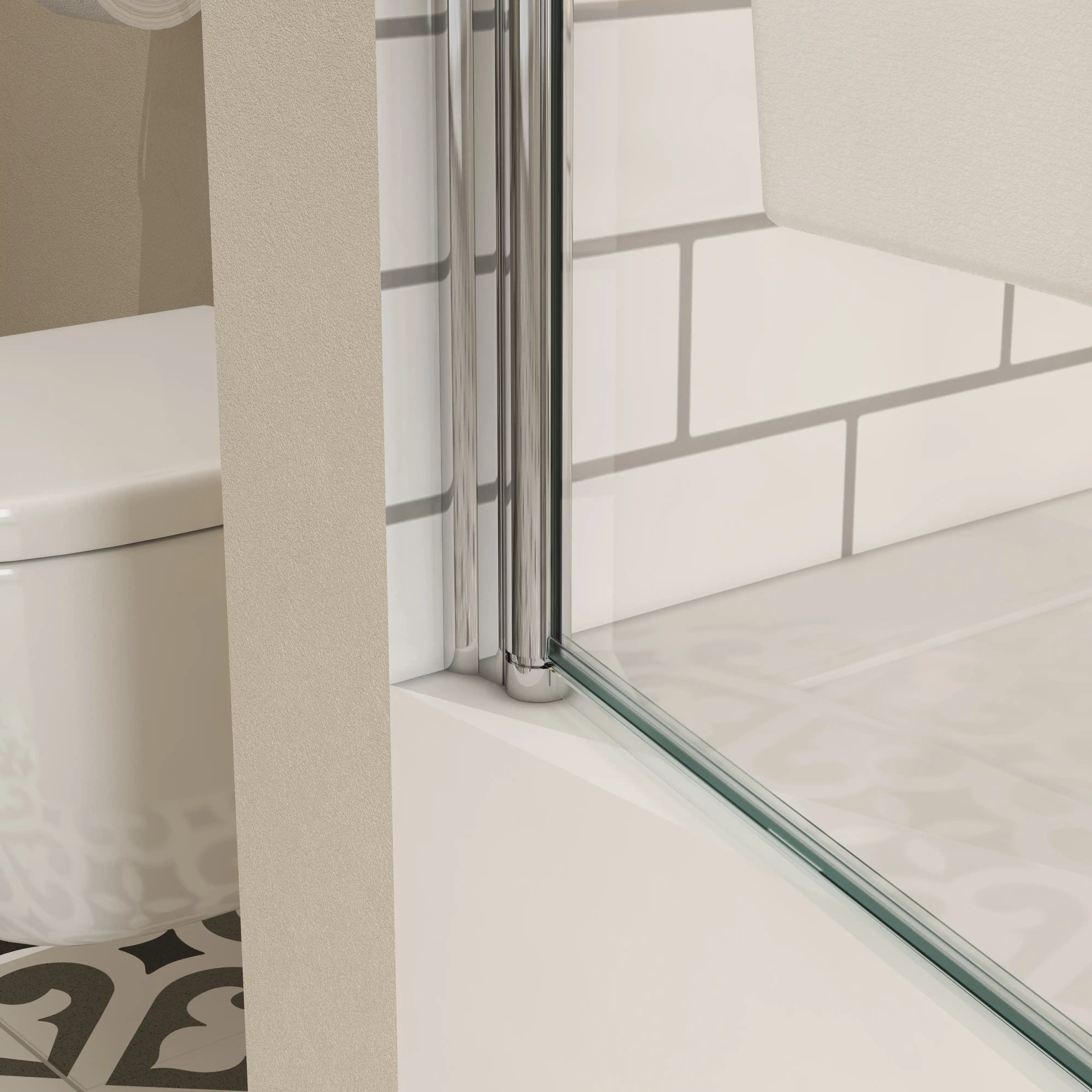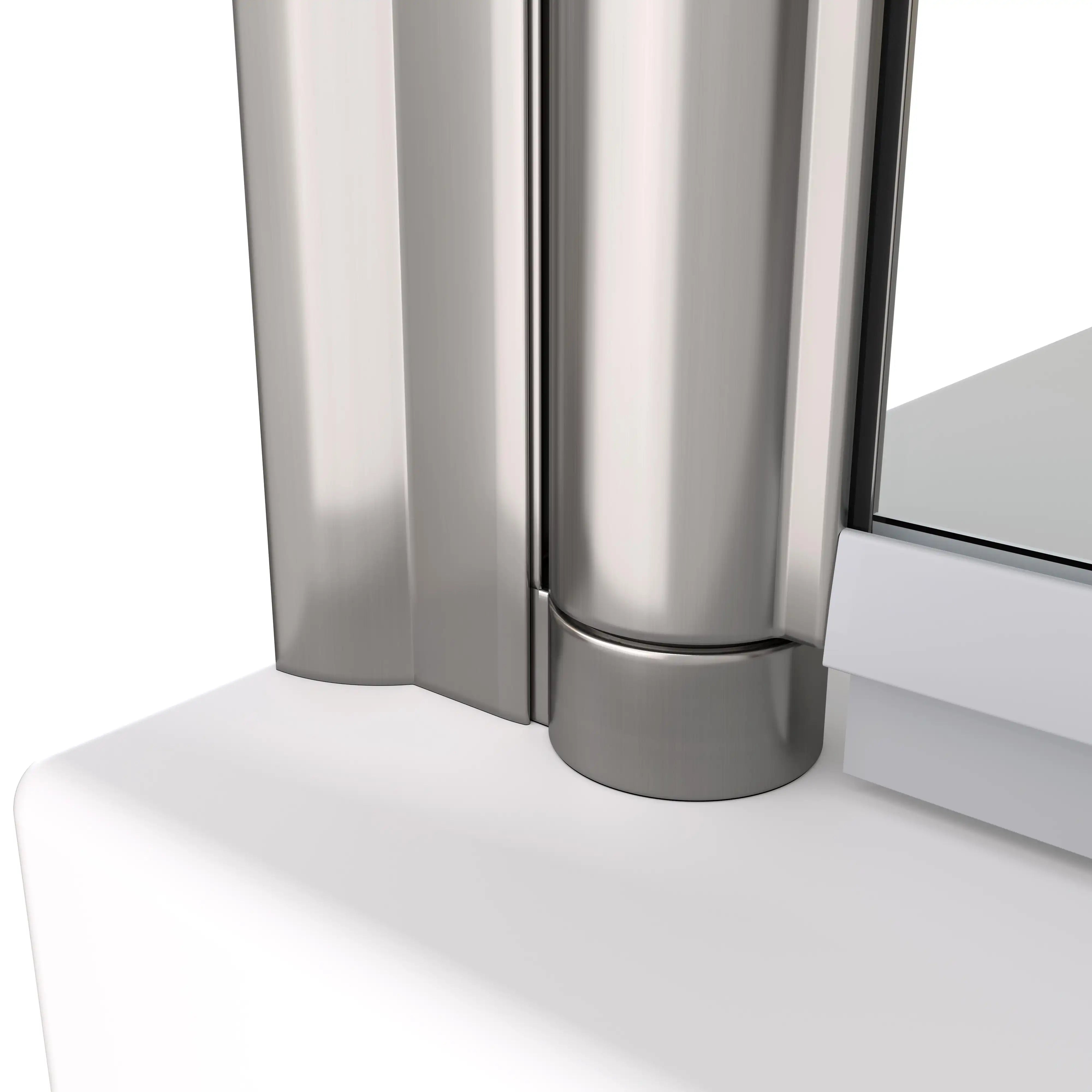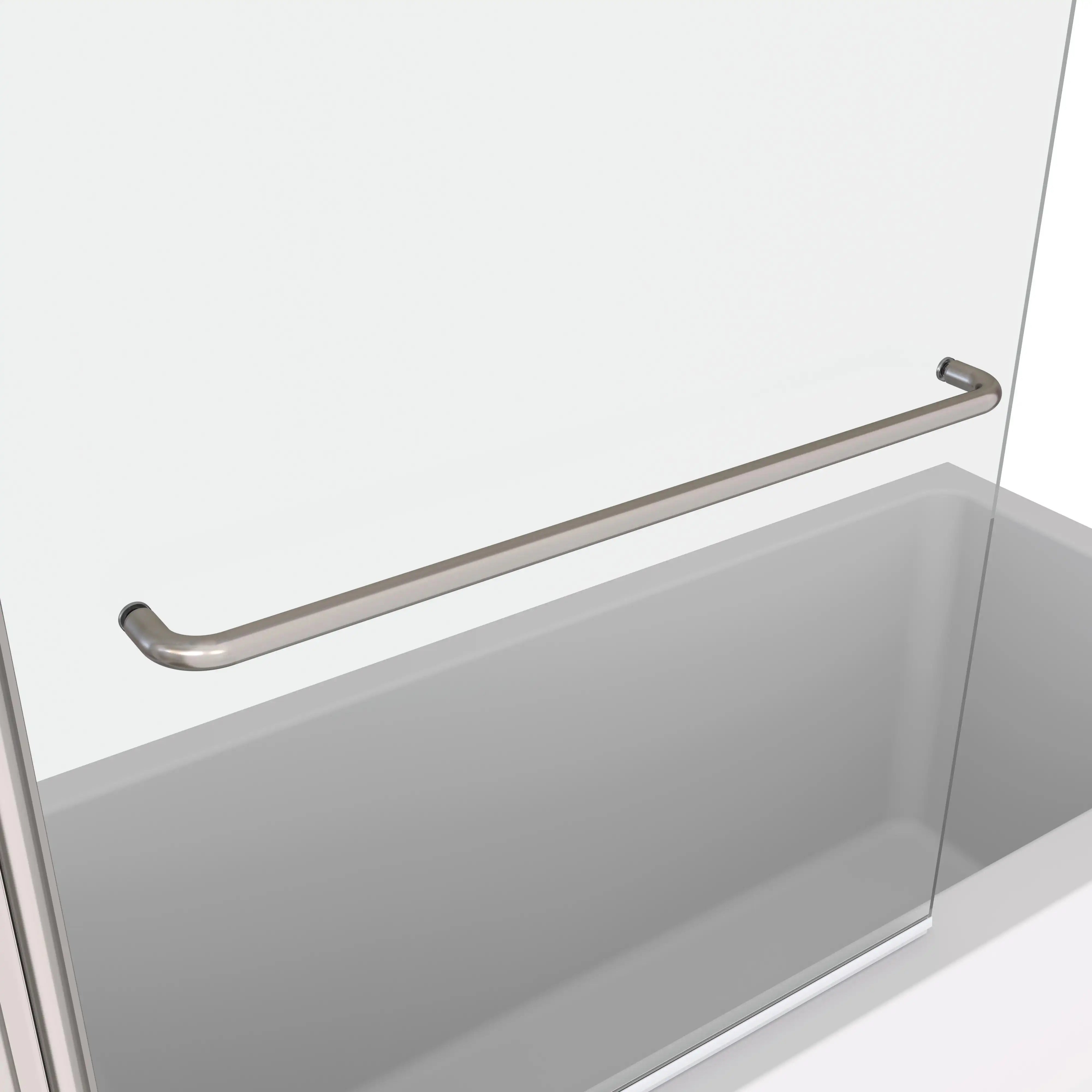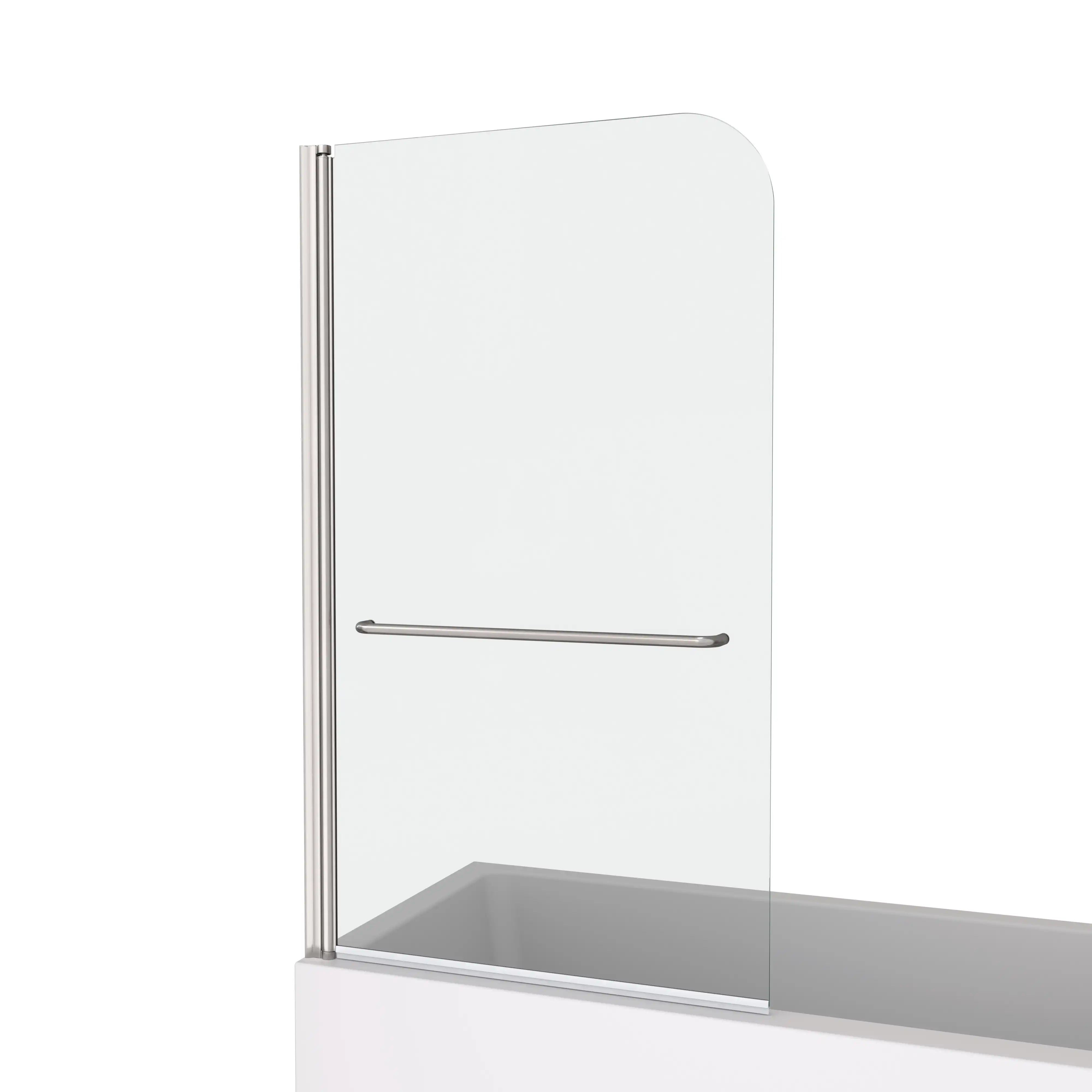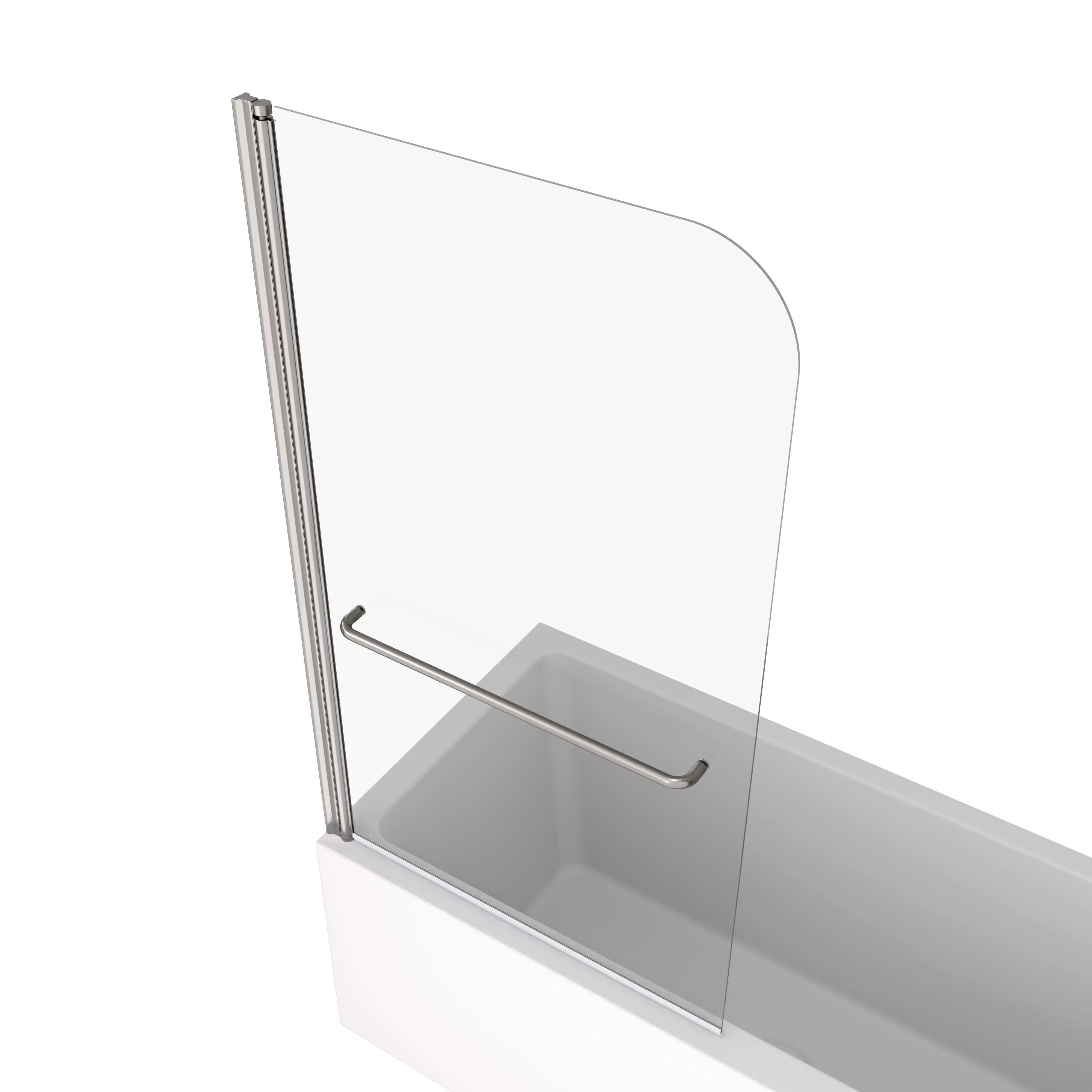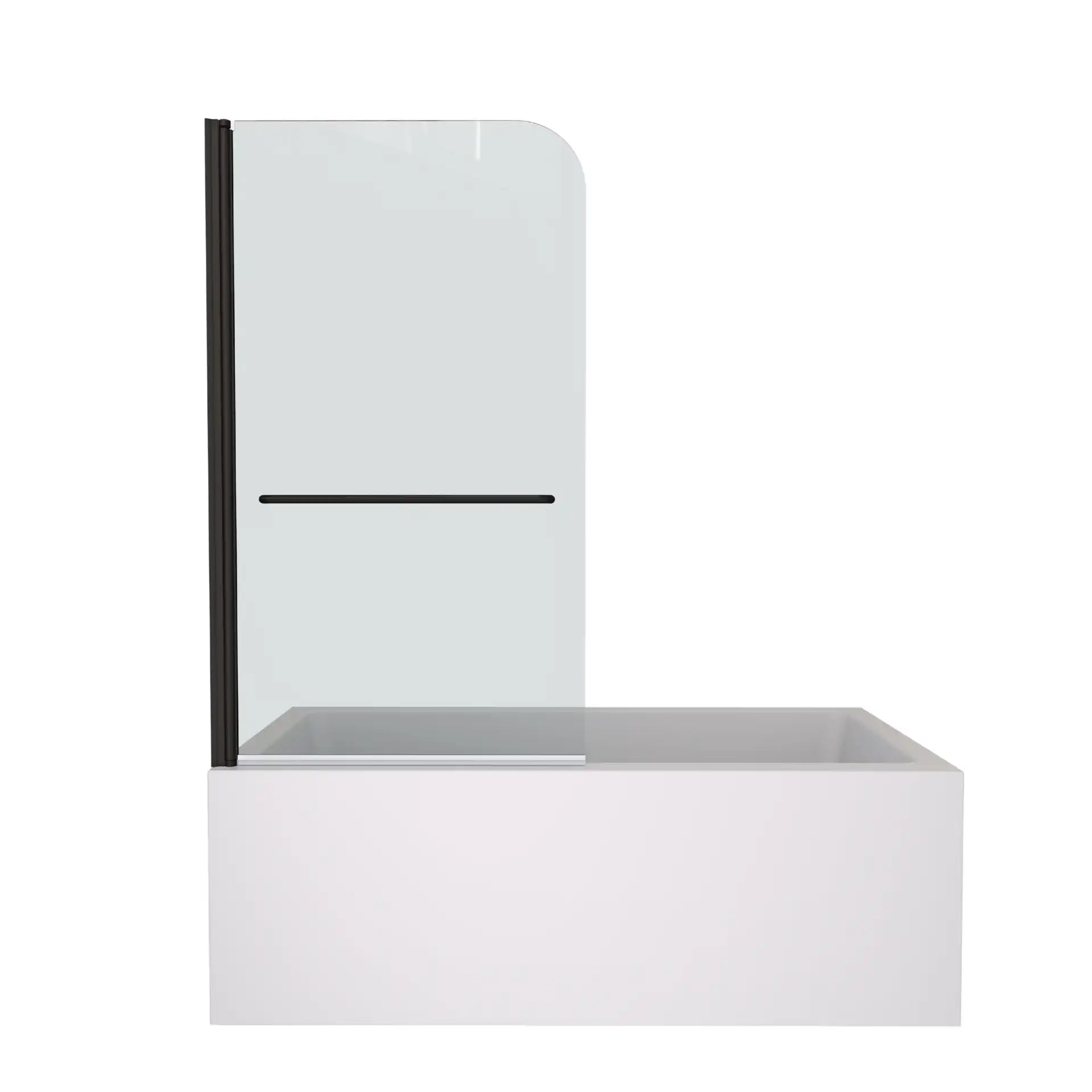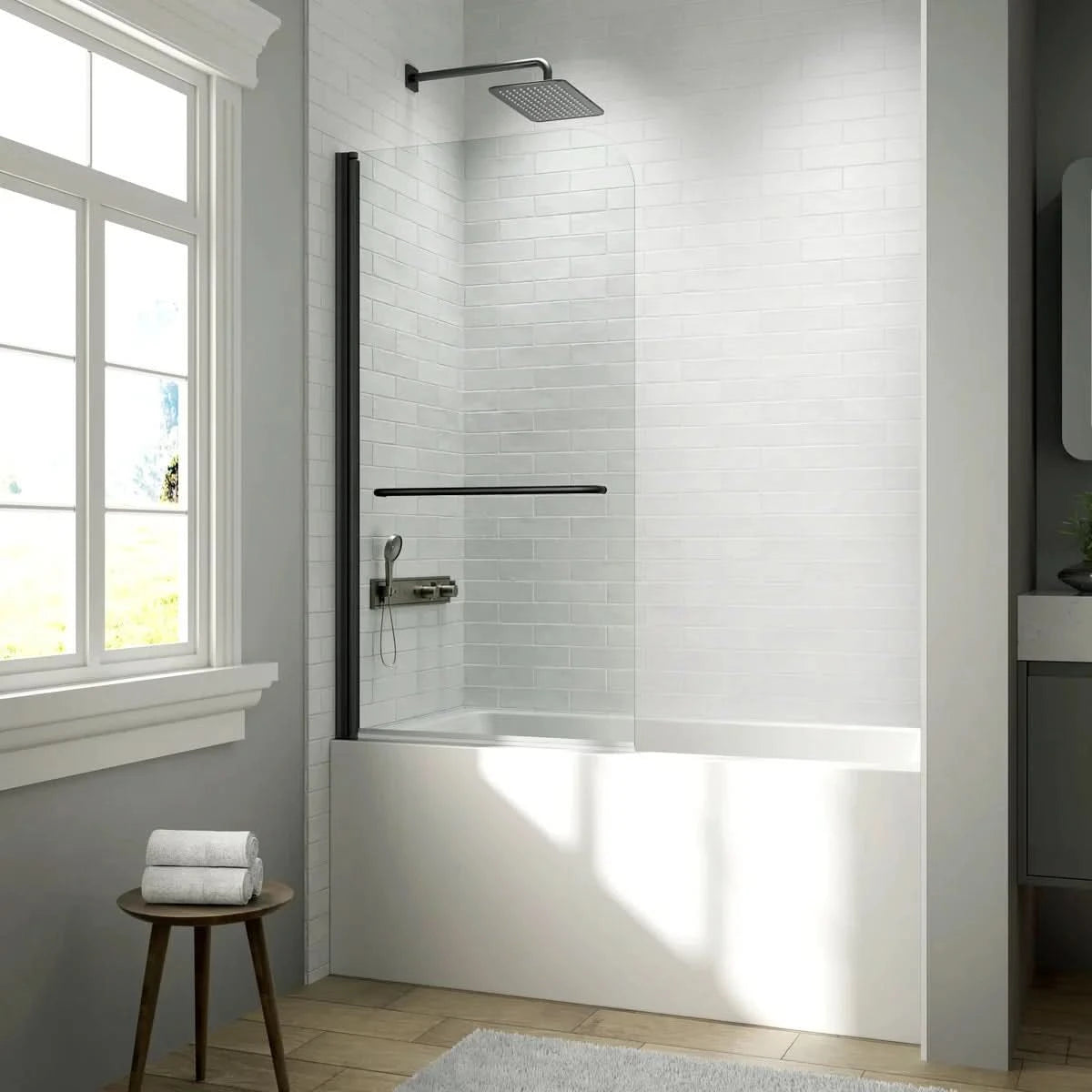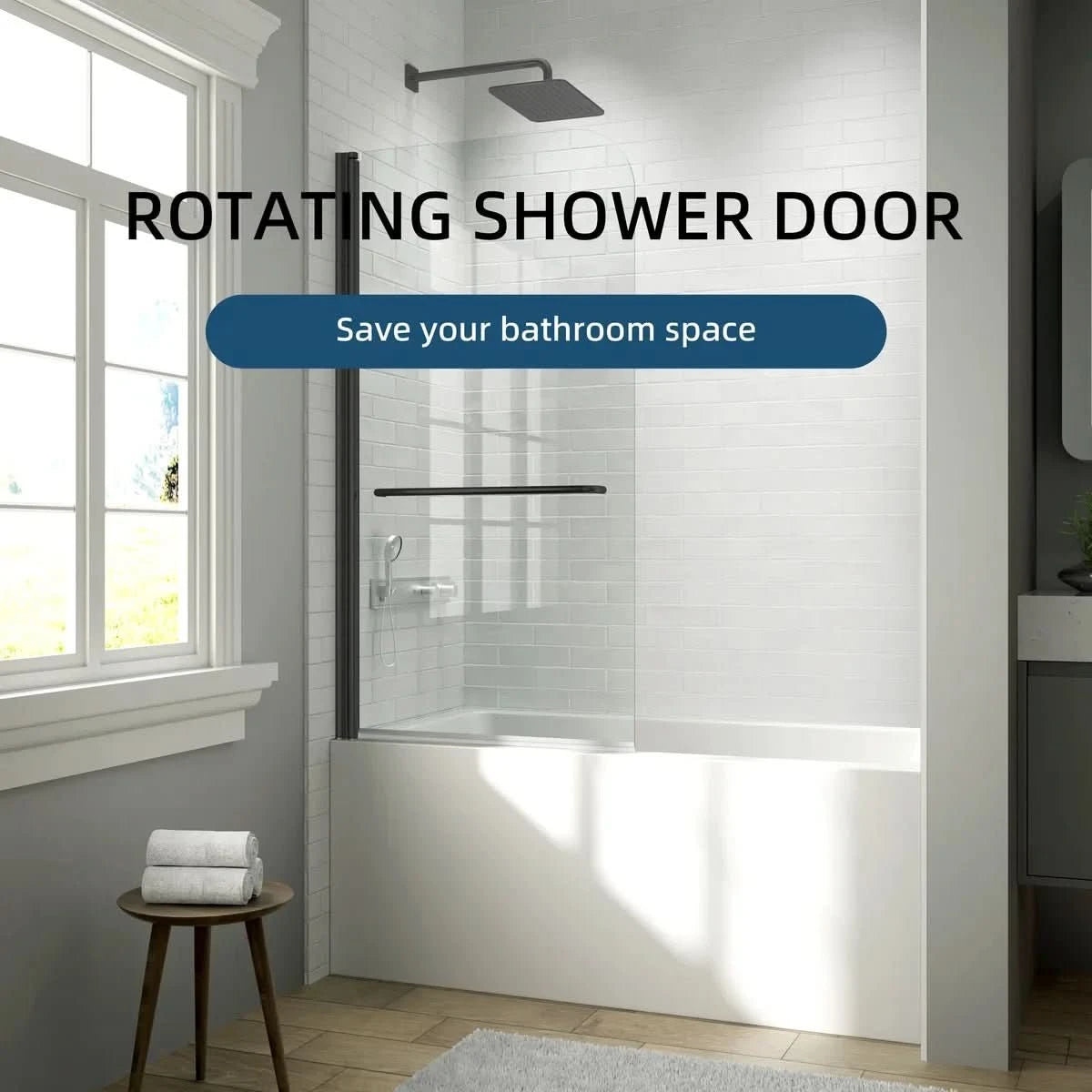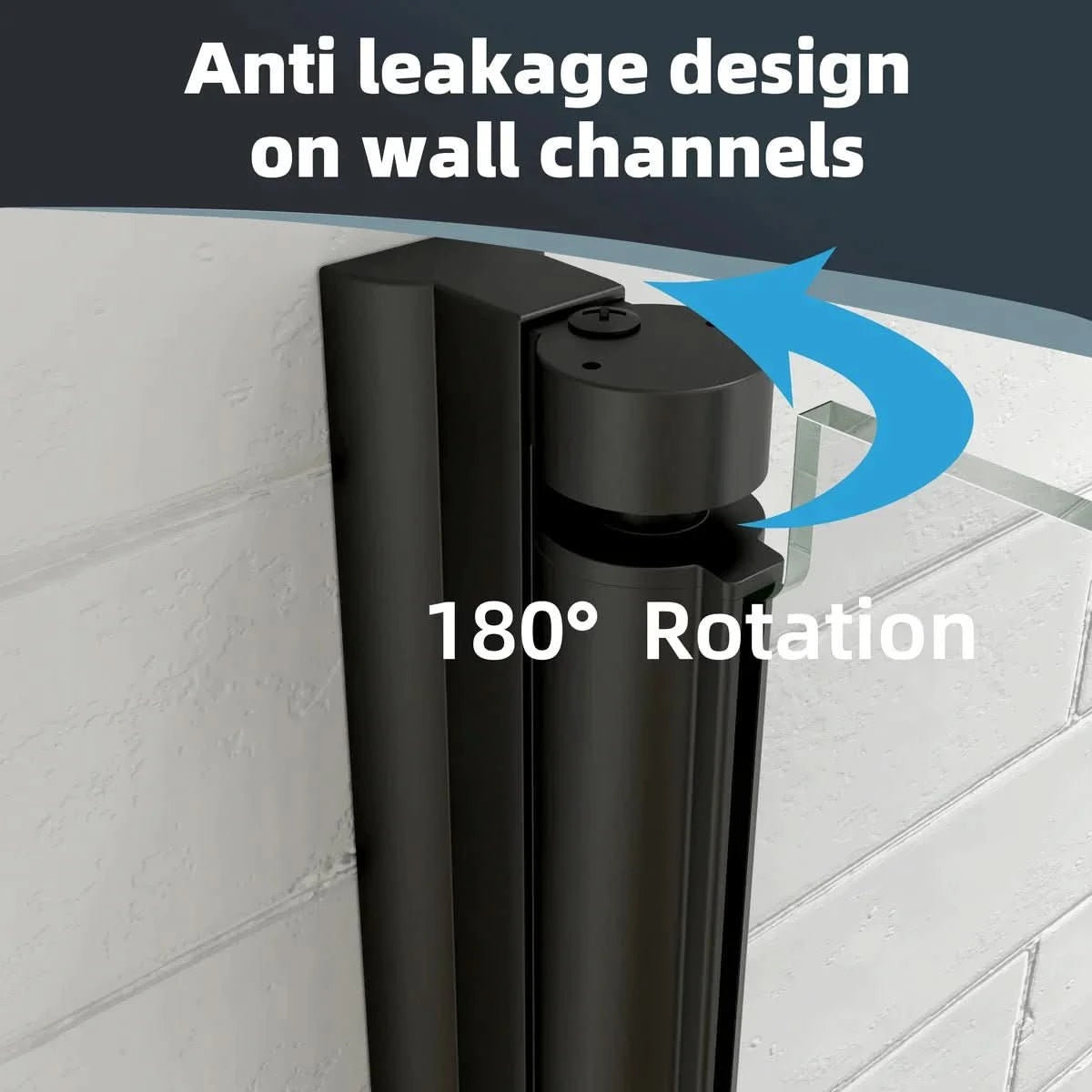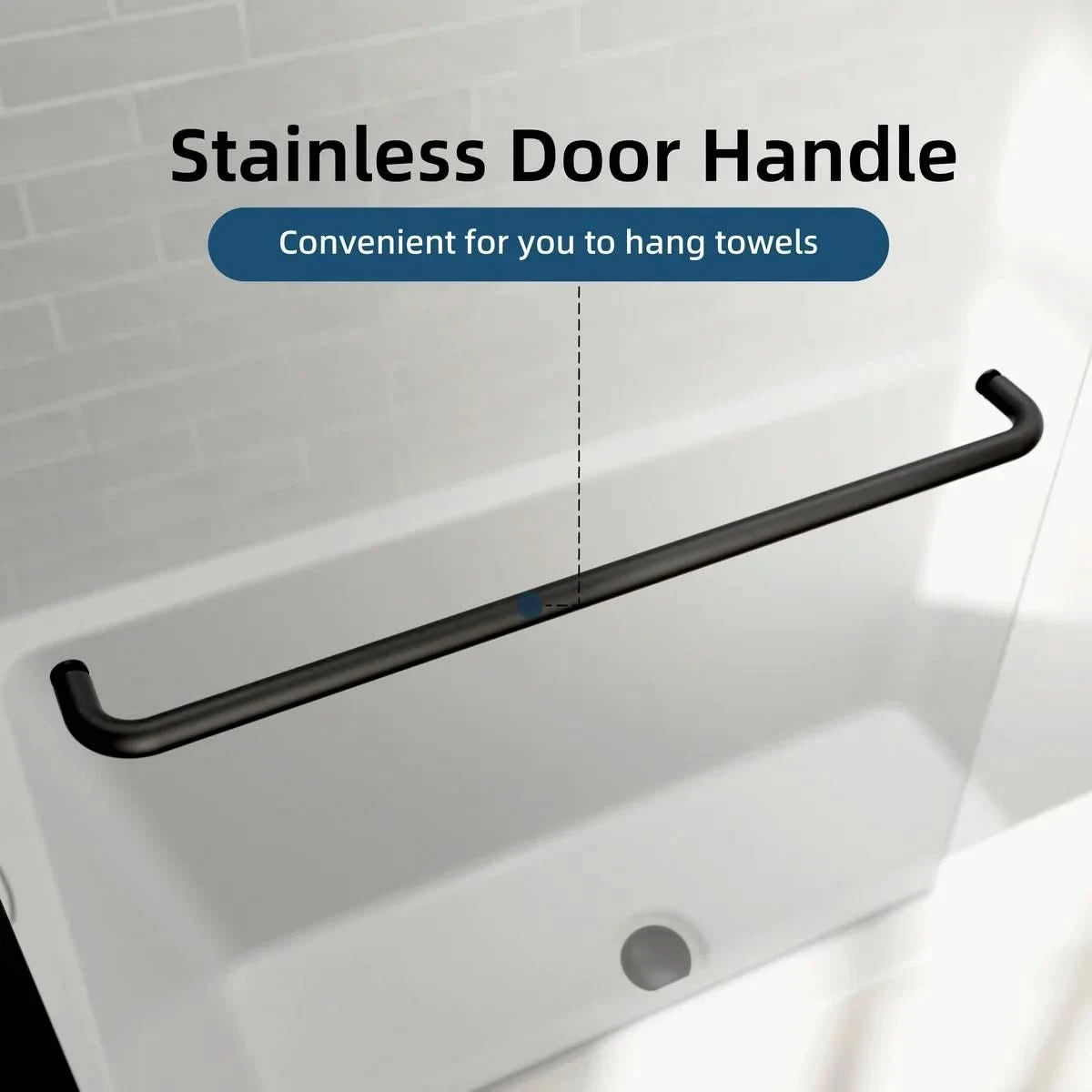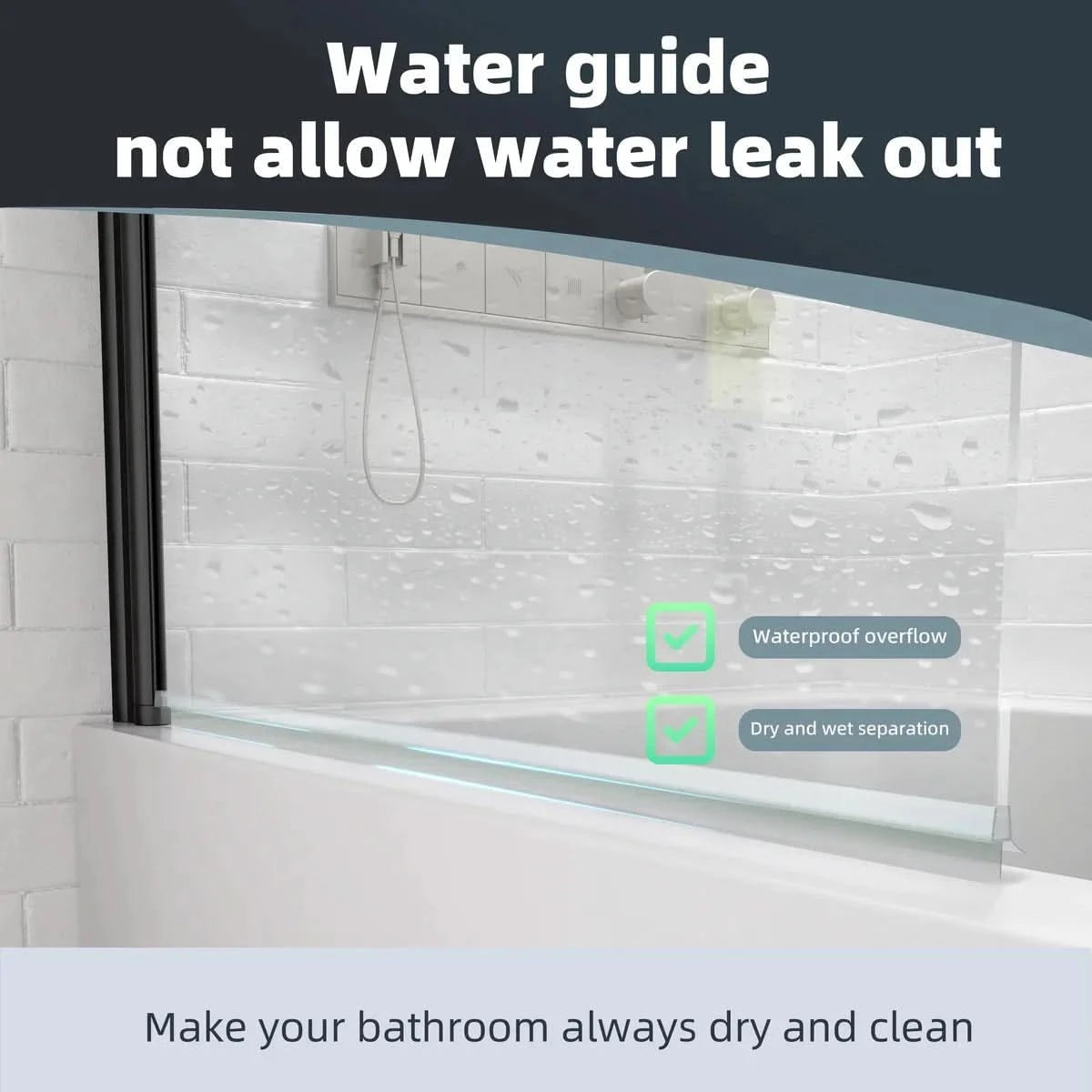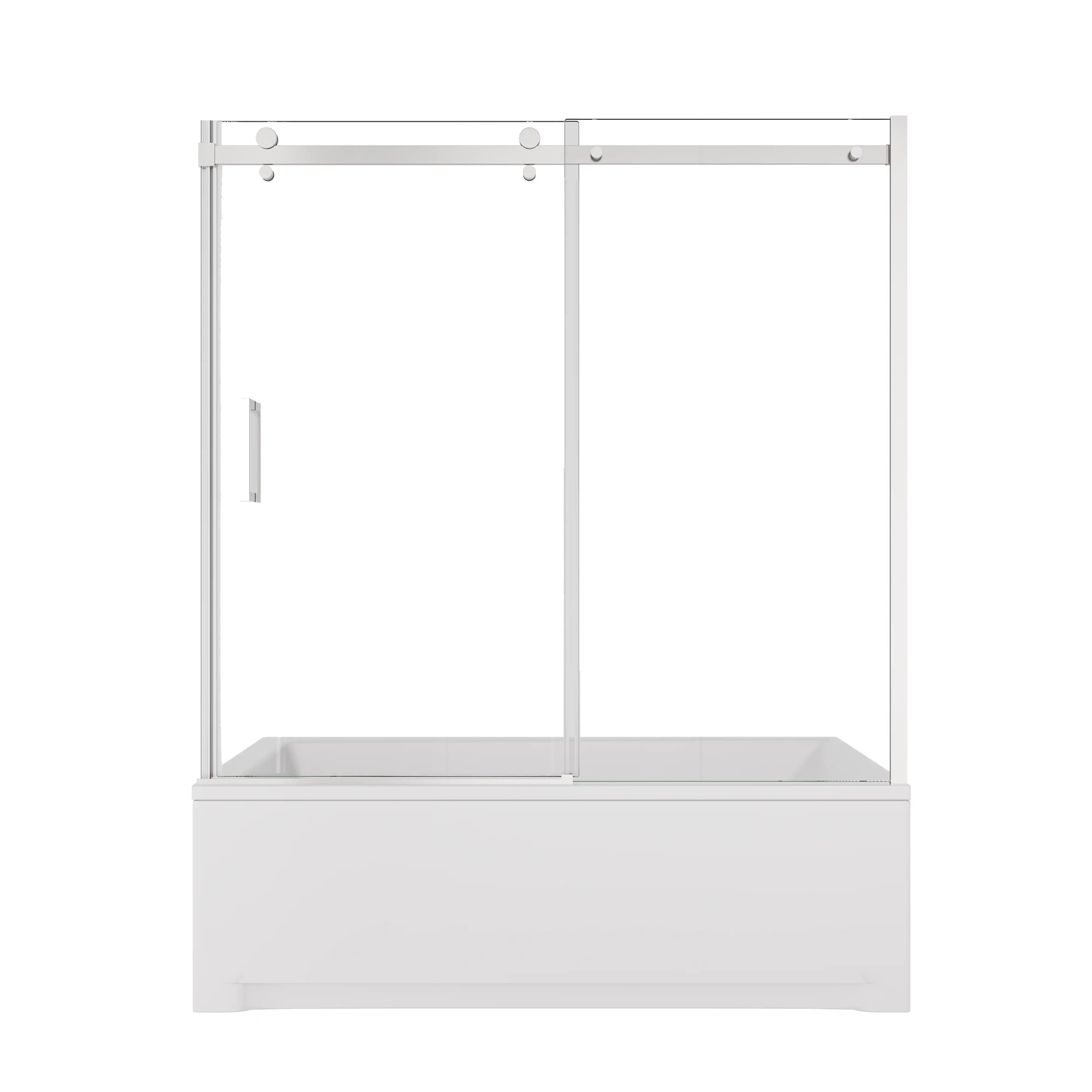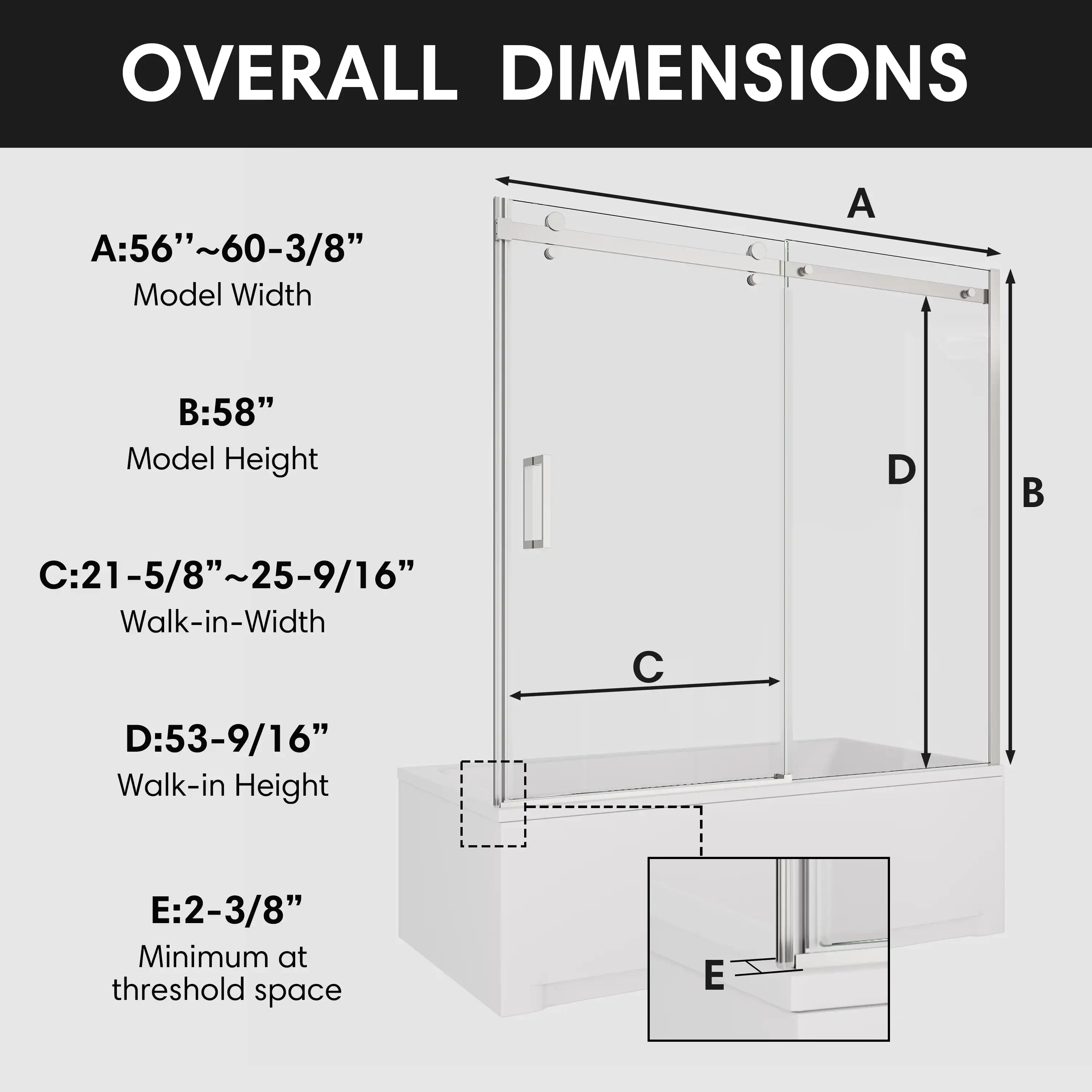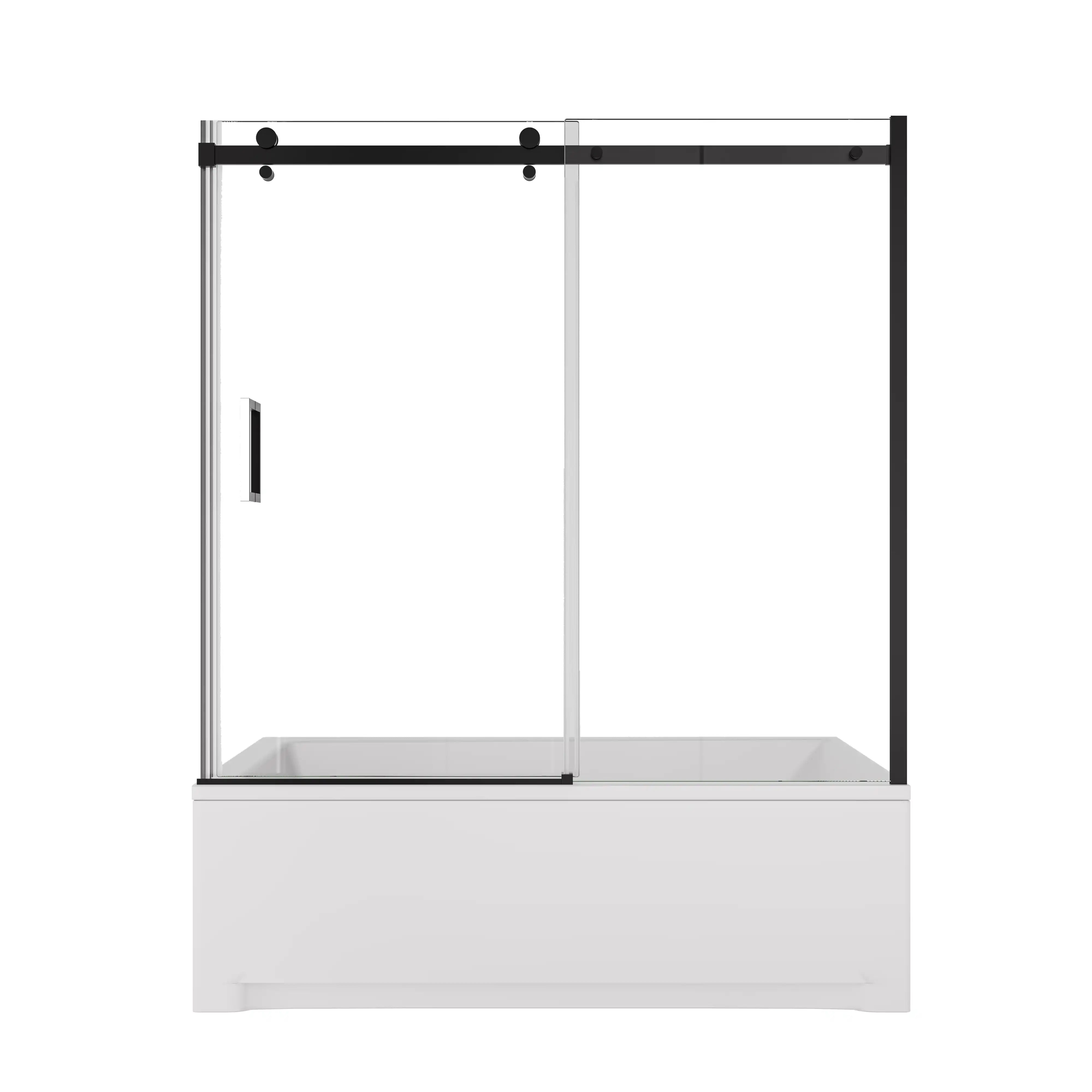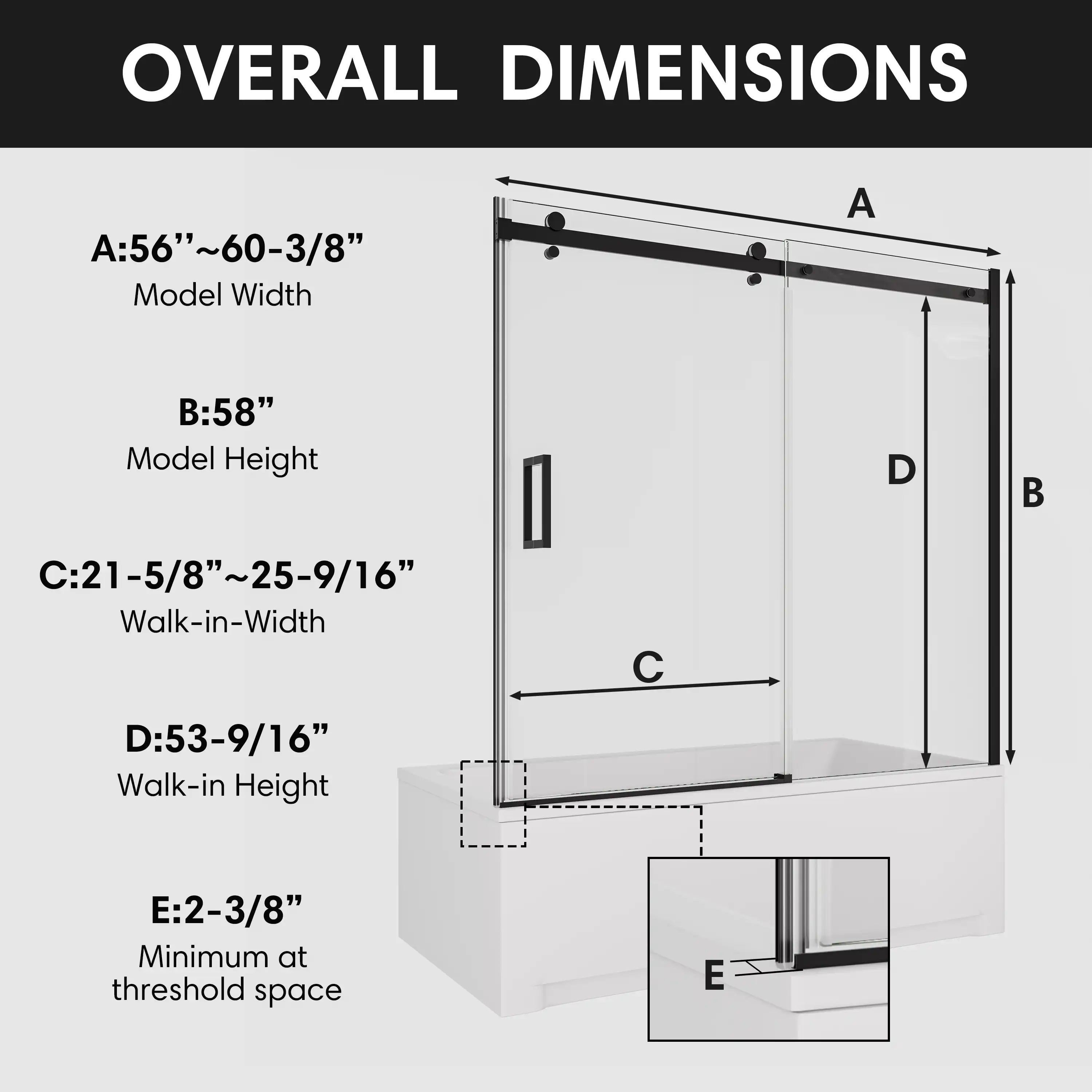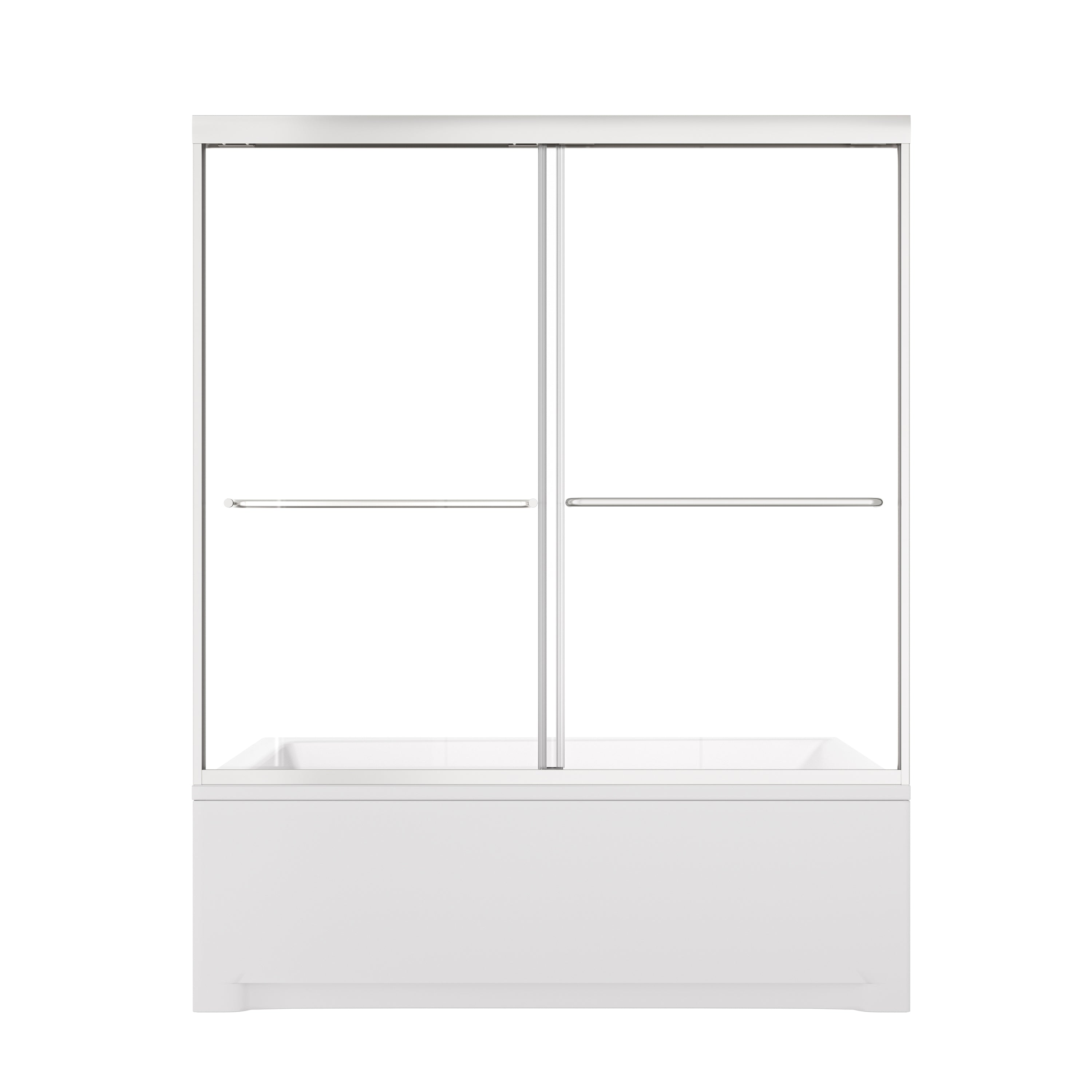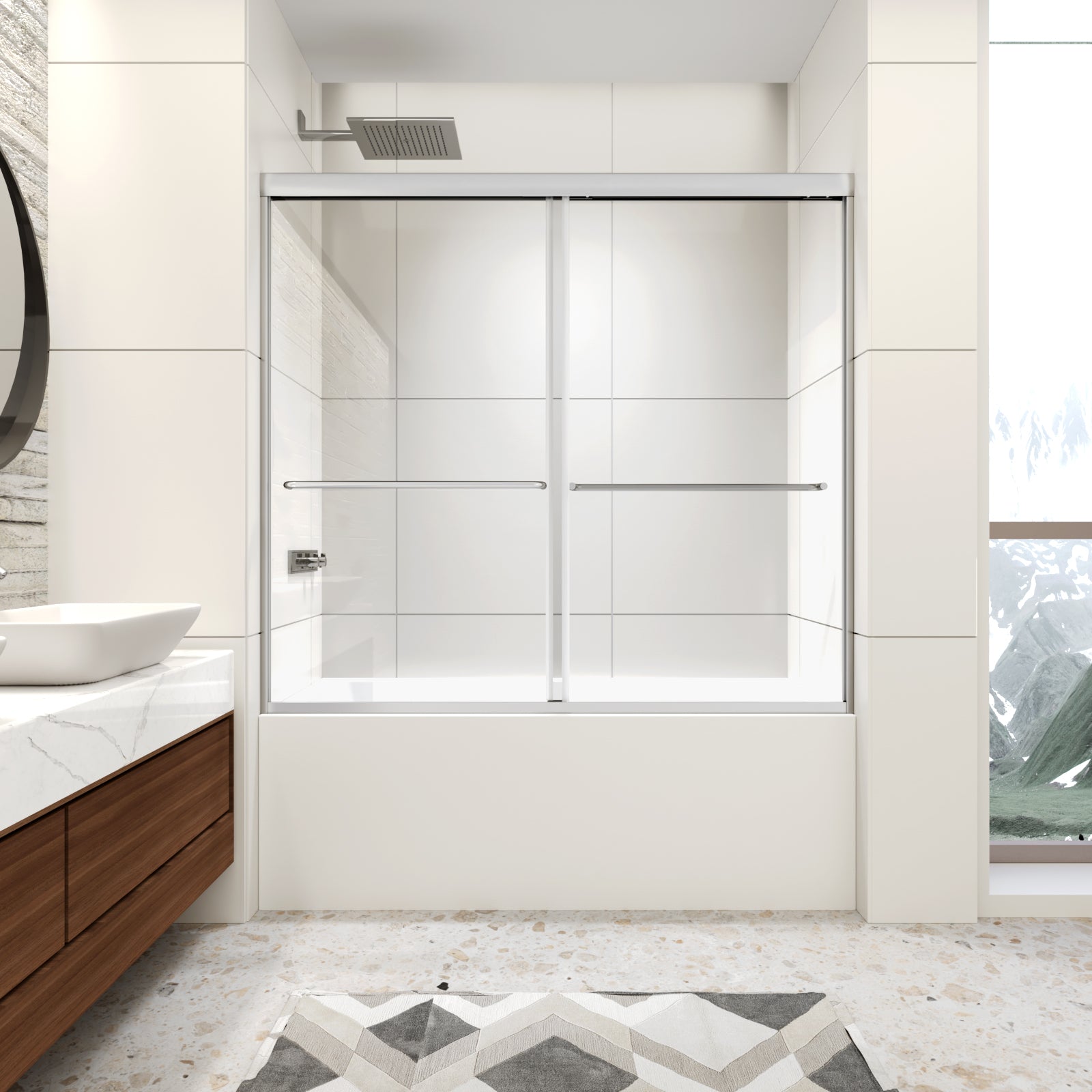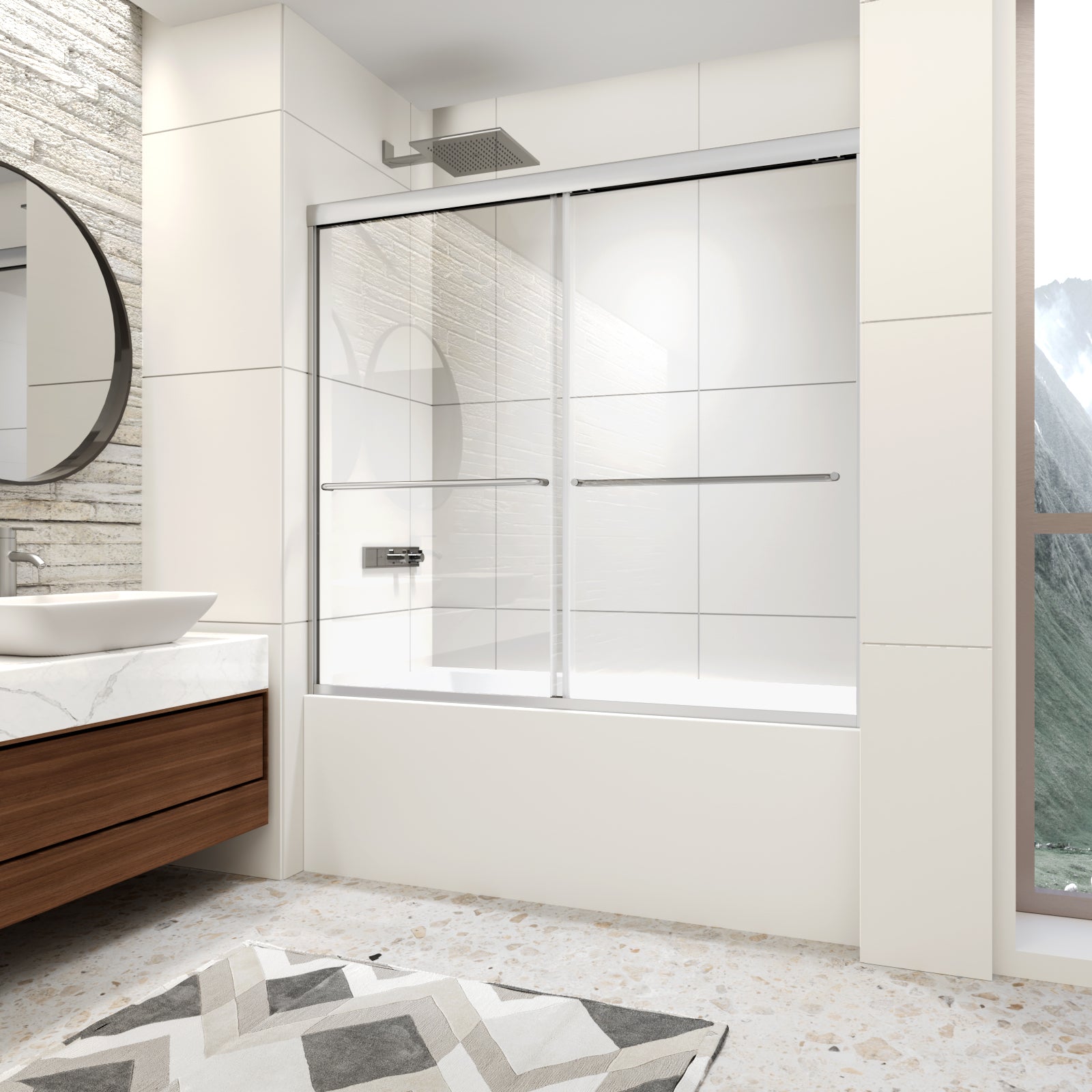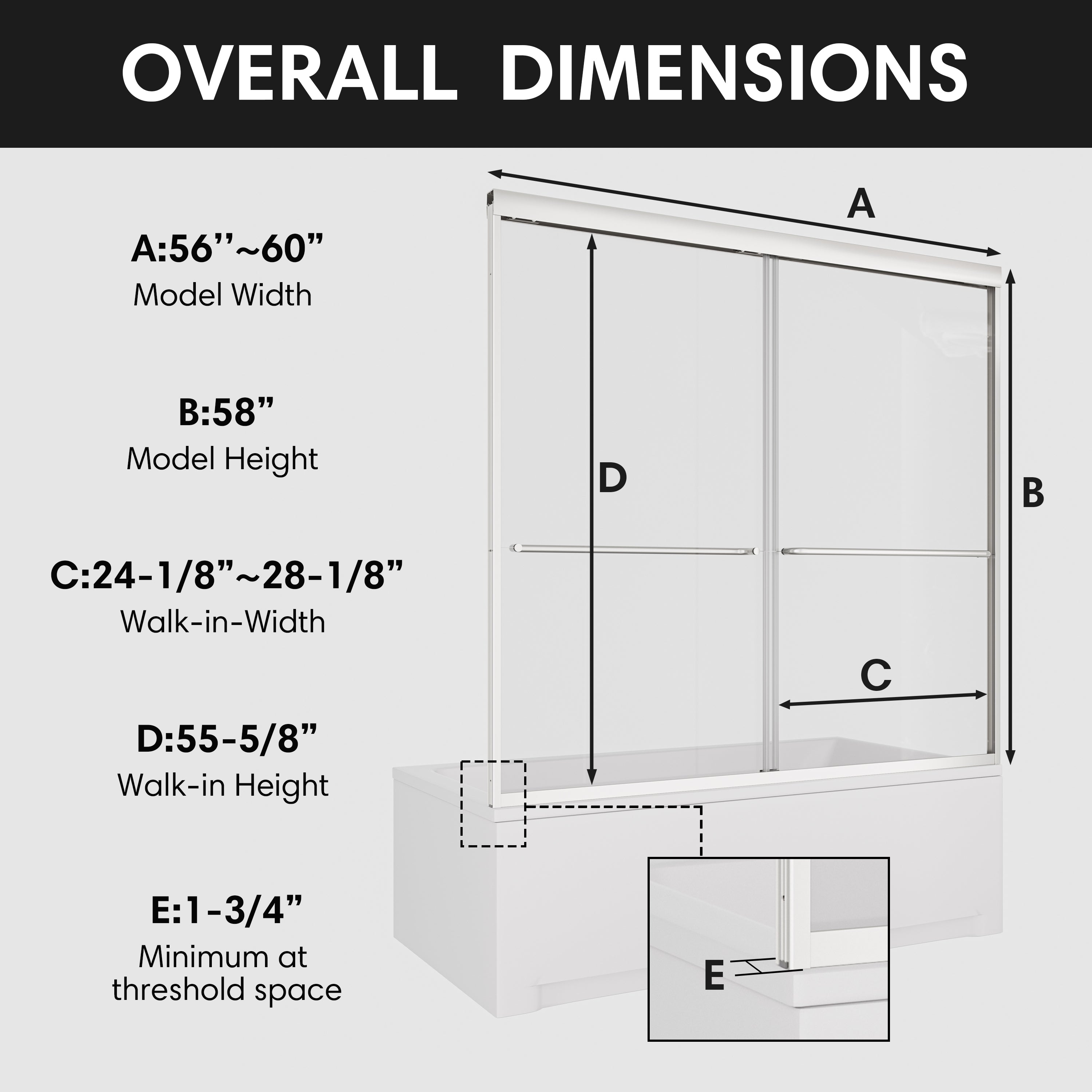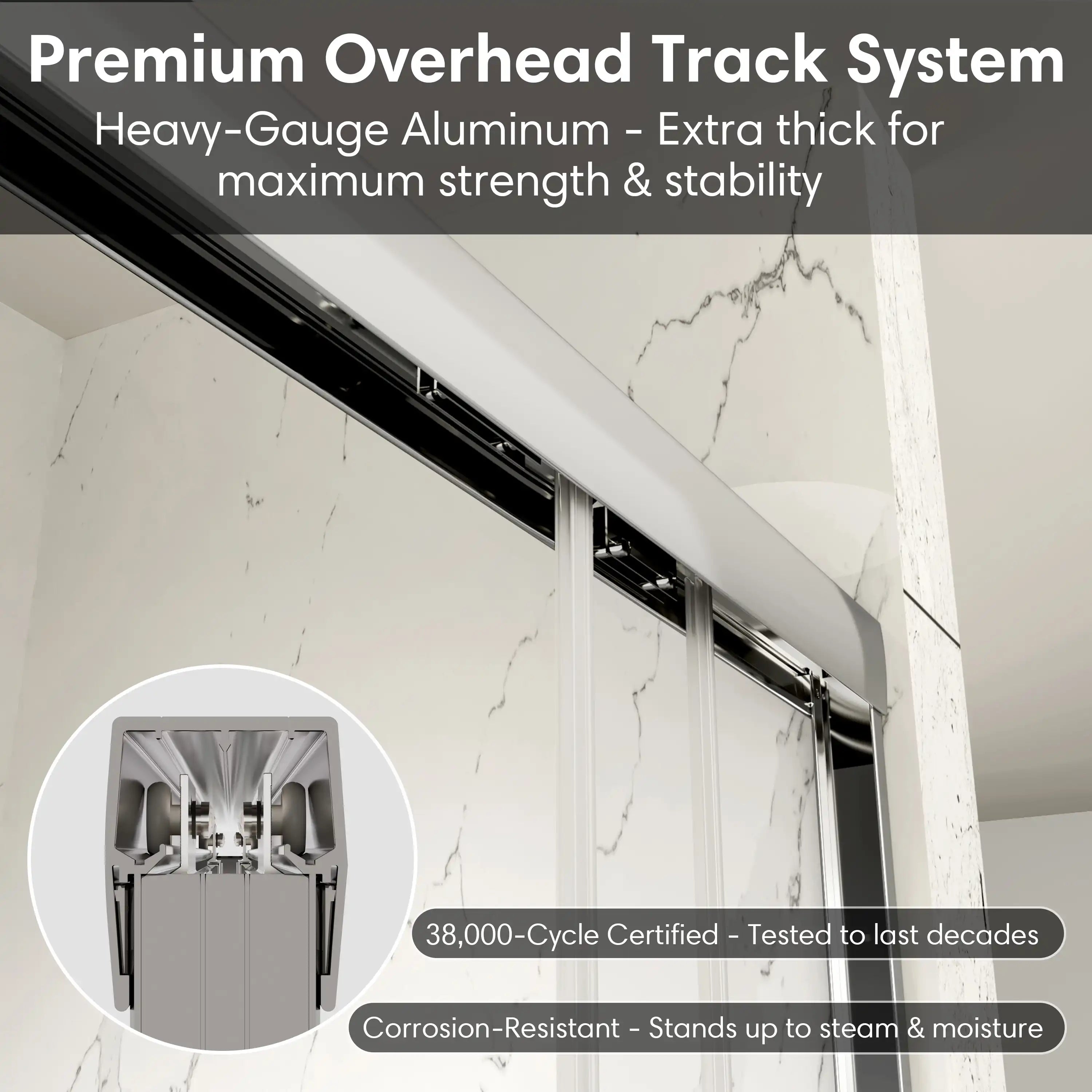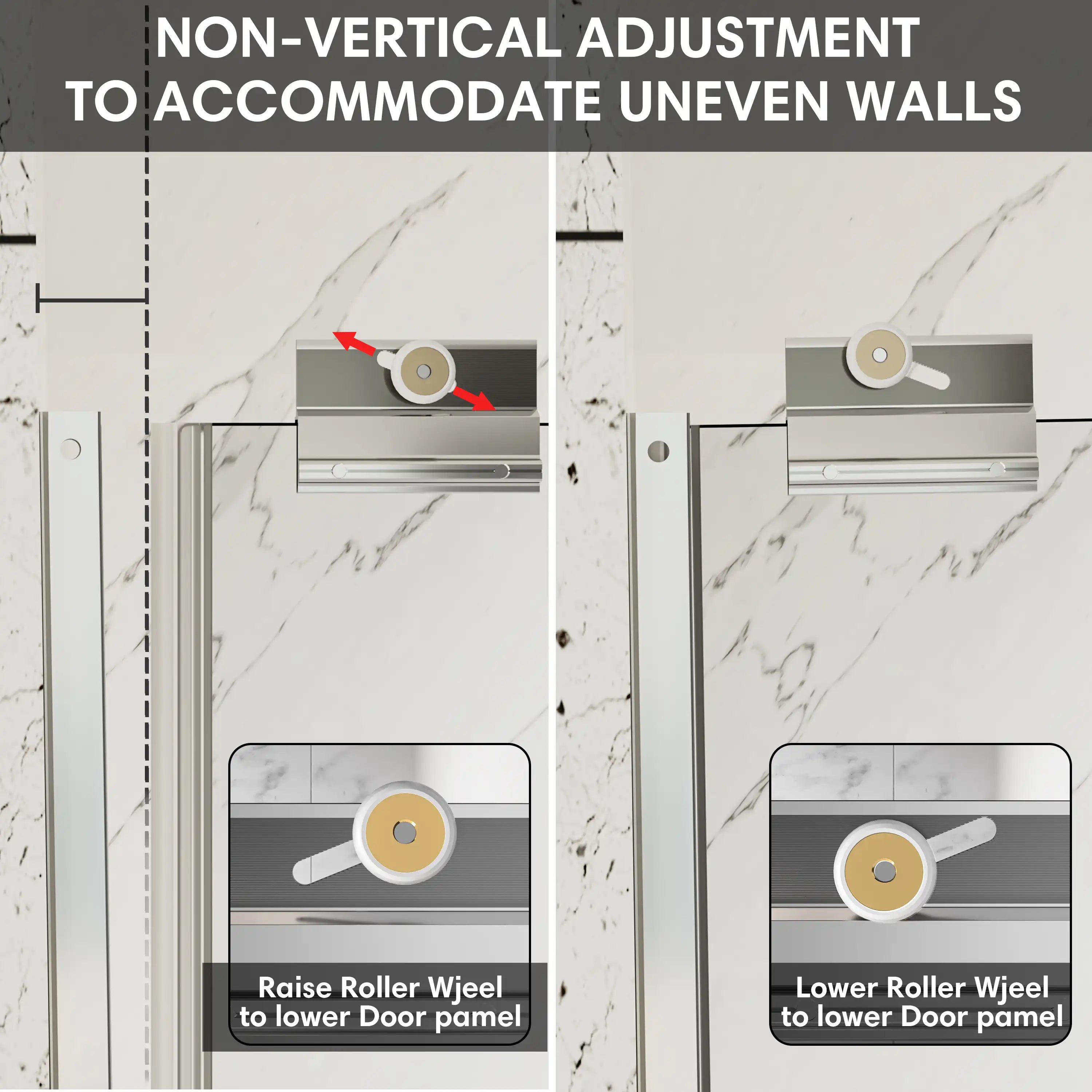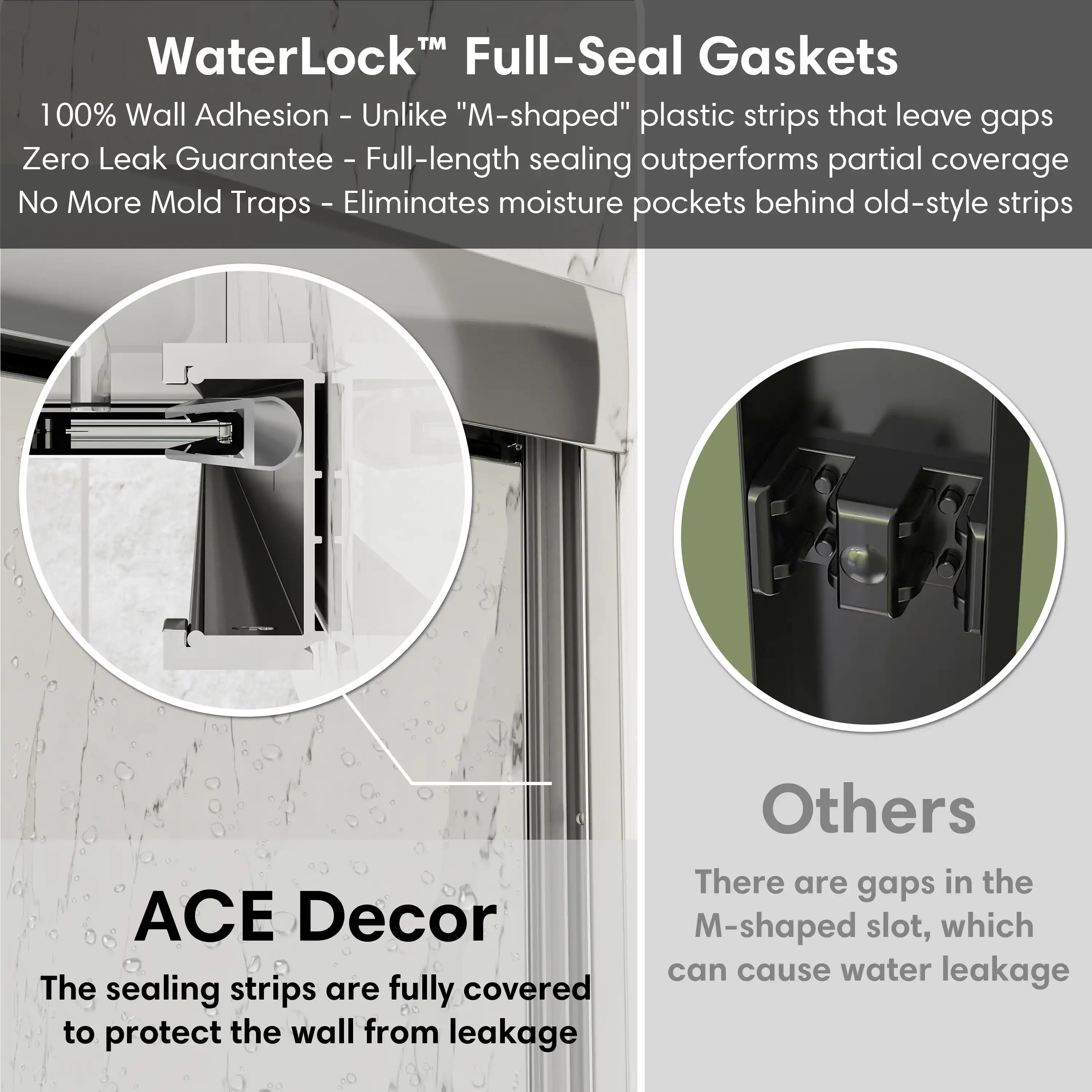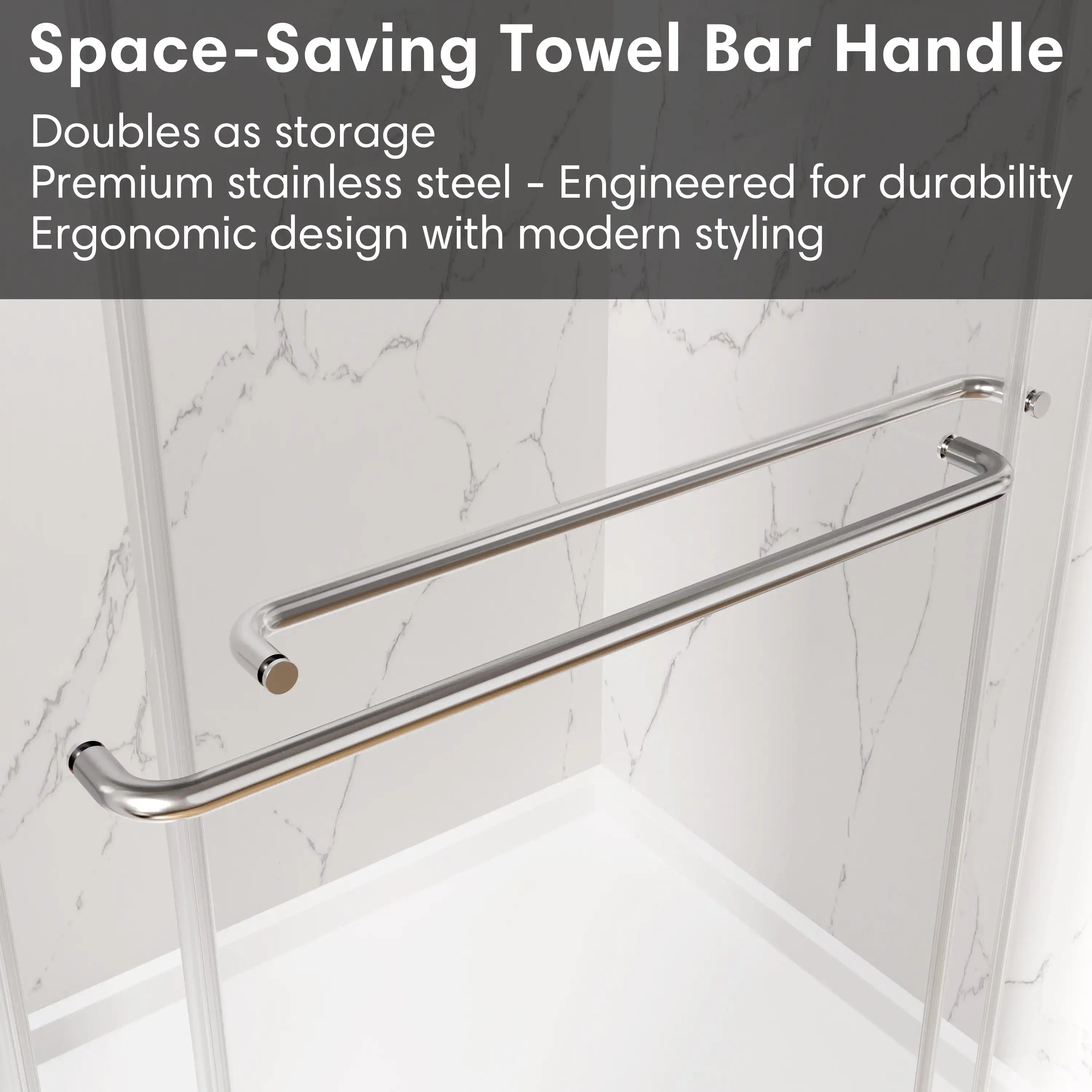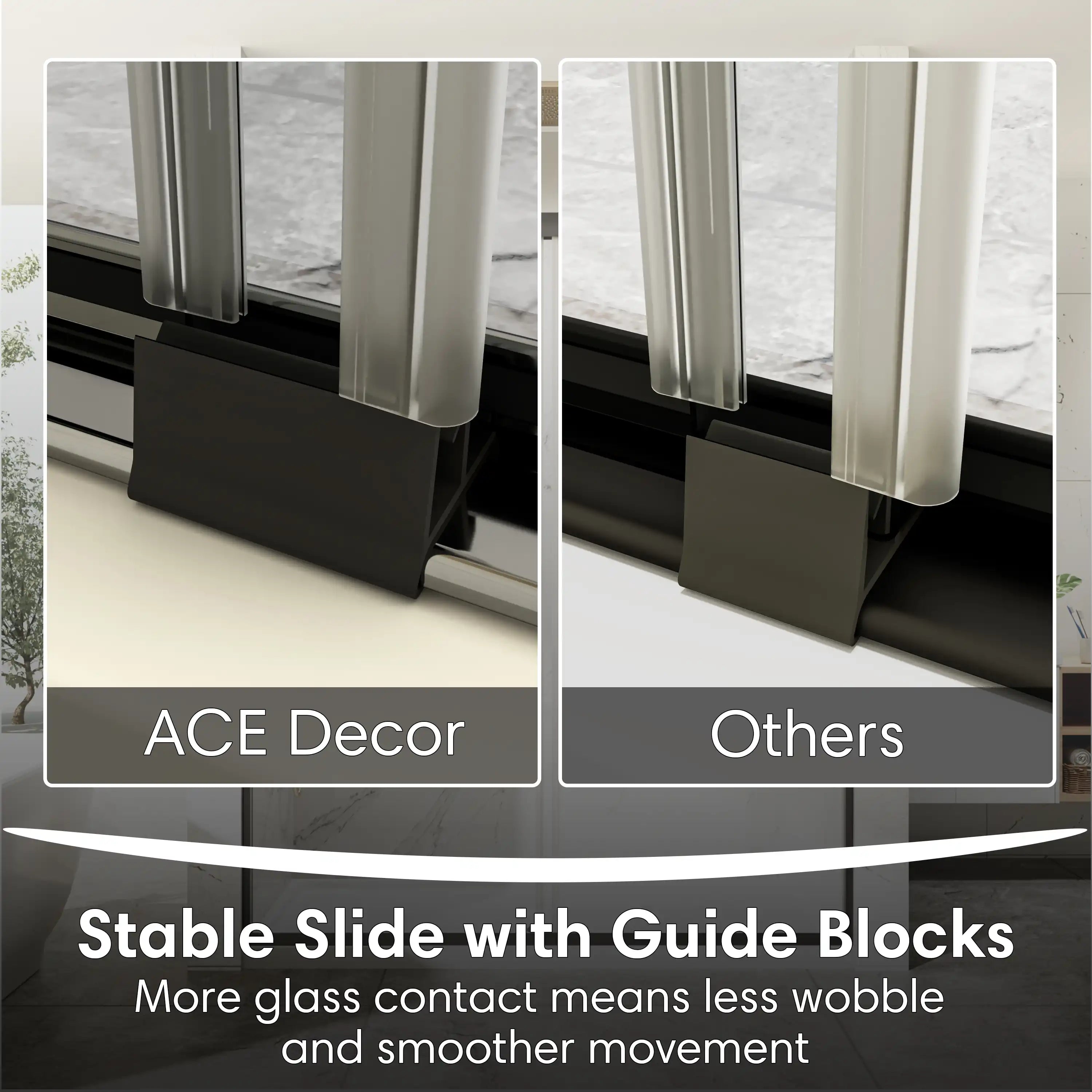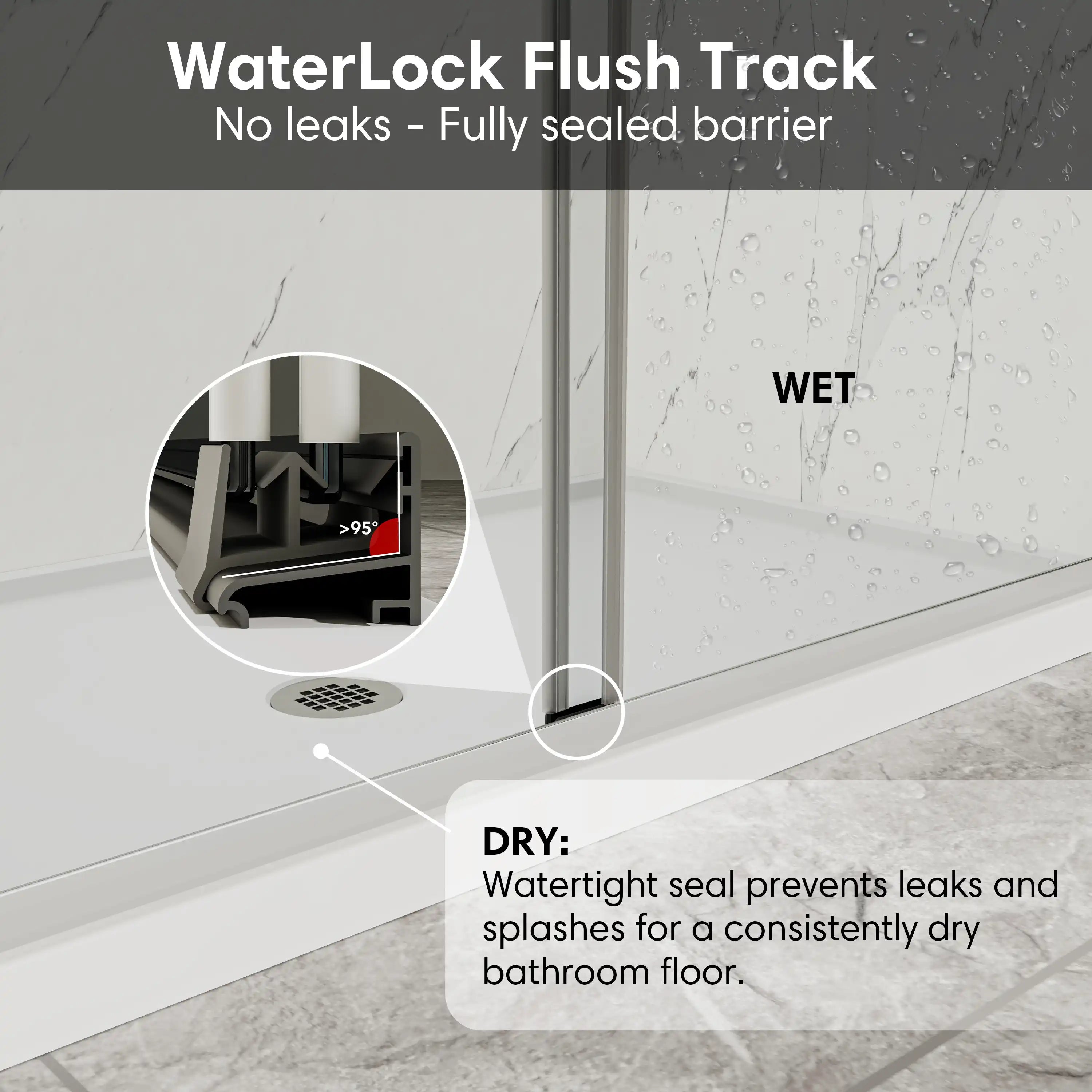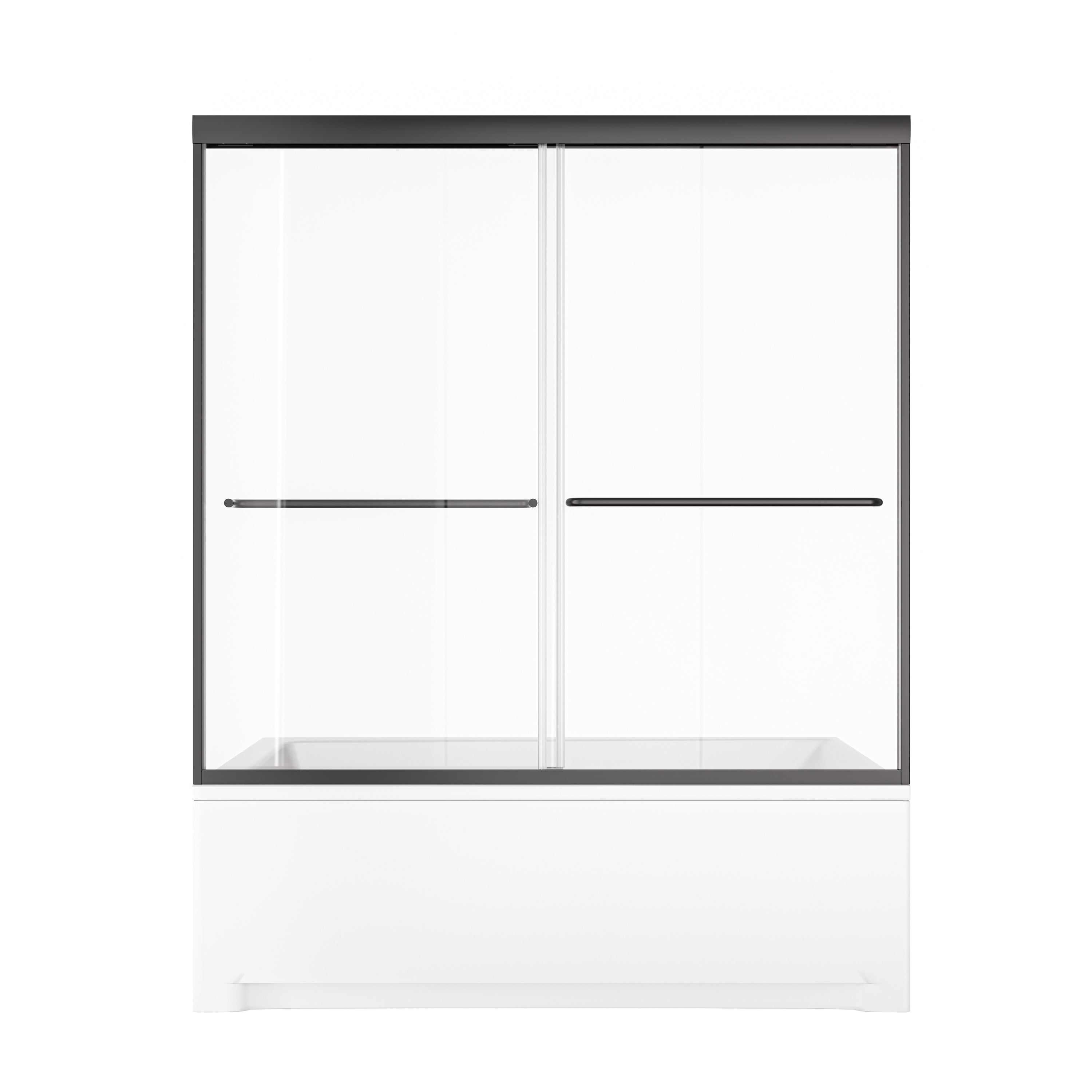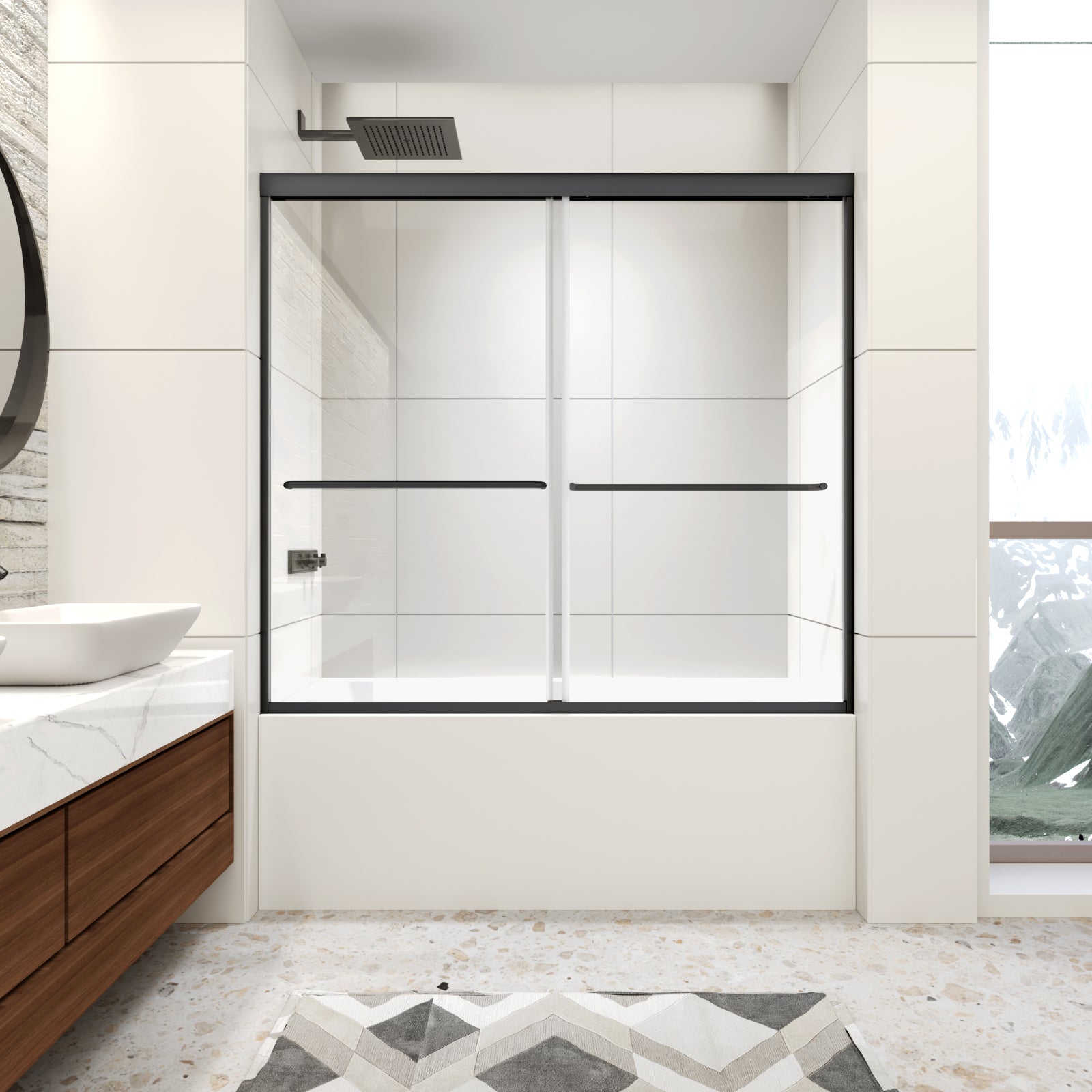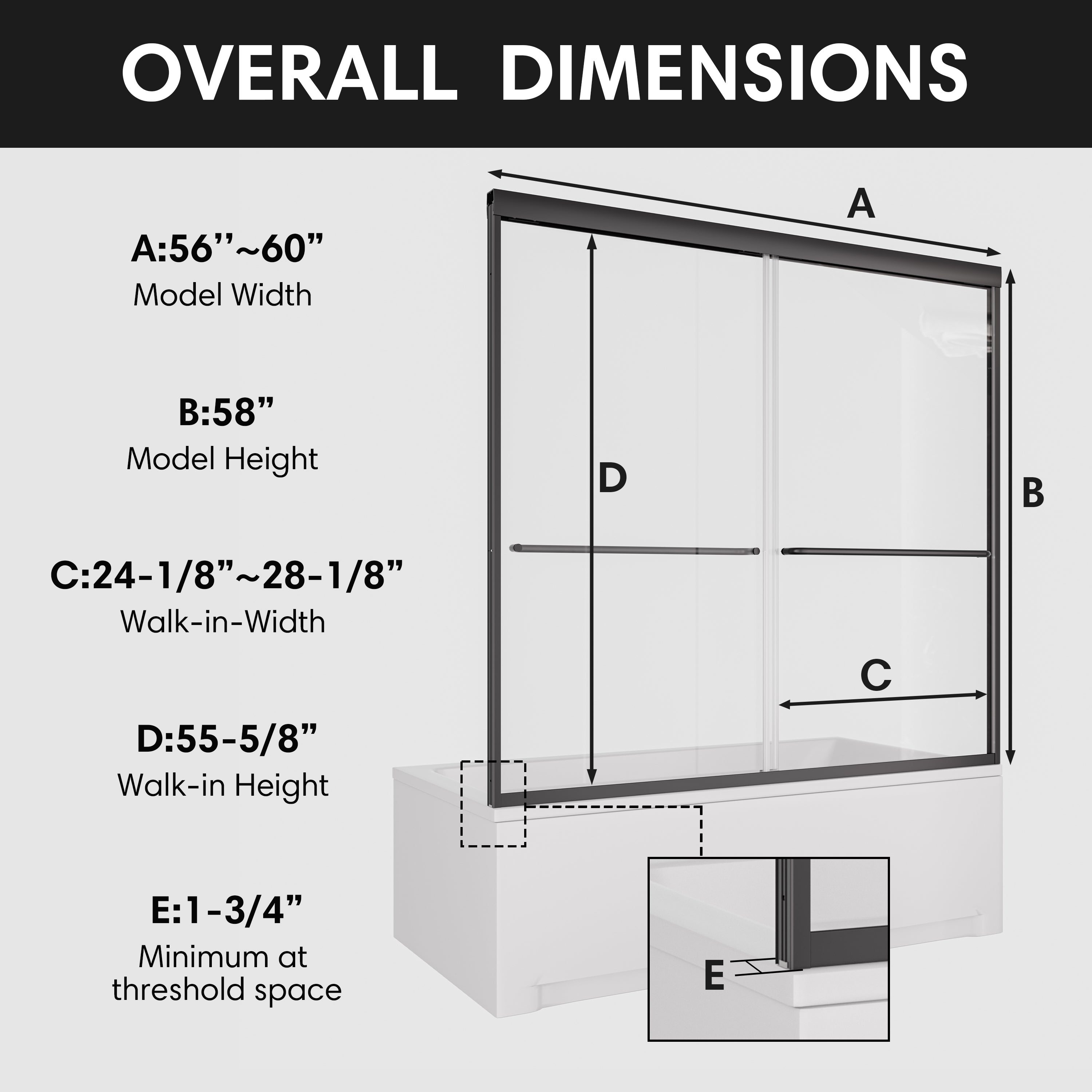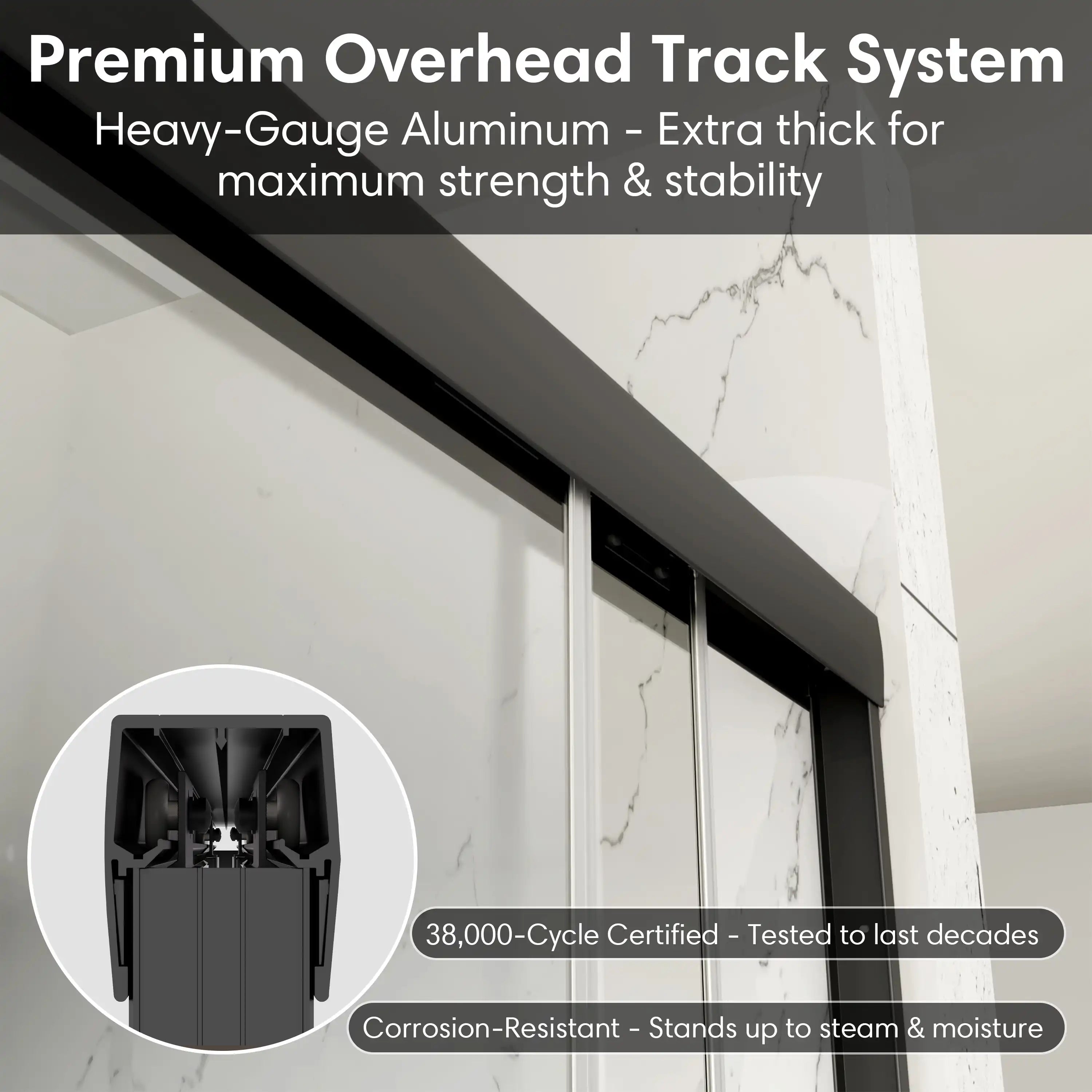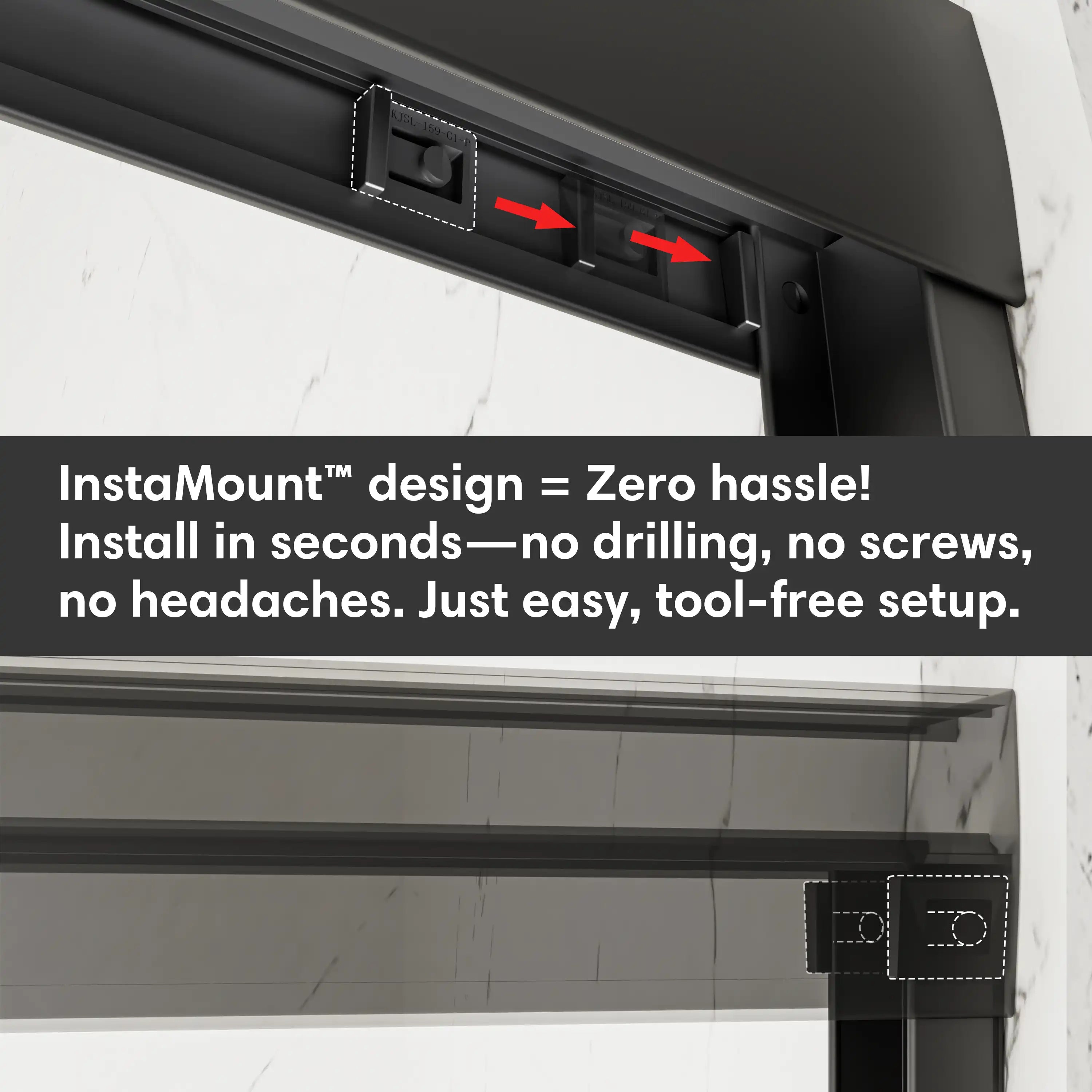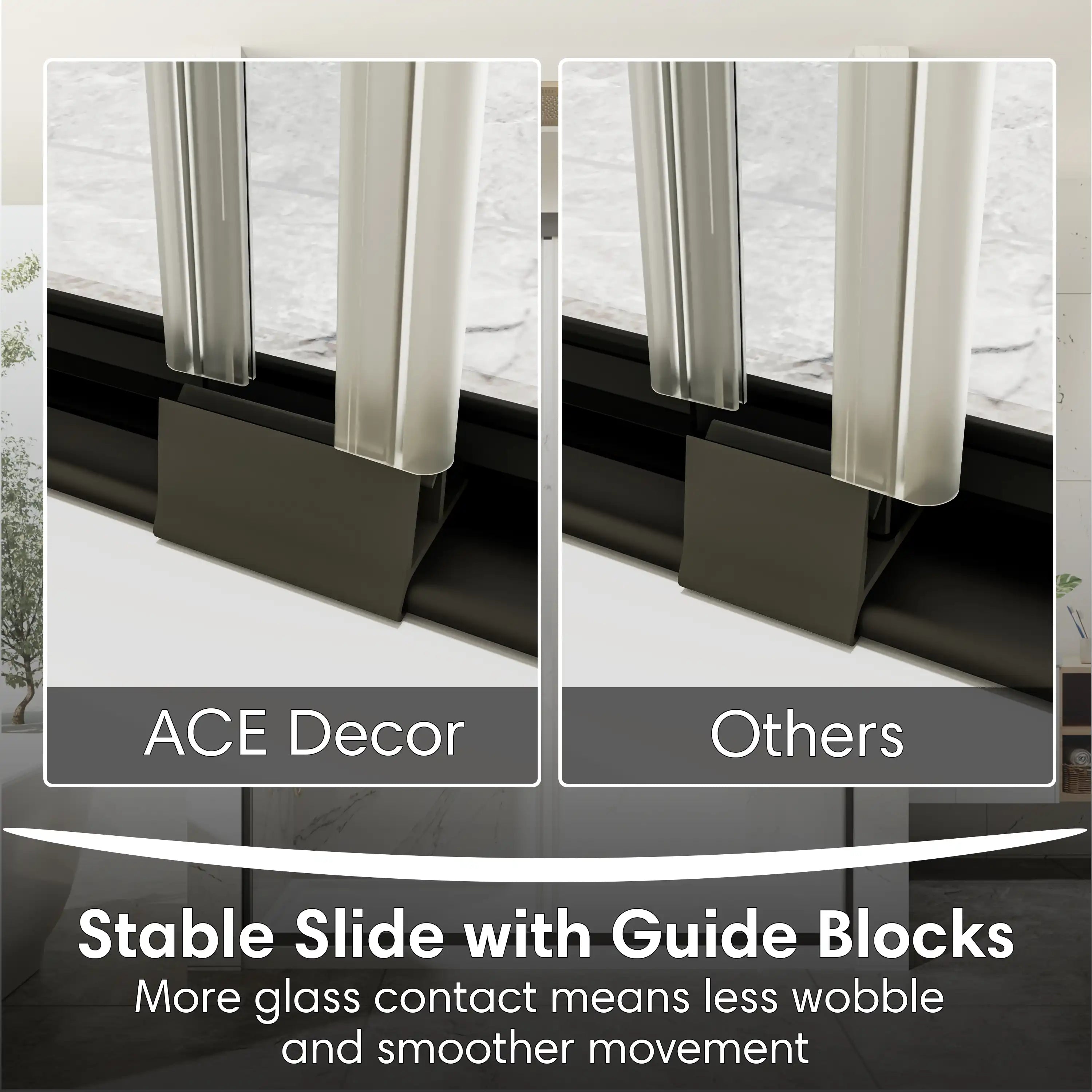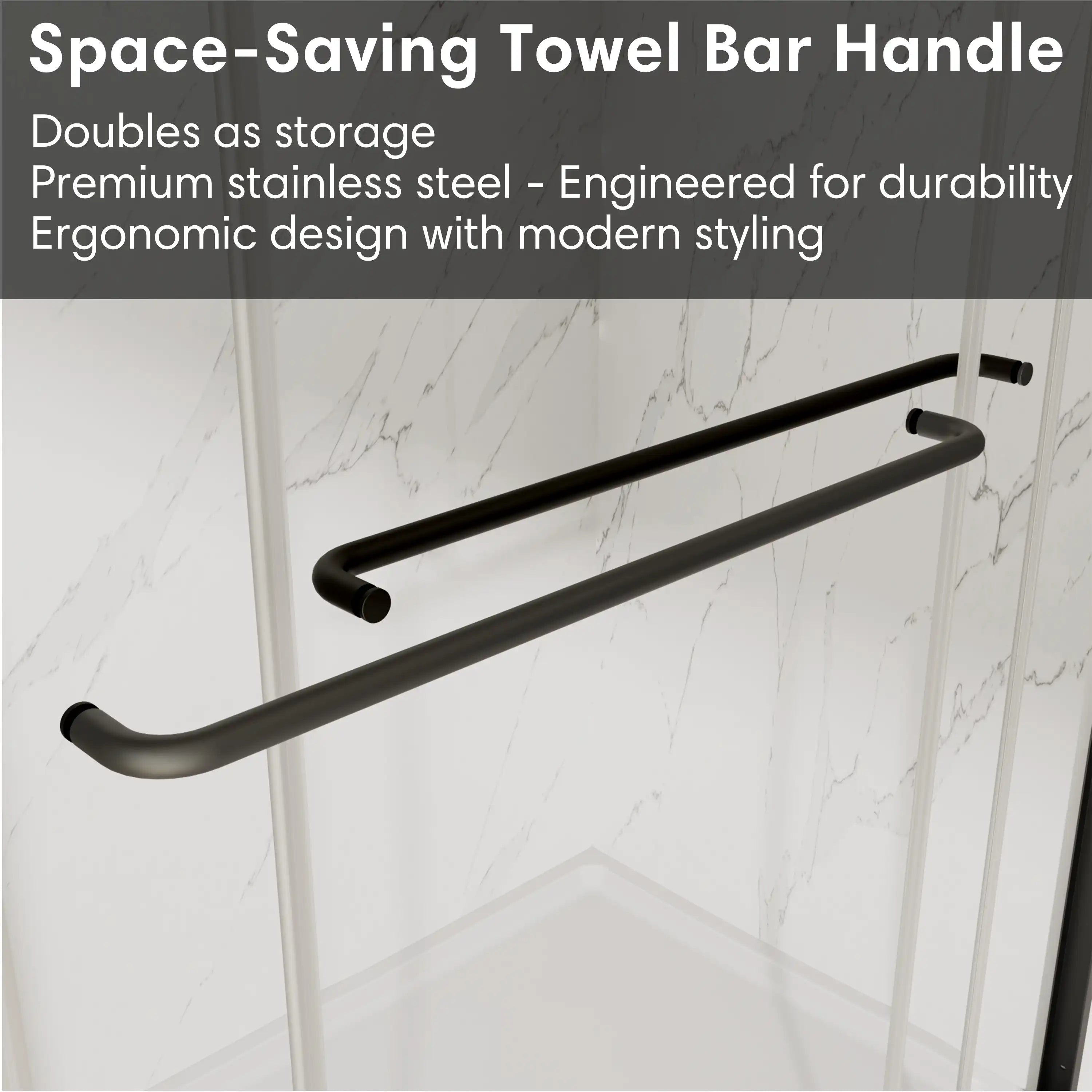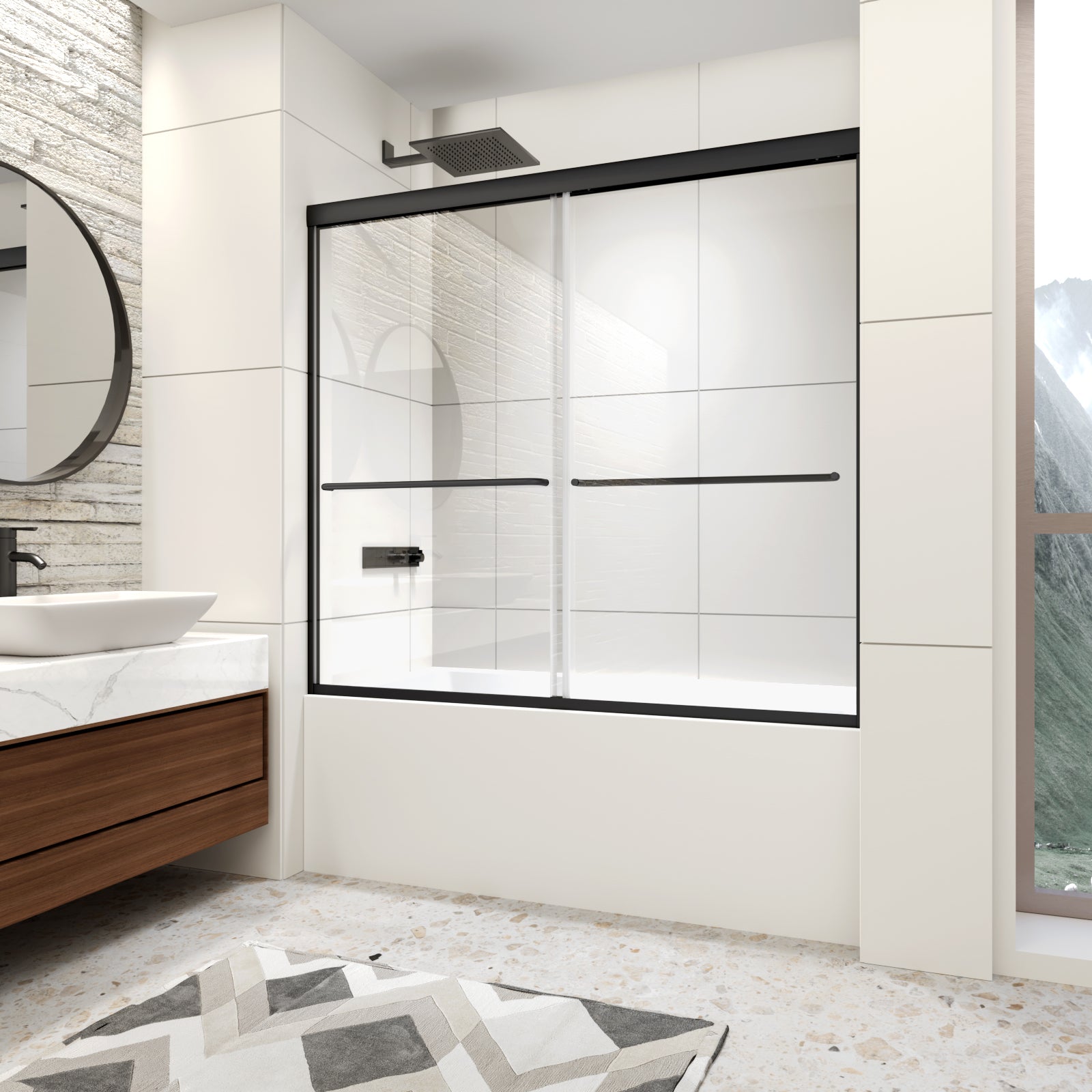A relaxing bath should feel like a retreat, not a chore. Yet splashing water, lingering moisture, and limited privacy can quickly disrupt the experience. The right bathtub door solves these issues by keeping water contained, preserving warmth, and adding a sleek touch to your bathroom.
Today’s bathtub doors come in a wide range of sizes, frames, and opening styles, from sliding to pivoting, allowing homeowners to find the perfect fit for both function and style. Choosing the right option not only protects your bathroom from water damage but also elevates everyday comfort.
Table of Contents:
- What are Bathtub Shower Doors, and Why Do You Need One?
- Shower Curtain vs. Bathtub Shower Door
- Types of Bathtub Shower Doors
- Bathtub Door Frame Types
- Bathtub Door Glass Types
- Conclusion
- Get Your Bathtub Shower Door from Ace Decor and Save Big!
- FAQ
What are Bathtub Shower Doors, and Why Do You Need One?
A bathtub shower door is more than just a piece of glass placed at the edge of your tub, it is a functional upgrade that transforms both the safety and style of your bathroom.
Better protection for your bathroom:
Unlike fabric curtains that often allow water to escape, a glass door creates a tighter seal. This helps keep your bathroom floor dry, reducing the risk of slips, water damage, and the growth of mold or mildew.
Cleaner and easier to maintain:
Fabric curtains tend to absorb moisture, creating a breeding ground for stains and bacteria. Glass, by contrast, does not retain water and can be wiped clean with minimal effort, making it a far more hygienic choice.
Improved comfort and warmth:
With a door enclosing your tub, steam and warmth stay inside, giving you a cozier and more enjoyable bath or shower.
Accessibility and design flexibility:
Modern bathtub doors are available in different opening styles: sliding, swinging, or bi-fold, allowing you to choose the option that fits your bathroom layout.
A modern, long-term investment:
Beyond function, glass doors instantly elevate the look of your bathroom with a sleek, timeless appearance. More importantly, they last longer than shower curtains and add lasting value to your home.

When it comes to keeping water inside your tub area, most homeowners face a common choice: stick with a shower curtain or invest in a bathtub shower door. While both serve the same function, they are not equivalent in performance, durability, or value over the long haul.
Here’s a side-by-side comparison:
| Feature | Shower Curtain | Bathtub Shower Door |
|---|---|---|
| Cost | Low initial cost; frequent replacements | Higher upfront cost; long-term savings |
| Durability | Fabric wears out quickly; prone to mold | Tempered glass lasts for years |
| Maintenance | Requires regular washing or replacing | Simple wipe-down cleaning |
| Water Containment | Limited; water often splashes outside | Excellent; keeps bathroom floor dry |
| Aesthetic Appeal | Basic, casual look | Sleek, modern, and timeless appearance |
| Value to Home | Minimal impact | Adds value and sophistication |
Types of Bathtub Shower Doors

1. Fixed Bathtub Doors
Fixed panels are stationary glass sections that act as barriers against water splashes. They can cover half of the tub and are particularly useful in compact bathrooms. Easy to install and low-maintenance, fixed doors work best for minimalist designs.

2. Pivot Bathtub Doors
Pivot doors rotate on a central pivot point, allowing them to swing either inward or outward. This design provides flexibility but requires some clearance space. They are a good choice for medium-sized bathrooms where ease of entry is a priority.

3. Sliding Bathtub Doors
Sliding doors consist of one or two glass panels that glide along a track. They save space by eliminating the need for outward clearance and are perfect for longer tubs or larger bathrooms. Sliding doors also offer excellent water containment, though the tracks may require regular cleaning.

4. Hinged Bathtub Doors
Hinged doors are mounted on side hinges and swing outward, much like a standard door. They allow for a wider opening than pivot doors, making them ideal for spacious bathrooms. To prevent leaks, choose models with sealed hinges.

5. Folding (Bi-Fold) Bathtub Doors
Bi-fold doors feature two panels connected by hinges that fold inward or outward in an accordion motion. They are highly practical for narrow openings or bathrooms where sliding and swinging doors are not feasible. Compact and functional, folding doors maximize accessibility in small spaces.
You can choose from three main bathtub door frame types, each offering different advantages in terms of style, cost, and maintenance.
1. Framed Bathtub Doors
Framed doors feature a sturdy metal frame surrounding each glass panel. Because the frame provides structural support, they can use thinner glass, making them the most budget-friendly option. They are also easier to install, which is appealing for quick renovations. However, framed doors require more effort to keep clean, and their traditional look may not suit those seeking a modern bathroom design.
- Best for homeowners focused on affordability and practicality.
2. Semi-Frameless Bathtub Doors
Semi-frameless designs strike a balance between structure and openness. They typically include minimal framing along the sides, top, or bottom, while leaving large sections of the glass exposed. With slightly thicker glass than framed doors, they offer a more contemporary feel without reaching the cost of fully frameless options.
- A great middle ground for those who want a stylish upgrade on a moderate budget.
3. Frameless Bathtub Doors
Frameless doors are the premium choice, built with thick, durable glass that requires little to no framing. They create a sleek look that makes even small bathrooms appear more spacious. While they do come at a higher price point and may require professional installation, their strength, longevity, and modern elegance often justify the investment.
- Ideal for homeowners prioritizing design and long-term value.

Bathtub Door Glass Types
Now that we've considered the door styles and door frames, we can pick the best types of glass. The glass you choose will not only change the look of your bathroom, but also how much light comes through, the level of privacy, and the overall ambience. Below are the three most common choices:
1. Clear Bathtub Doors
Clear glass doors showcase the design elements of your bathroom, like tile designs or luxury fixtures. They take full advantage of natural and artificial light, giving your bathroom an open and airy feeling, which can be a real asset with smaller bathrooms. A frameless transparent glass door can help create an illusion of a bigger and brighter space.
- Best for homeowners who want a modern, airy aesthetic.
2. Frosted Bathtub Doors
Frosted glass doors offer a compromise between light and privacy. This semi-opaque surface hides visibility, and is ideal for bathrooms used by multiple household members. Frosted glass also conceals any water spots, smudges, and fingerprints more effectively than clear glass does, so this glossy option is the type of low-maintenance that stays fancy.
- A practical choice for shared or high-traffic bathrooms.
3. Patterned Bathtub Doors
Patterned glass doors add personality and design flair. Options range from geometric and abstract textures to botanical or decorative motifs. They provide moderate privacy while allowing some light to filter through. Patterned glass can serve as a focal point, giving your bathroom a luxurious and customized feel.
- Ideal for homeowners looking to combine function with artistic style.

Conclusion
A glass door helps keeping your bathroom floor dry, reduces the need for cleaning and also adds an elegant modern touch which boosts your home value. With various styles, frame options, and glass types available, it is easy to find a solution that fits both your space and budget.
Whether you are renovating for personal comfort or adding long-term value to your property, a bathtub shower door offers benefits that far outweigh its initial cost.
Get Your Bathtub Shower Door from Ace Decor and Save Big!
We offer a variety of bathtub door styles and types at Ace Decor to suit our clients' various needs and preferences. Feel free to browse our collection or consult our experts for professional advice on your next purchase.
FAQ
Q1: Are bathtub shower doors difficult to install?
A1: Installation can vary depending on the door type. Sliding and framed doors are typically easier, while frameless options may require professional installation for precise fitting.
Q2: Which bathtub door type is best for small bathrooms?
A2: Sliding doors are often ideal for compact spaces since they don’t require swing clearance, making them both practical and space-saving.
Q3: How safe are glass bathtub doors?
A3: Most modern bathtub doors use tempered safety glass, which is designed to resist shattering. Even if broken, it crumbles into small, blunt pieces rather than sharp shards.
Q4: How do I keep the glass door clean and free of water spots?
A4: Regularly wiping down the glass after use and occasionally using a mild glass cleaner will prevent buildup. Some glass types also feature protective coatings for easier maintenance.
Q5: Do bathtub shower doors really add value to a home?
A5:
Bathtub Shower Combo for Small Spaces: Benefits, Drawbacks, and Design Tips
Alcove Tubs vs. Other Bathtubs: A Comprehensive Guide for Modern Bathrooms
Bathtub Dimensions Guide: How to Choose the Right Size for Your Bathroom
Material Matters: Acrylic vs Porcelain Tubs in Today’s Bathroom Design
